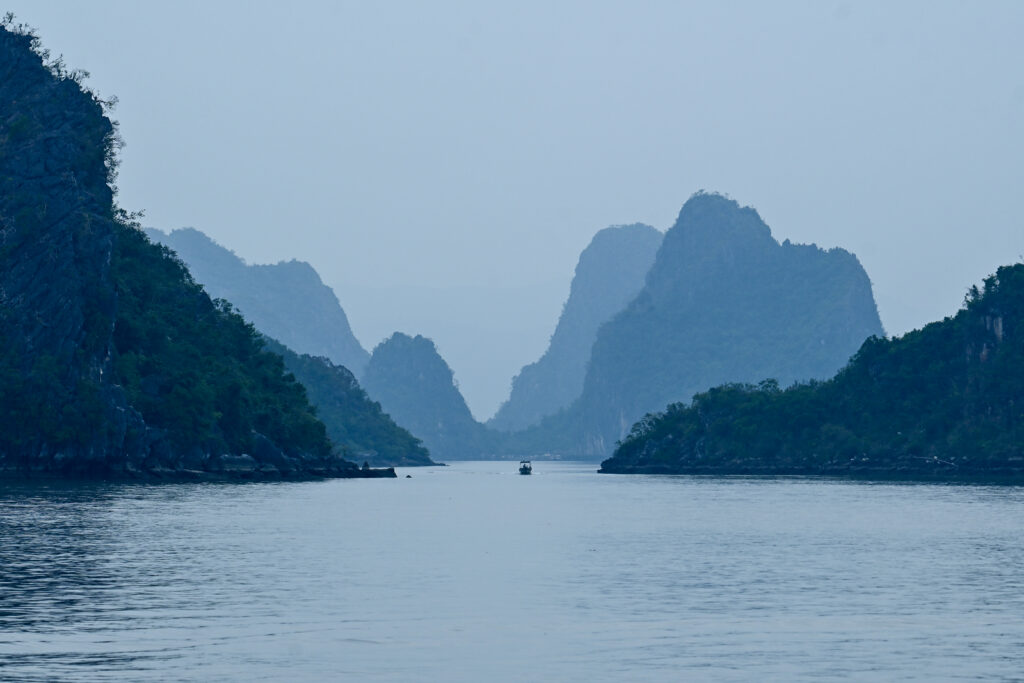Wow! What a riot of colour, sounds, smells, and tastes!
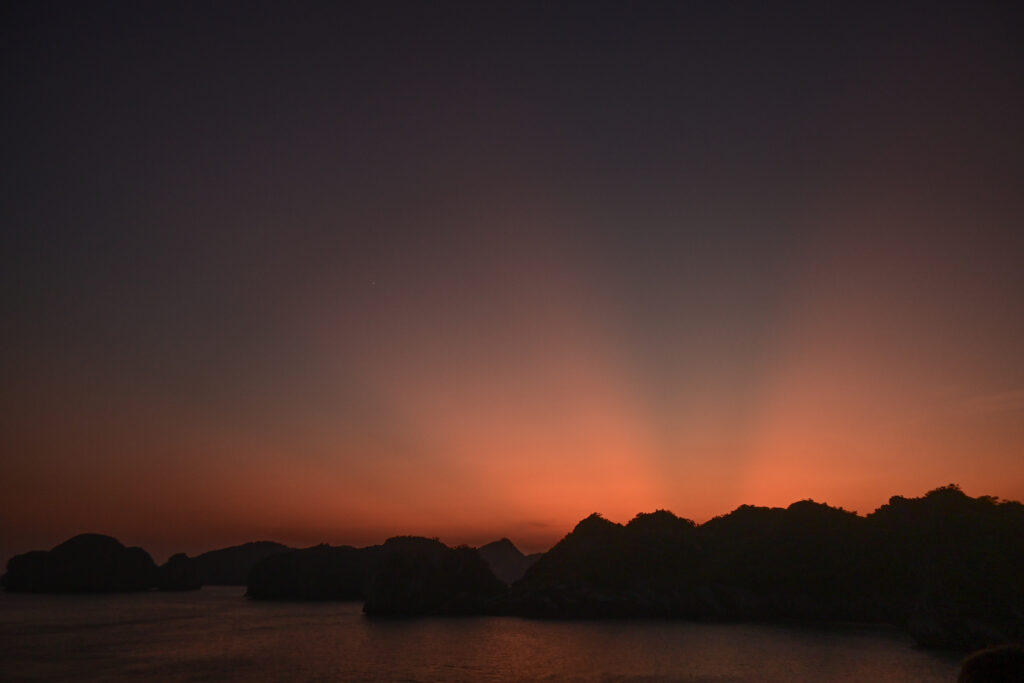
Our journey to Vietnam came with a few hiccups. Logan’s e-visa wasn’t processed properly so when we tried to board the plane in Istanbul, Logan wasn’t allowed to board! We had about 90 seconds to make a decision about what to do and decided that it made sense for Keryn, Lucas and Zara to carry on as planned and Logan would join us asap. After such a great experience with Turkish Air on our 5 previous flights with them, they were particularly unhelpful at this point. Thankfully our amazing travel agent Rachel (highly recommend her if you need a travel advisor: rachel@nztravelbrokers.co.nz) did her thing and 26 hours and one (flustered moment) black eye later, we were reunited! The kids were incredibly resilient to this sudden change of plans, and we were grateful that our first proper flight-mishap happened at this end of our trip, not at the beginning.
To ease into the change of food scene (plus we were tired, hungry and still missing Logan), our first meal was a pretty touristy stop – made even more obvious when you’re sent upstairs to the tables with all the other tourists. But it was absolutely delicious – and so started Lucas’s documentation of all things delicious! (just a few examples here)
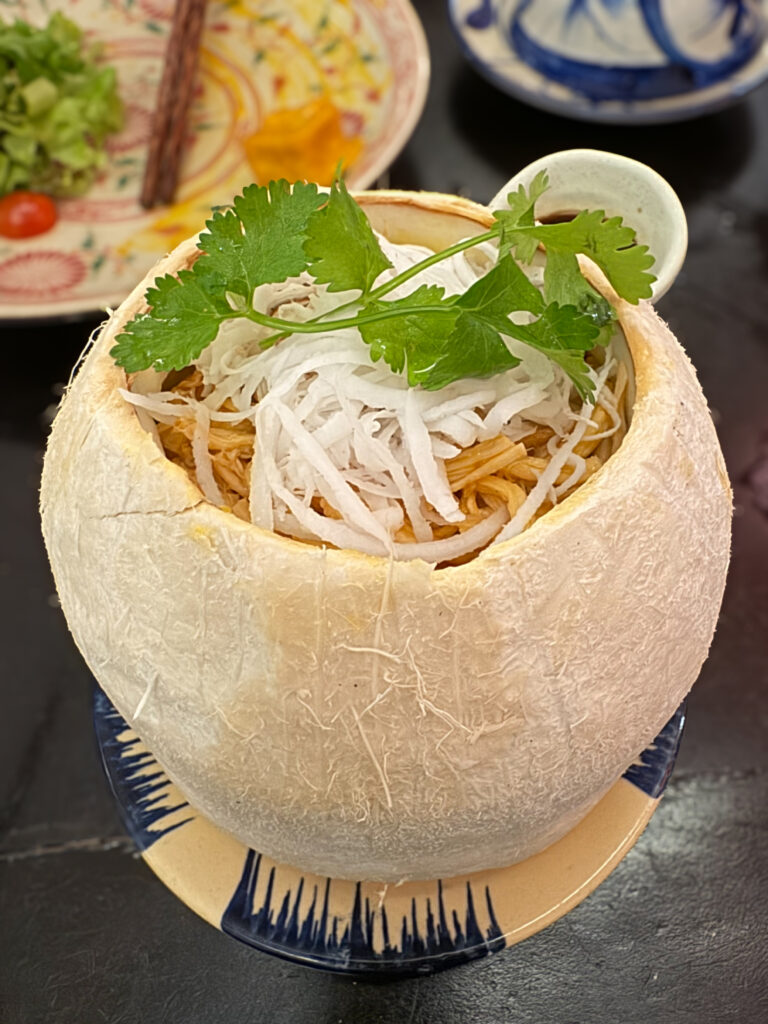

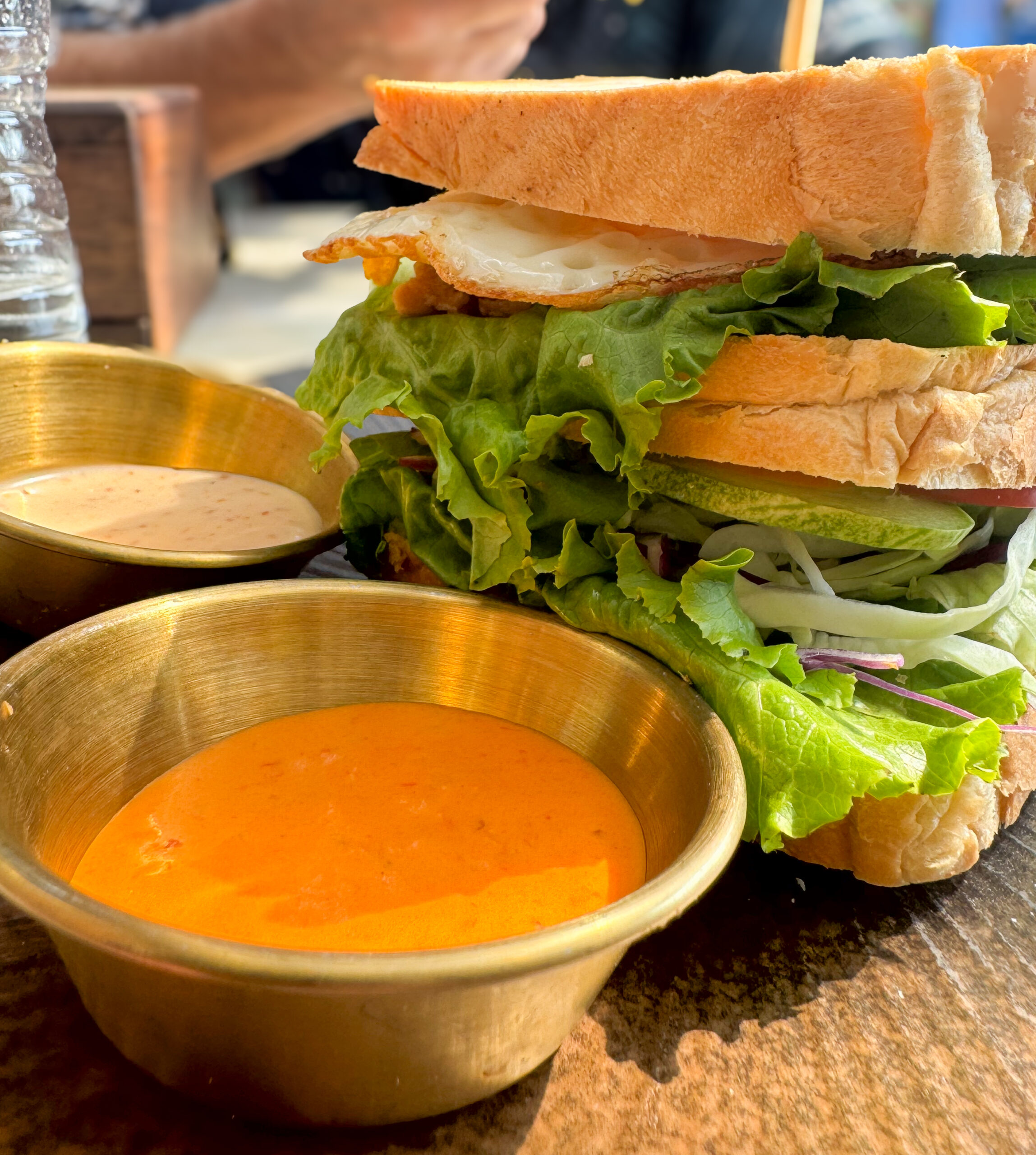
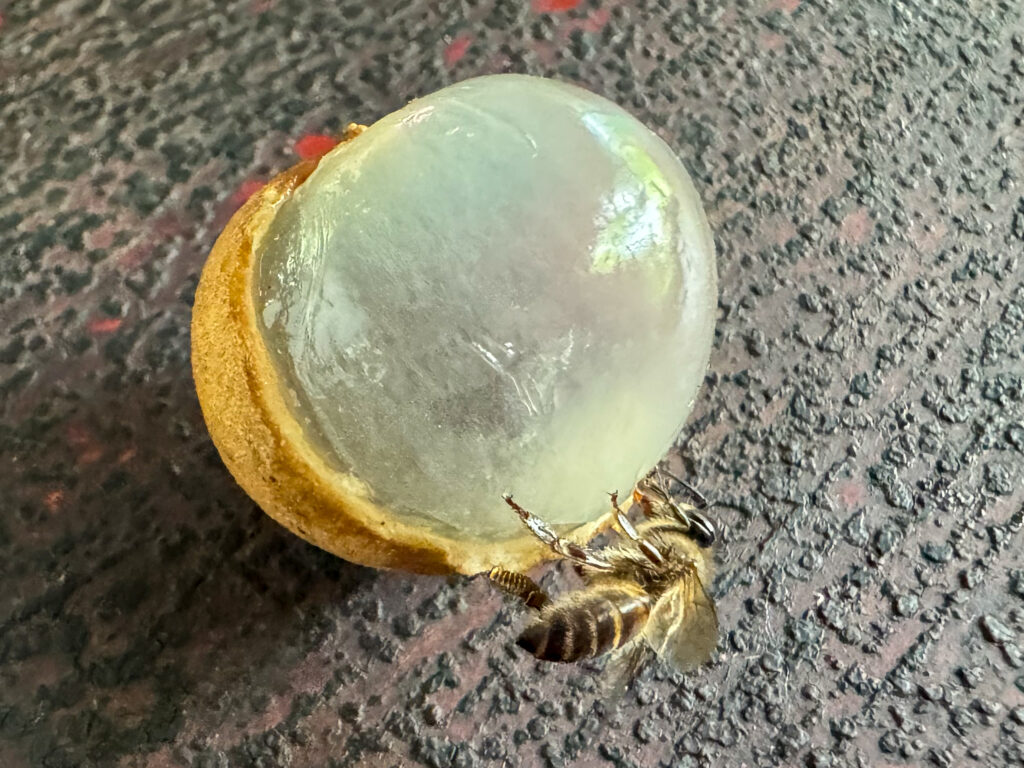
After so many months where our time change was only a plus or minus a few hours, jetlag kicked us around for our first few days in Ho Chi Minh City (HCMC) so we took it slow. HCMC is such a wonderful, bustling city!
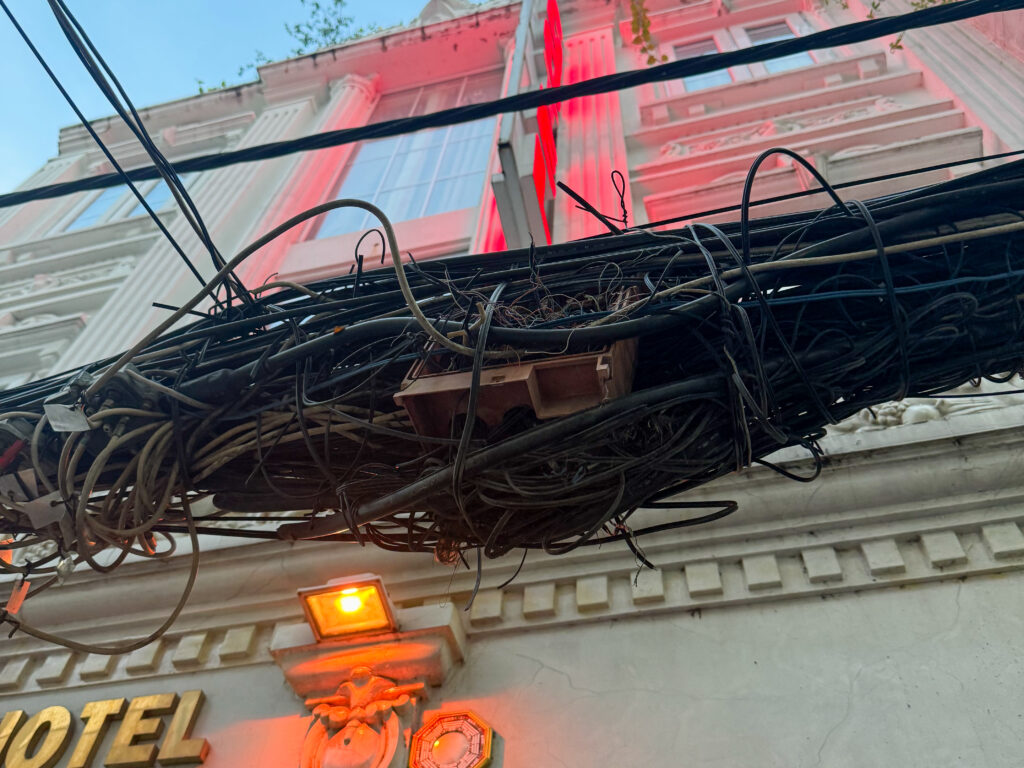
The number of scooters going in every direction is quite remarkable but we were amazed at how well it just ‘worked’. The honking seemed to be just a friendly “hi, I’m here”, and everyone seemed to be very patient waiting at traffic lights, or for people driving/scootering slower, or for something that would cause a driver to stop momentarily. Almost everybody was adhering to the 2007 law making helmets mandatory and the organised chaos was really very calm. Whilst crossing the road the first few times was a little bit nerve-wracking, we were soon boldly stepping out onto the road with one arm in the air, trusting that as long as we made no sudden movements, the swarm of traffic would just flow around us.
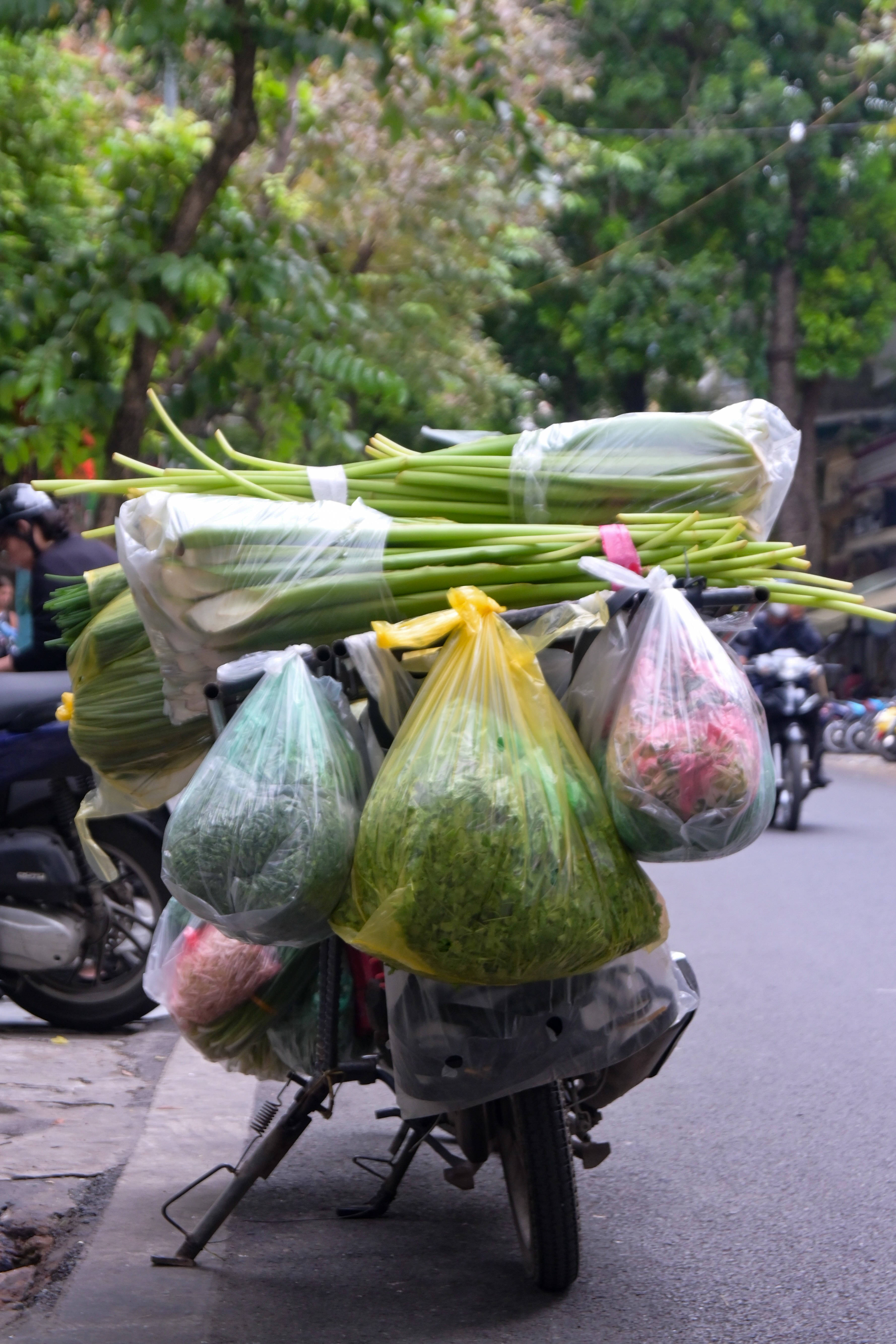
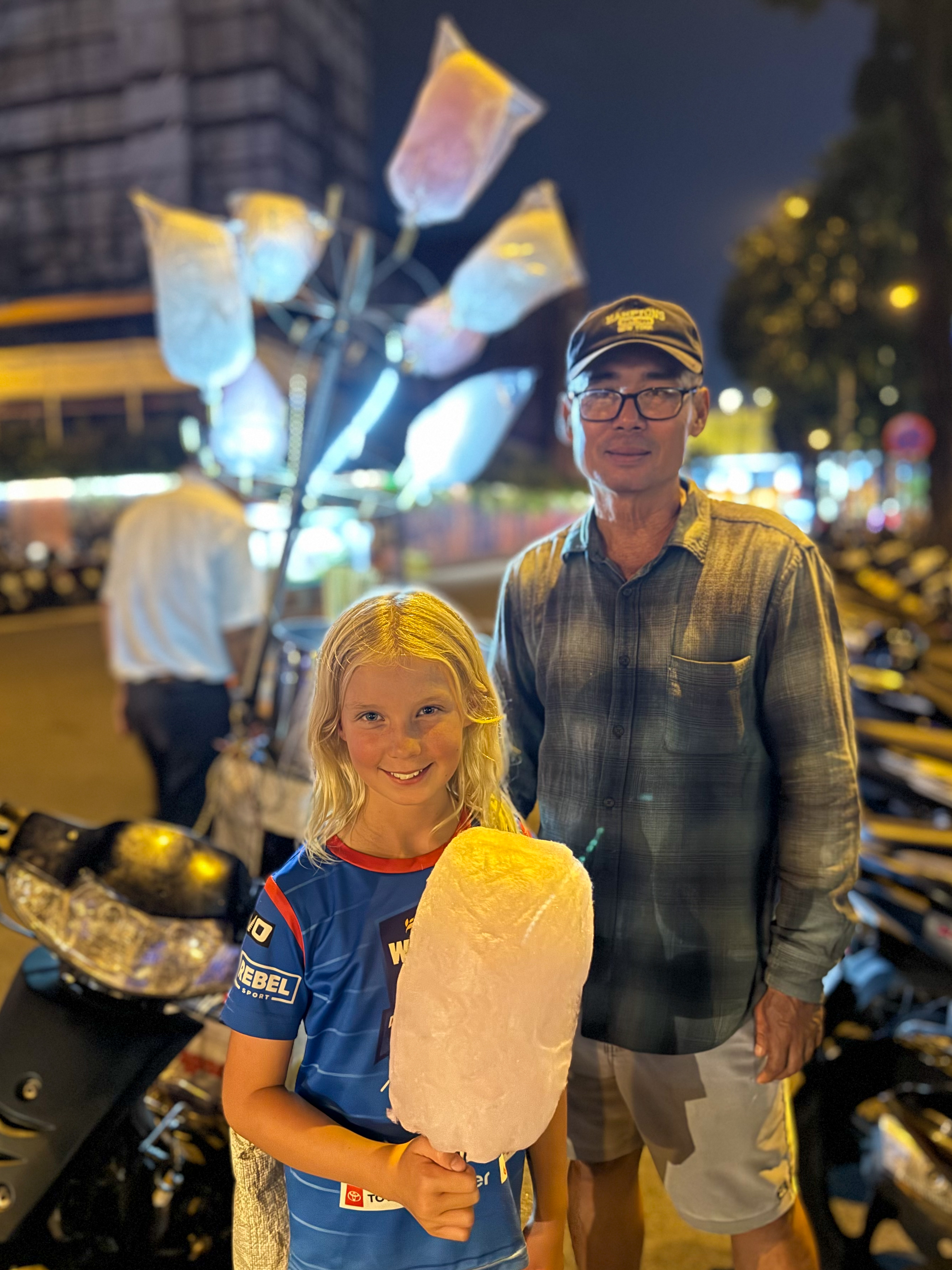
One afternoon we took a tour to the Cu Chi Tunnels, a network of underground tunnels that were originally built by the Viet Minh to connect villages during the fight against the French in the 1940s and were used again by the Viet Cong (the Communist National Liberation front fighting against the Southern Vietnamese Army and USA) during the Vietnam-American conflict from 1955 to 1975. The existing tunnel system was repaired, and the network expanded linking villages all the way from the Saigon River to the Cambodian border. The Vietnam War is called the American War here, or in full the “War Against the Americans to Save the Nation”. These tunnels have been preserved by the Vietnamese government to memorialise what was seen as a heroic contribution to the victory of the Communist Northern Vietnamese party.
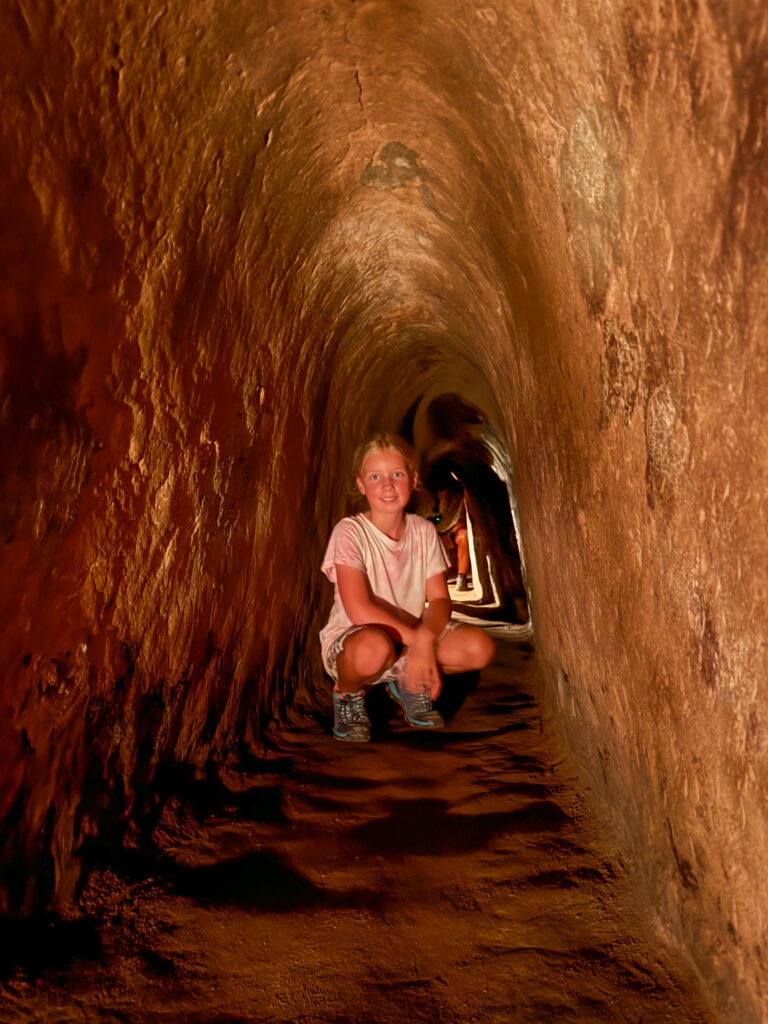

The tunnels were originally short paths used to hide resistance forces, documents and weapons, and support communication, built separately by each village in the area. To aid communication between villages, these paths were later linked, forming a complex interconnected network. By 1965, 200 km of tunnels and 500 km of surrounding combat trenches were dug, which were turned into a system of crisscrossing tunnels with three floors – 3m deep, 6m deep; and 8-12m deep with a secretly-covered ventilation system. Inside the tunnels were different areas – kitchen and dining rooms, meeting rooms, hospitals, sleeping barracks, as well as below-ground workshops and forges for making booby-traps and weapons (using bombs left by the US and resources they stole directly from the US base). Over the course of the conflict, the tunnels were home (which in reality were horrific conditions) to over 16,000 Viet Cong and local villagers.

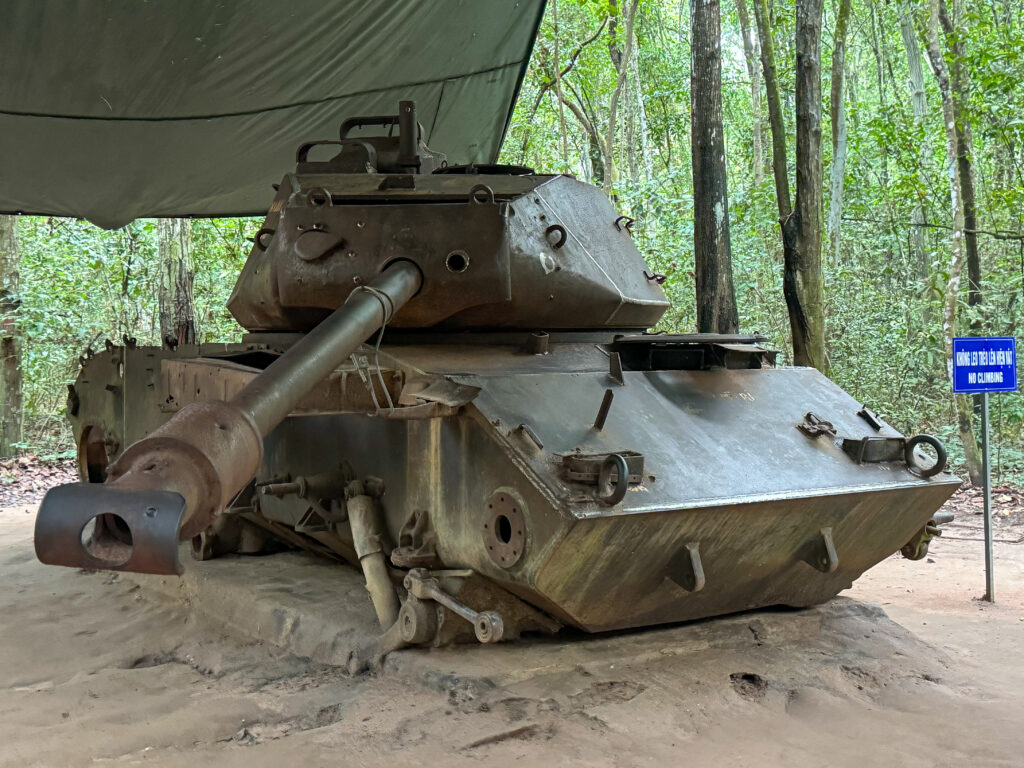
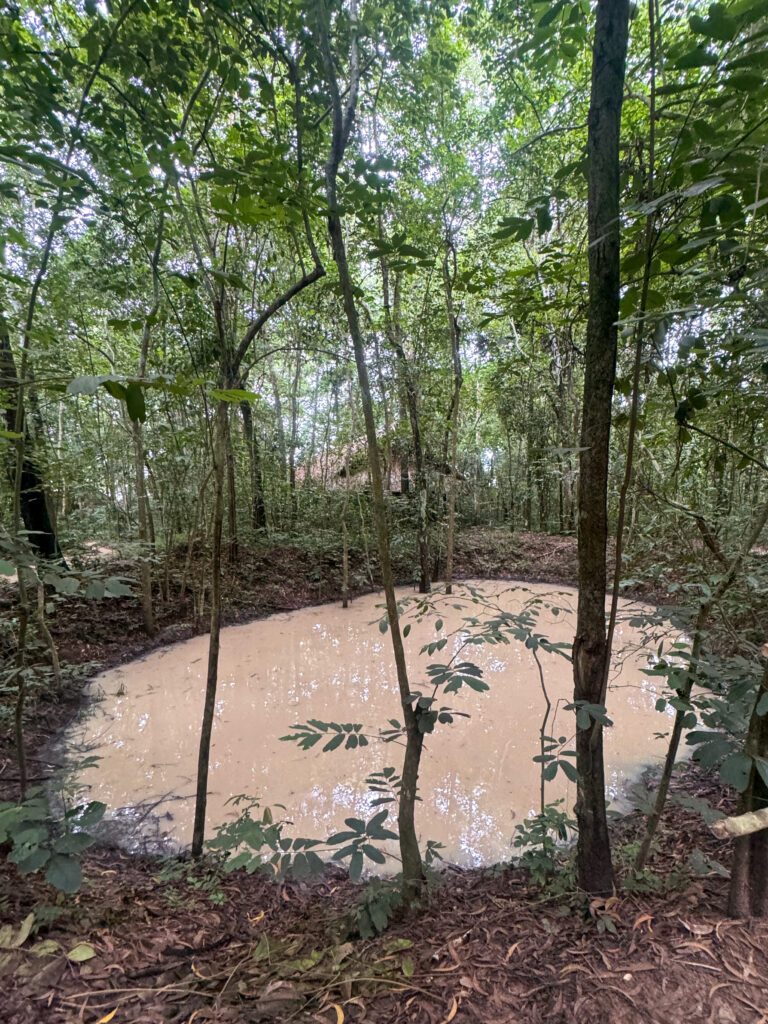

Despite heavy bombing in the south by the US, the tunnels remained largely undamaged. In an effort to help control and fight the Viet Cong, especially as they were so close to Saigon and a real threat to the Southern Vietnamese army, the US built a base in the area which, unbeknownst to them, was immediately above the Cu Chi tunnels! The Viet Cong were everywhere and nowhere – they appeared without warning, attacked in the middle of the night, set up thousands of booby traps and yet they were nearly impossible to find.
There has been much debate over who won the Vietnam-American conflict, but there is no doubt that it was brutal, traumatic and deadly, with many on-going casualties and consequences to this day. The US withdrew from Vietnam in March 1973 and the two Vietnams were united under a communist banner in July 1976.
The next day was my birthday – the kids had made me beautiful cards and I had a very special day. We visited the Ben Thanh Market and tested our bargaining skills on a few counterfeit items and some pretty crafts, the kids saw how to make a sugar cane drink, and Zara was given a flower.
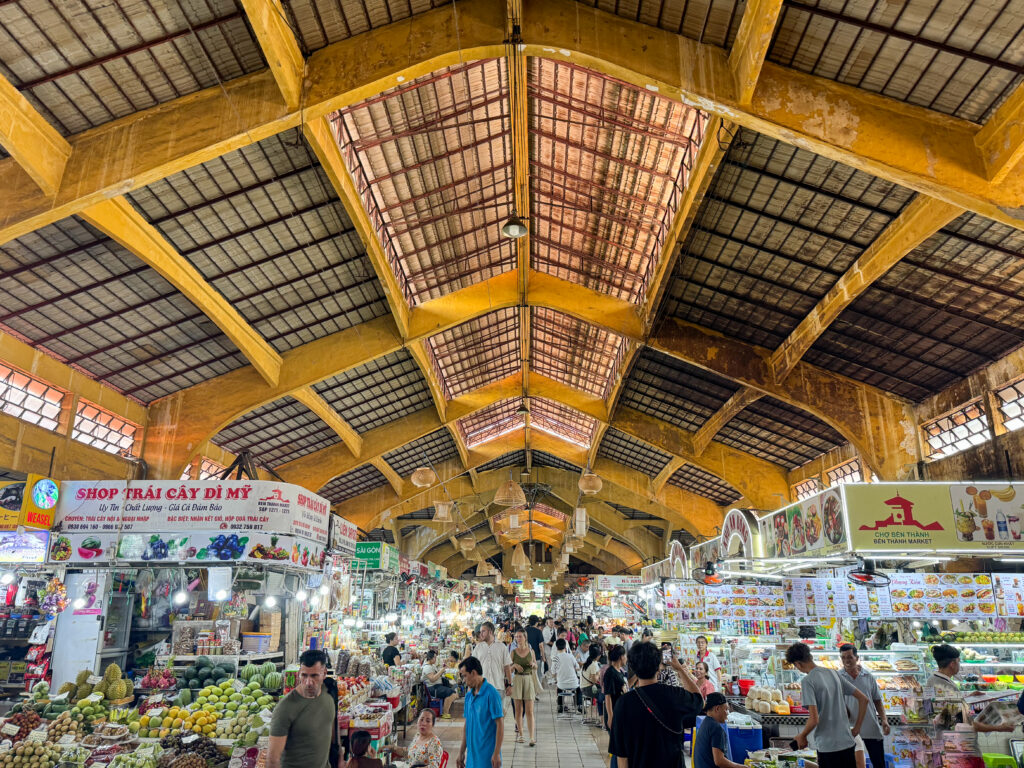
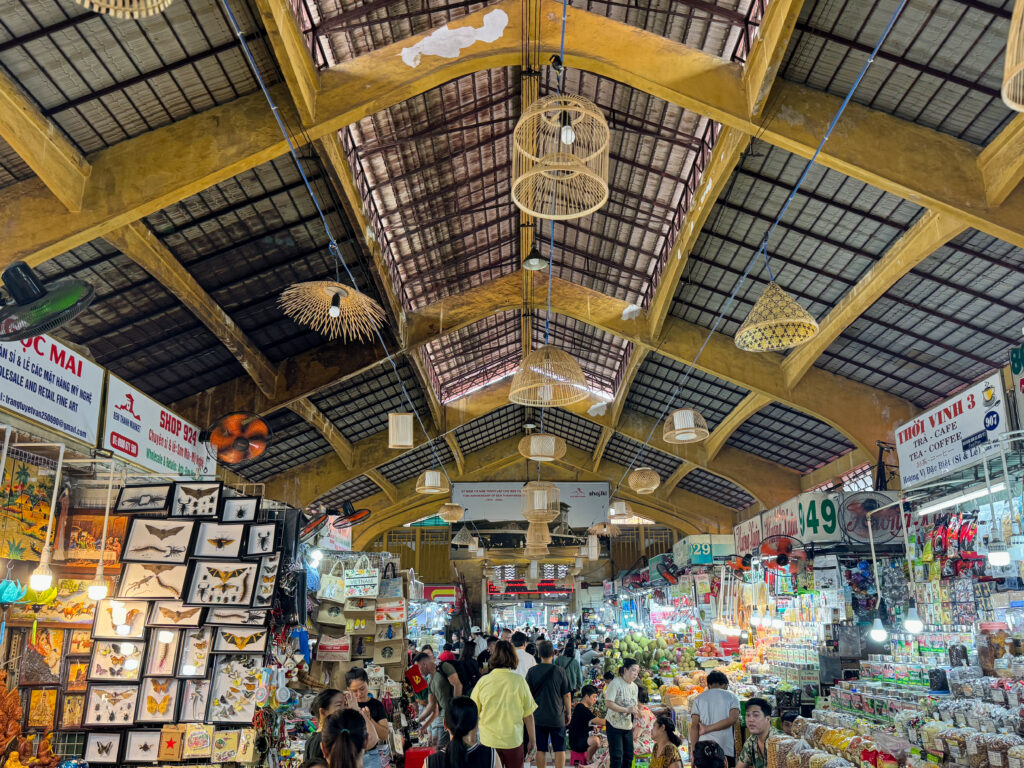
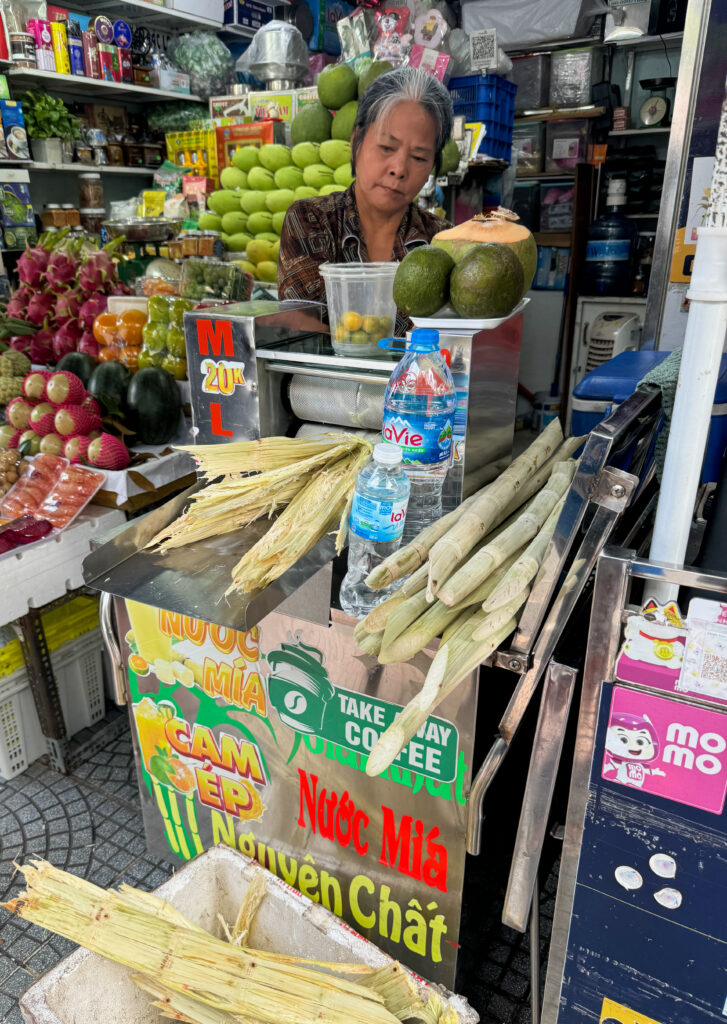
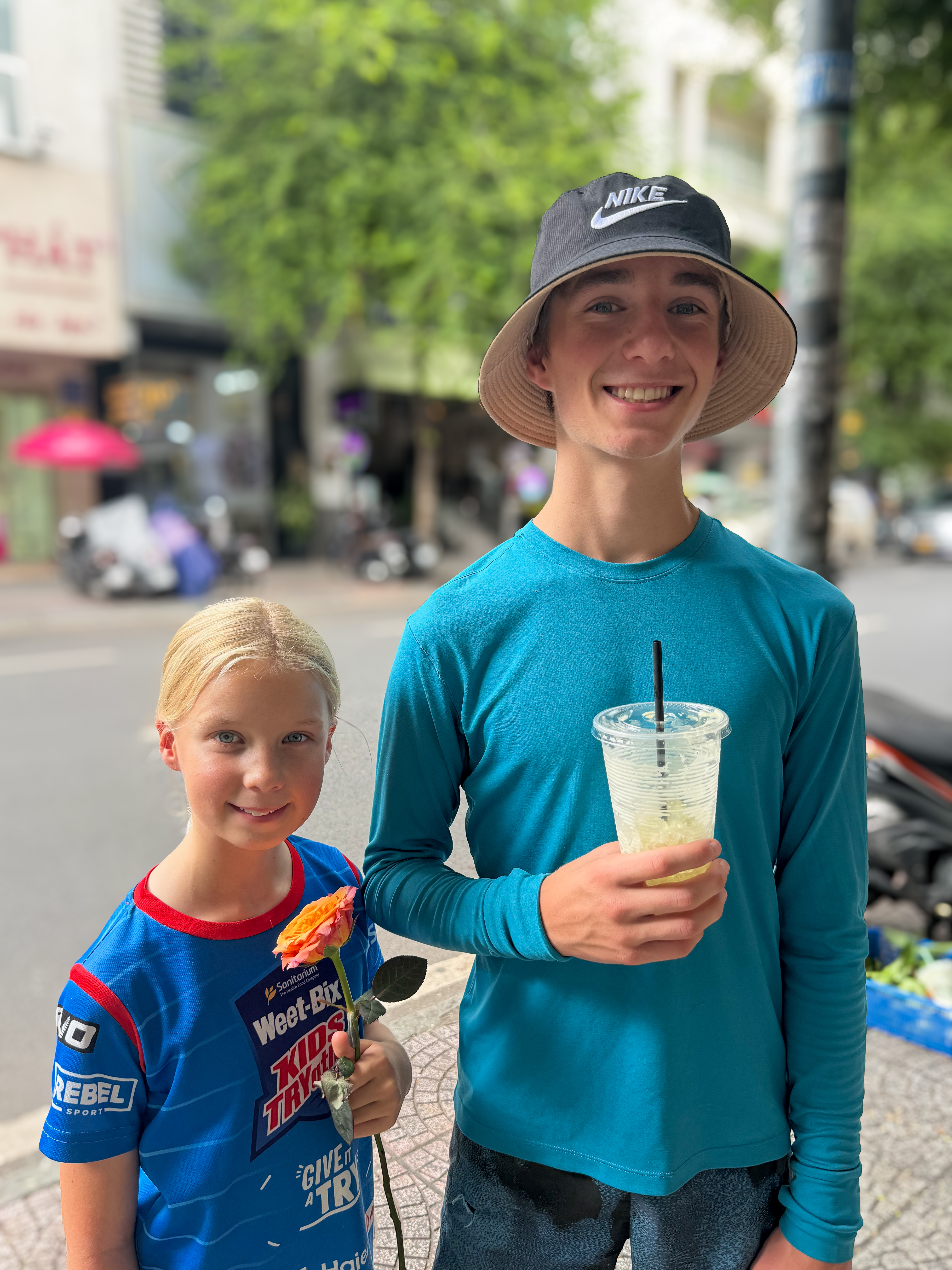
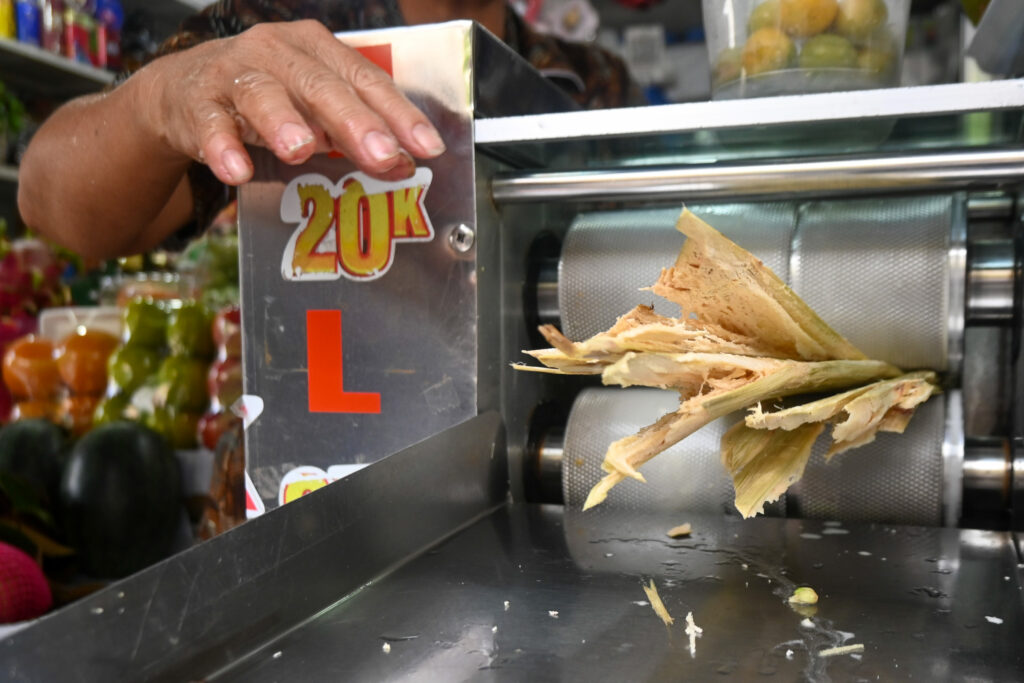
In the evening we joined an XO Foodie Tour on scooters (thanks for the recommendation Melina!). It’s a tour group run entirely by women – other than 1 silent shareholder and a security/support team that follows the tour (also silently), everyone in the company is a woman.

Dressed in their traditional Ao Dai, the women took us all over the city to three different non-tourist restaurants, a local food market, and another beautiful spot to give us time to build our appetite back up. They brought us out dish after dish after dish – unlimited food and drinks! SO YUMMY!
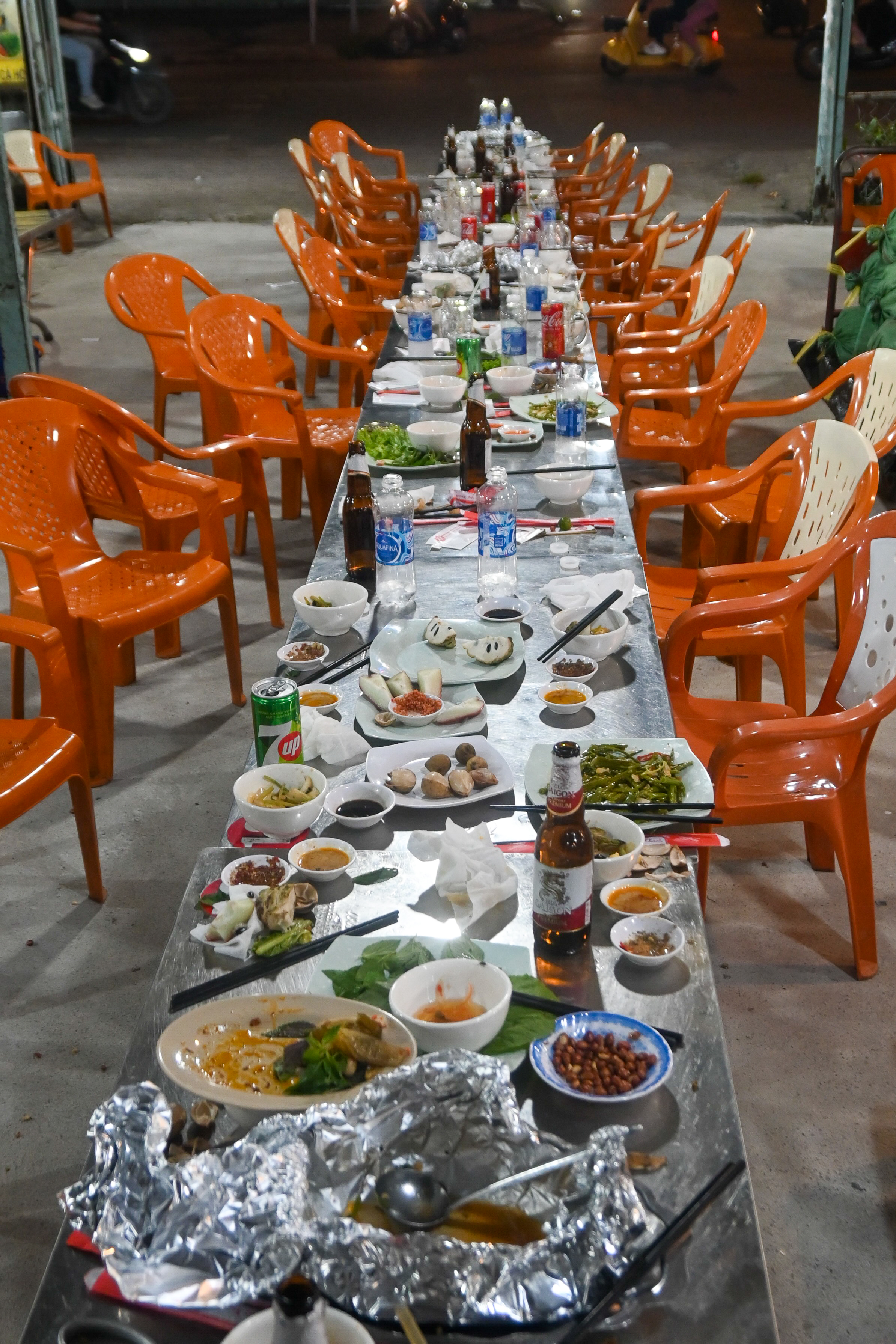

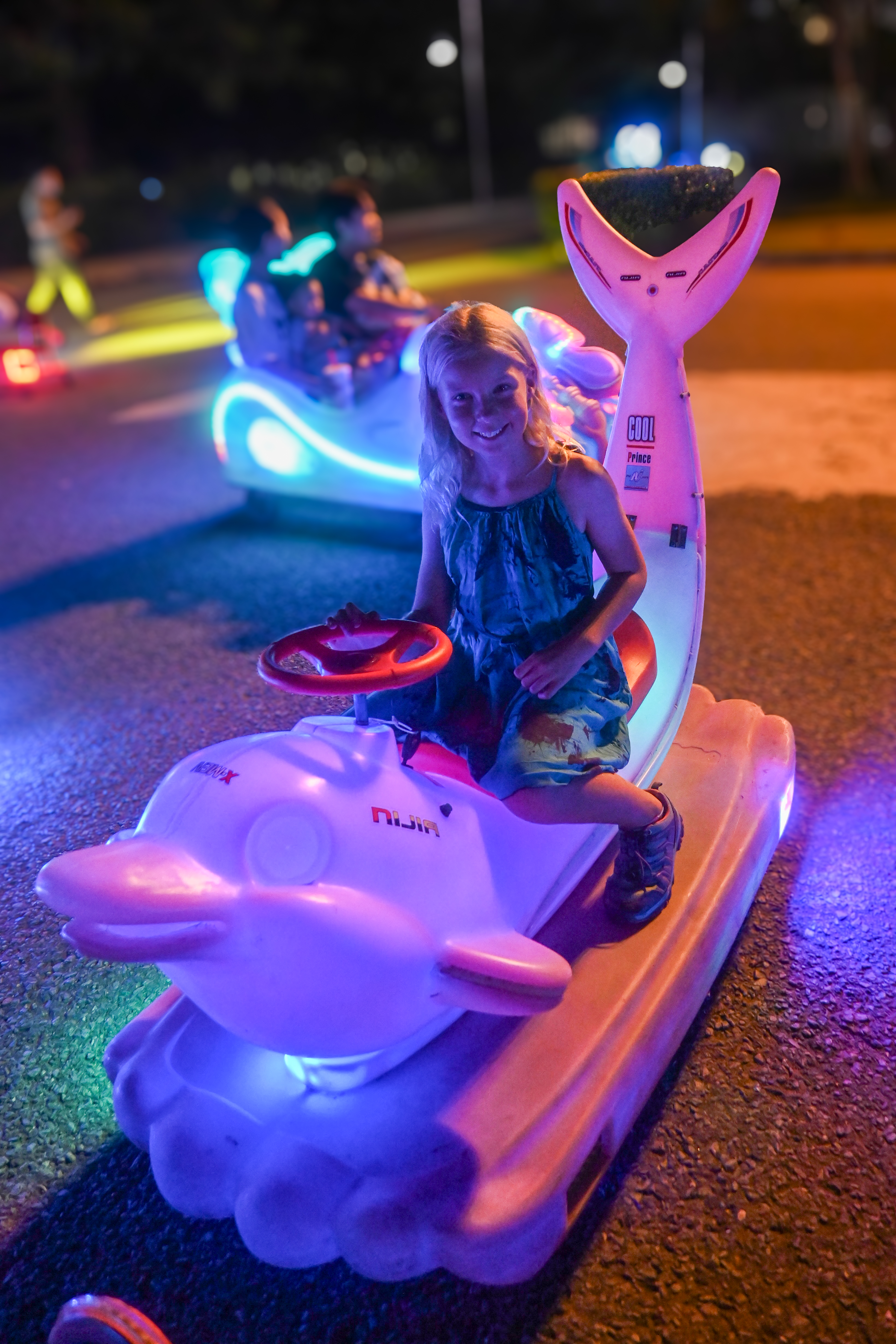
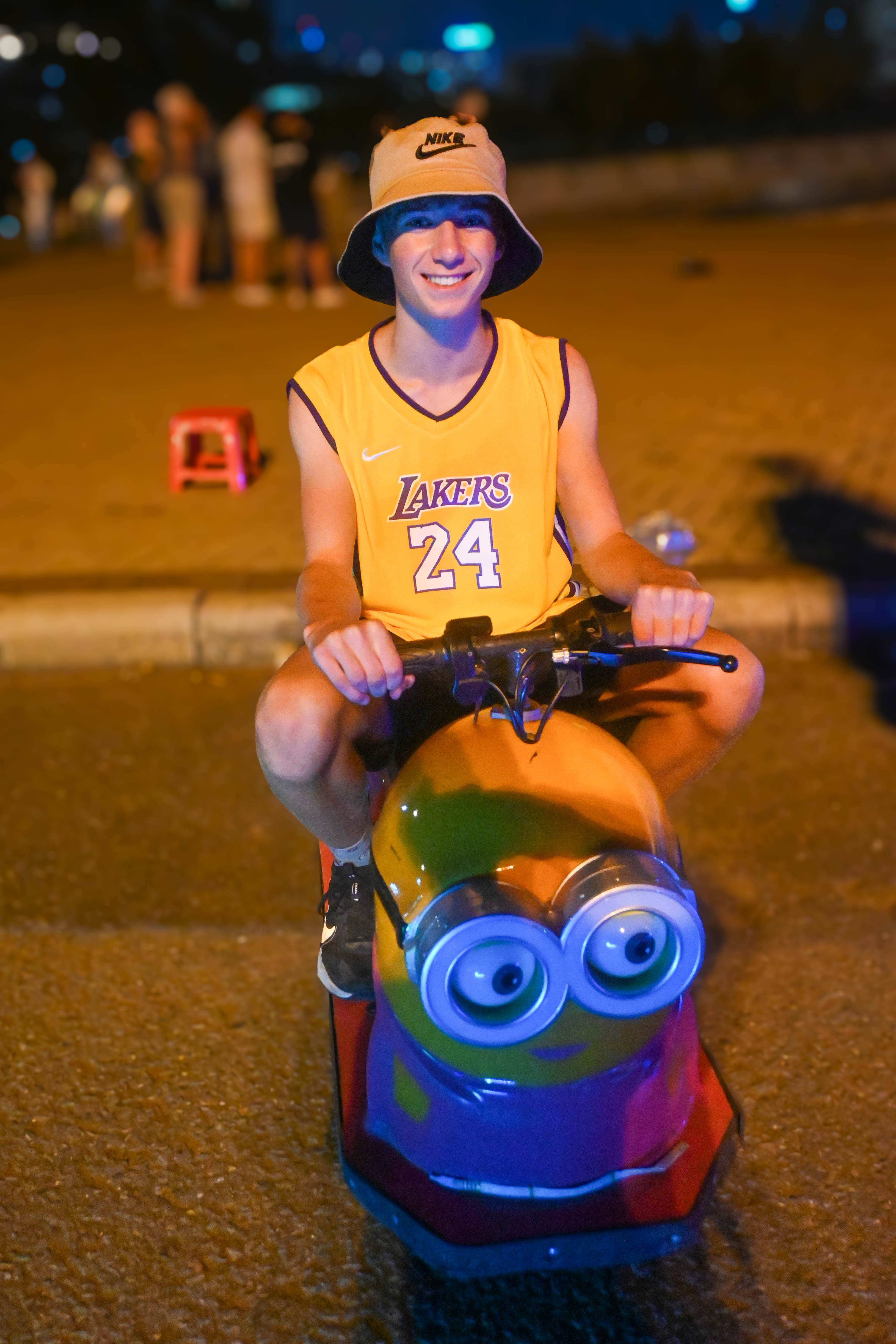
The kids absolutely LOVED the scooters zooming in and out of traffic! It was so fun!
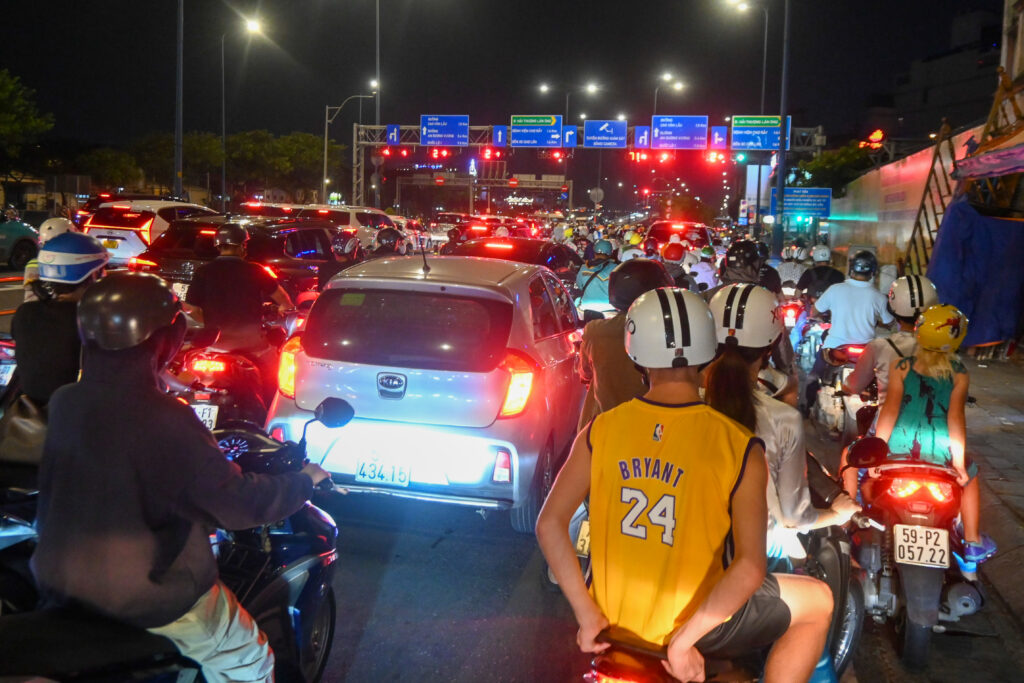
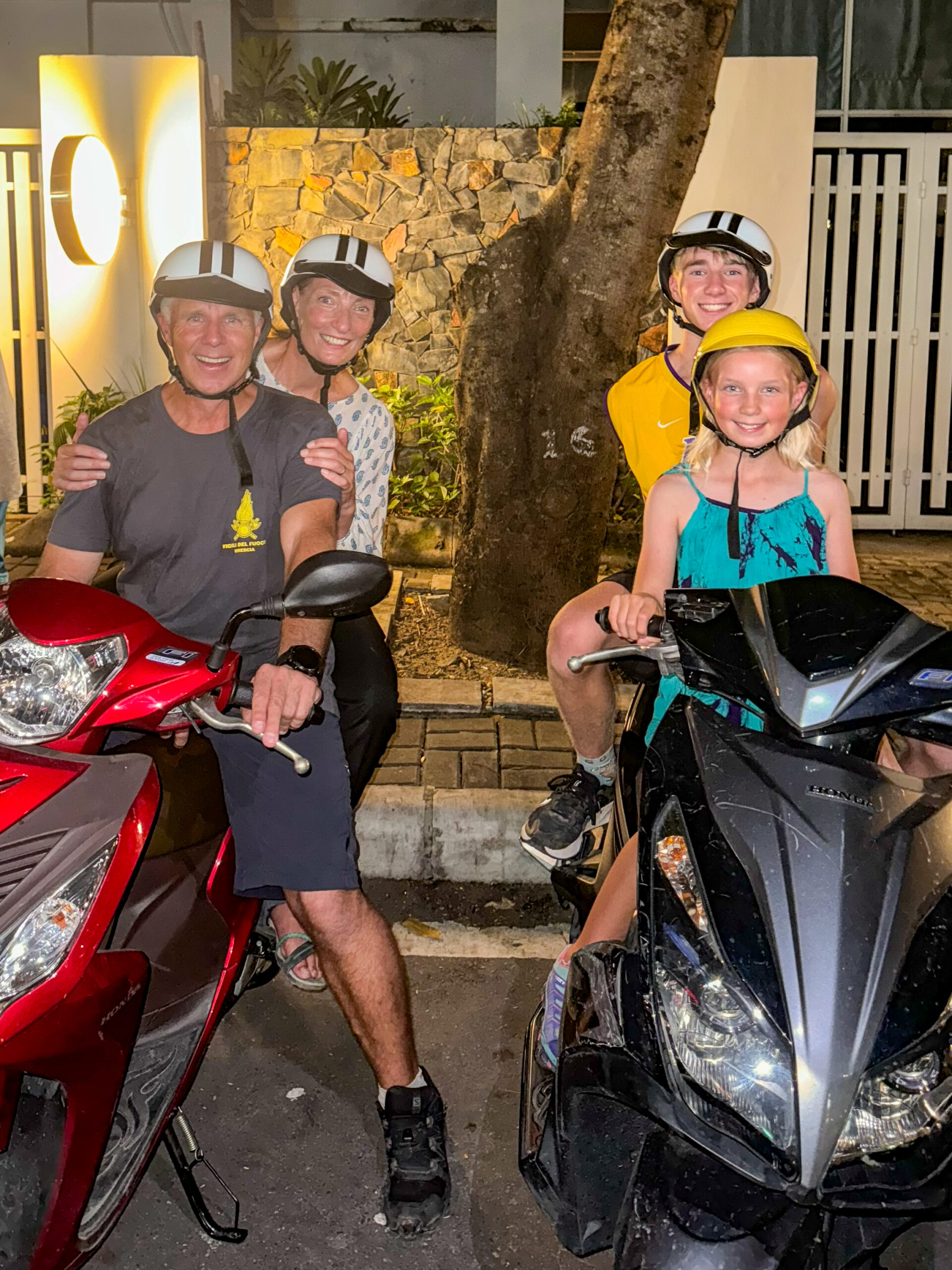
We played games with the group, learnt how to “Cheers” in Vietnam and had so many laughs!
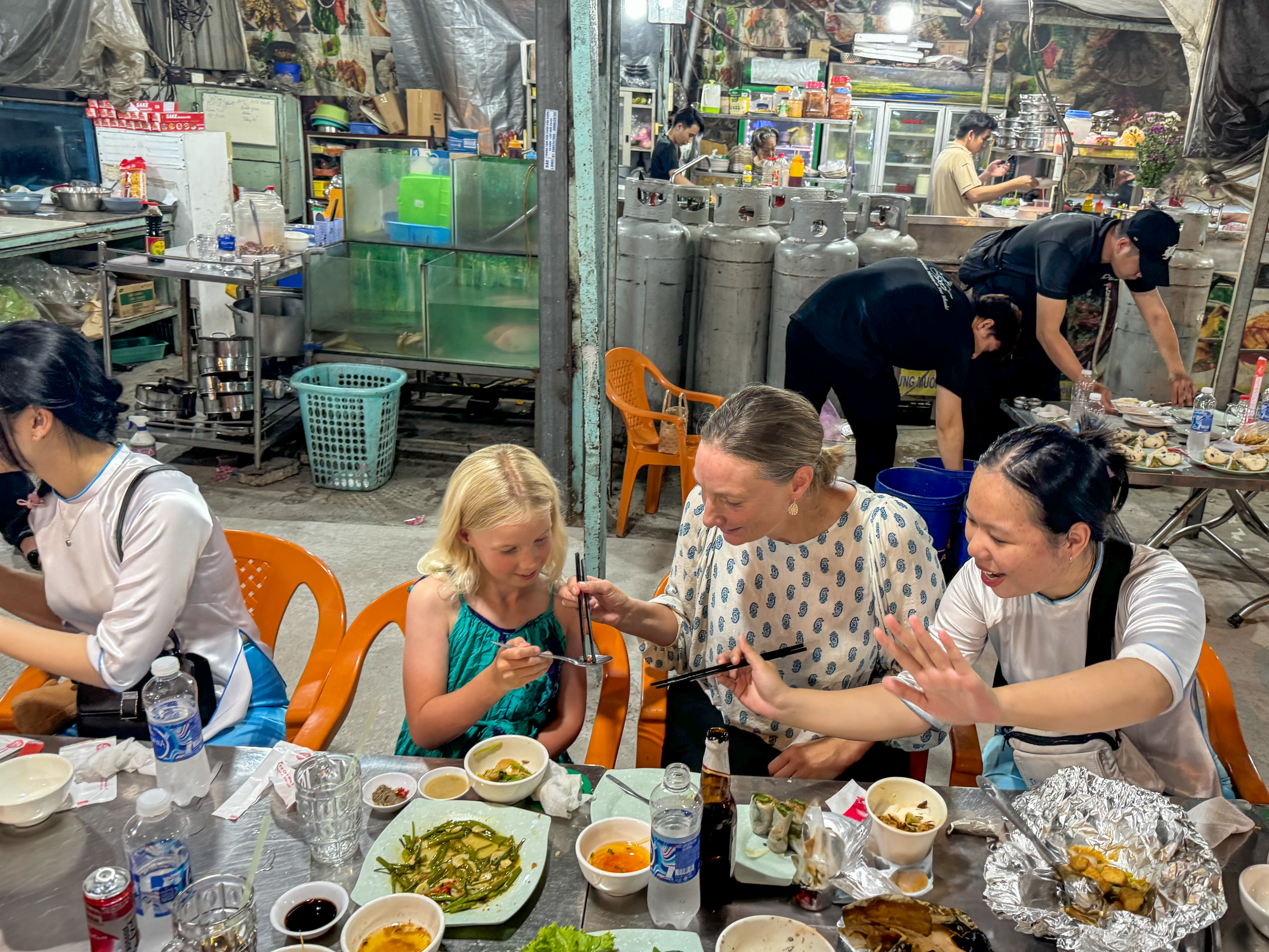
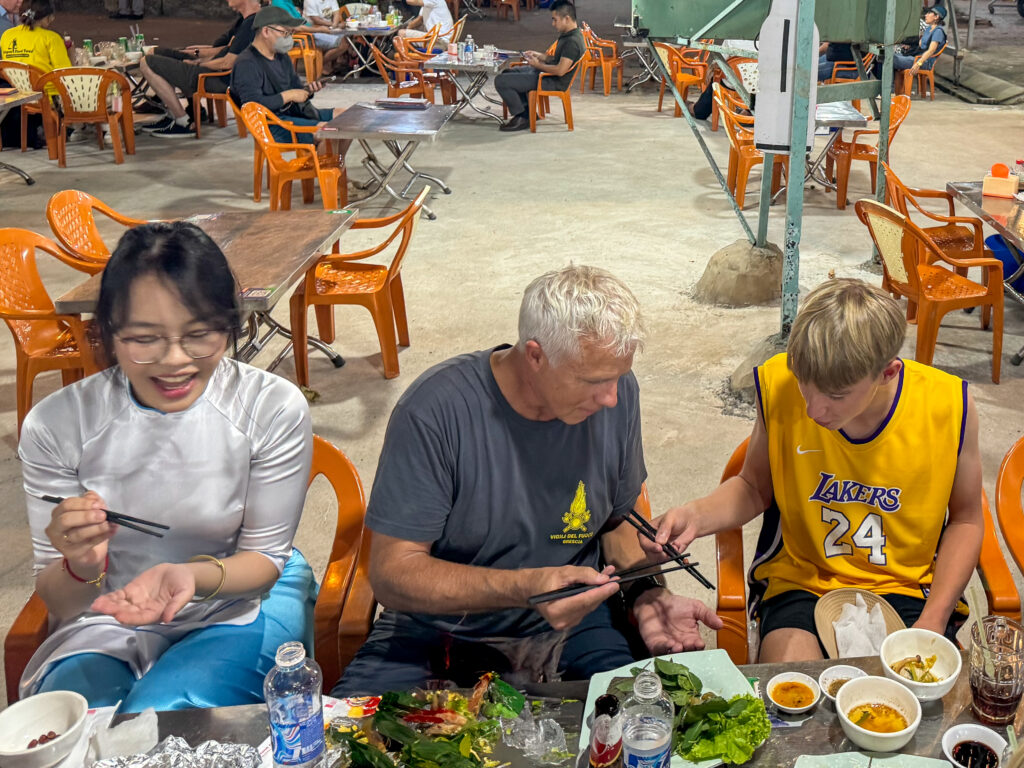
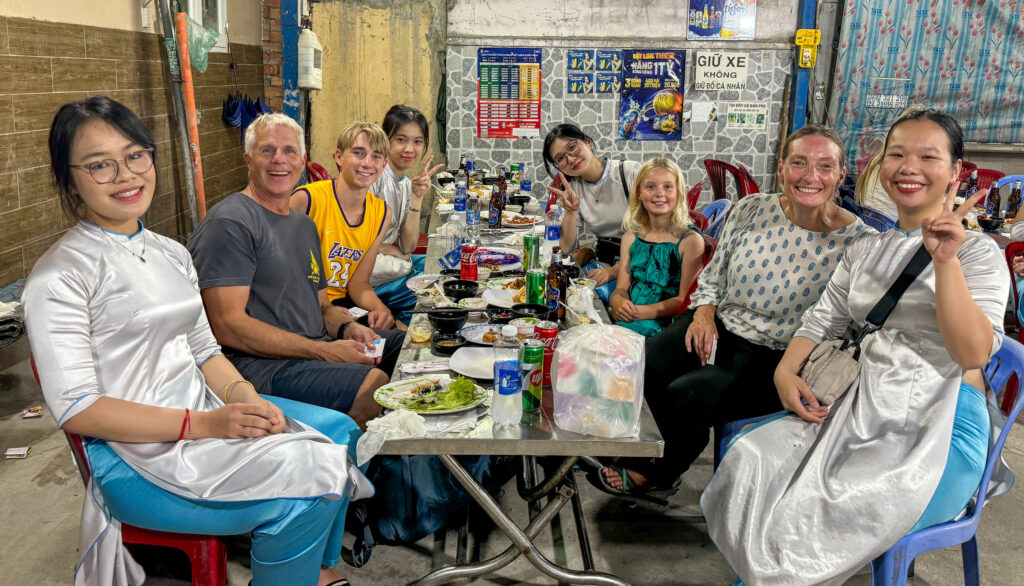
Logan organised a cake and the whole of the last restaurant sang Happy Birthday to me but we were far too full to eat it so we saved it for the next day. It was such a joyful way to spend the evening.

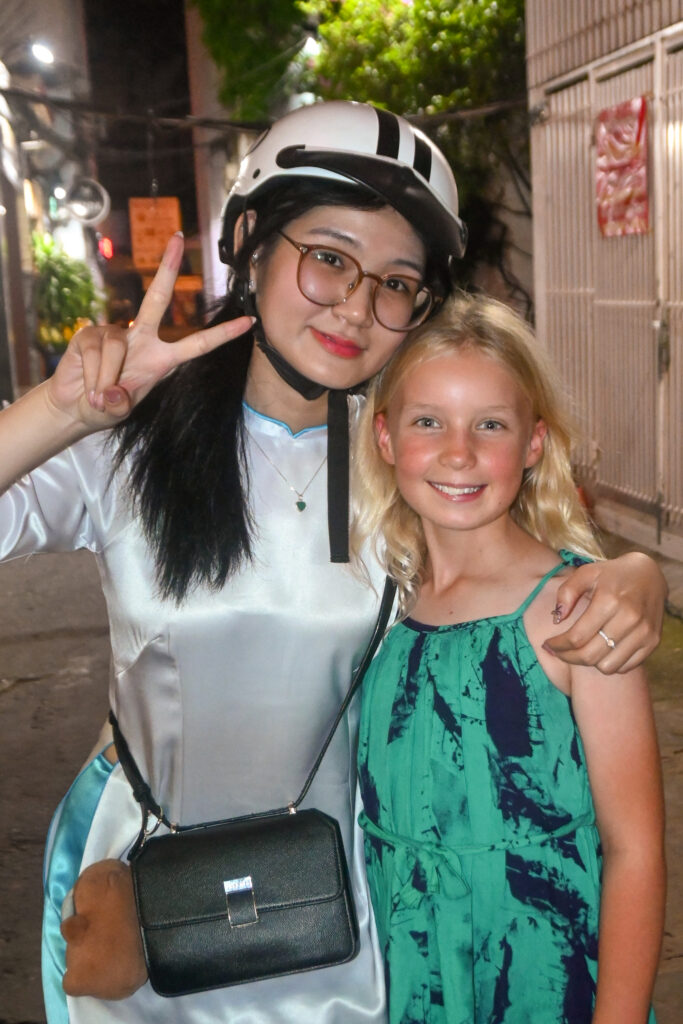

Our next stop was the Mekong Delta – a wonderful experience of rural life in Vietnam.
Cycling around the local villages:

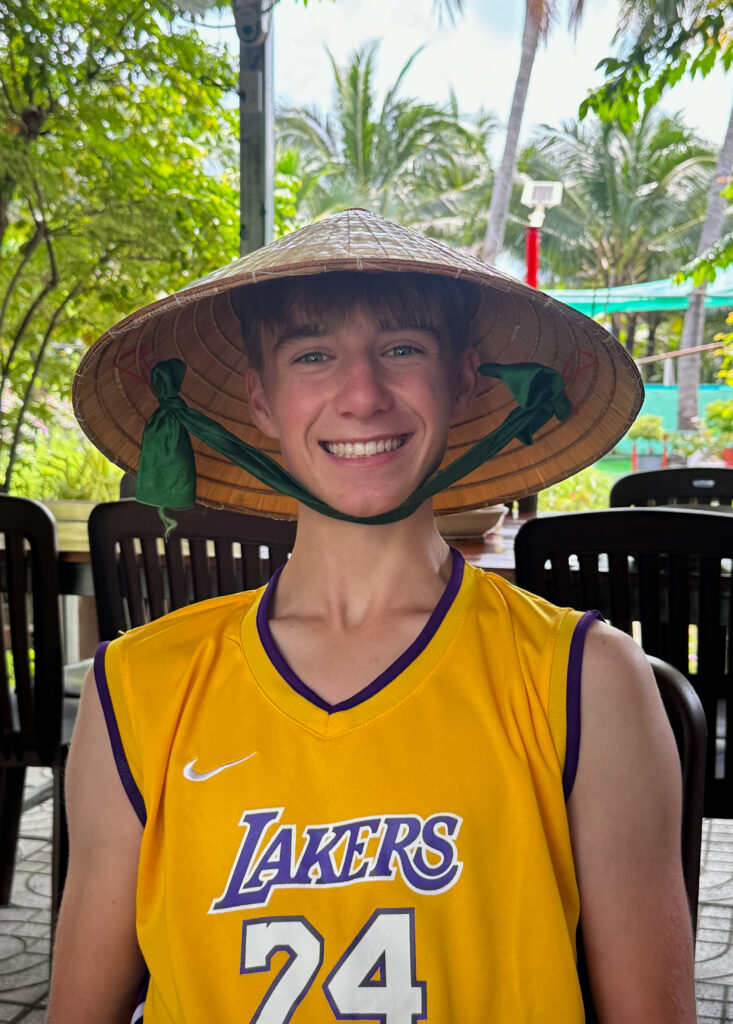
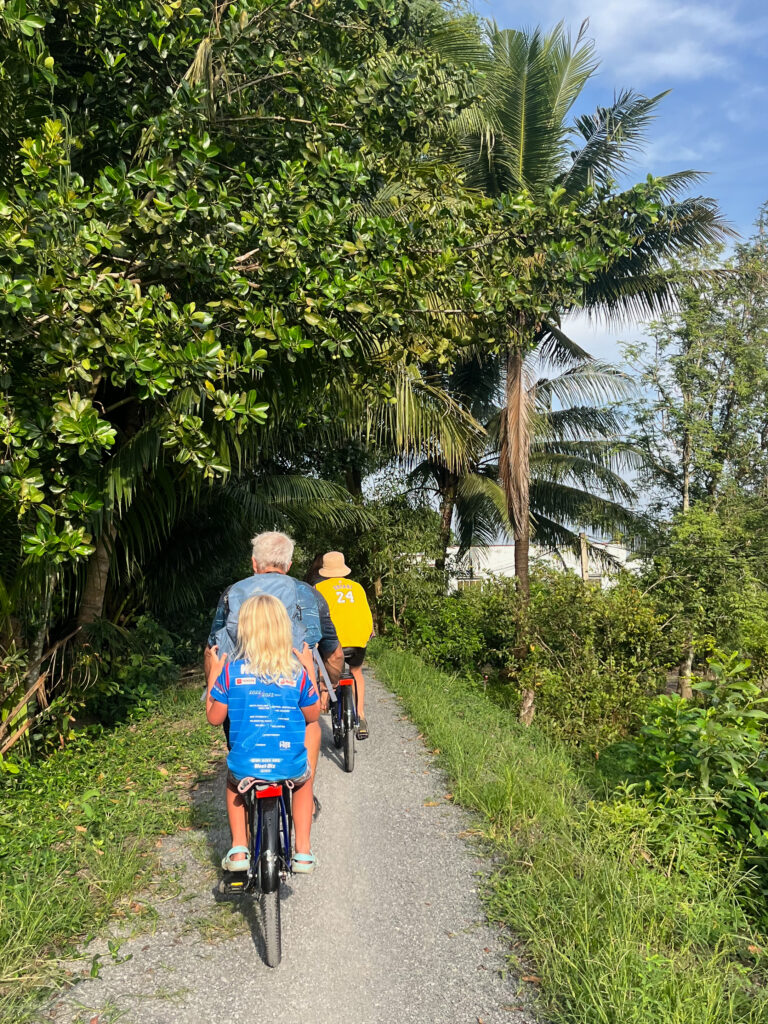

Visiting a coconut sweet factory:
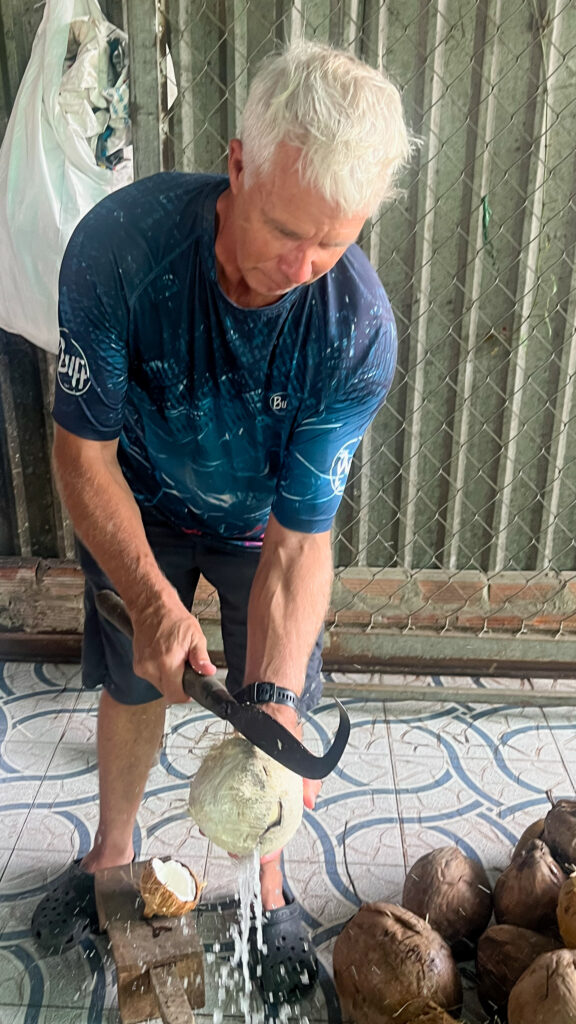

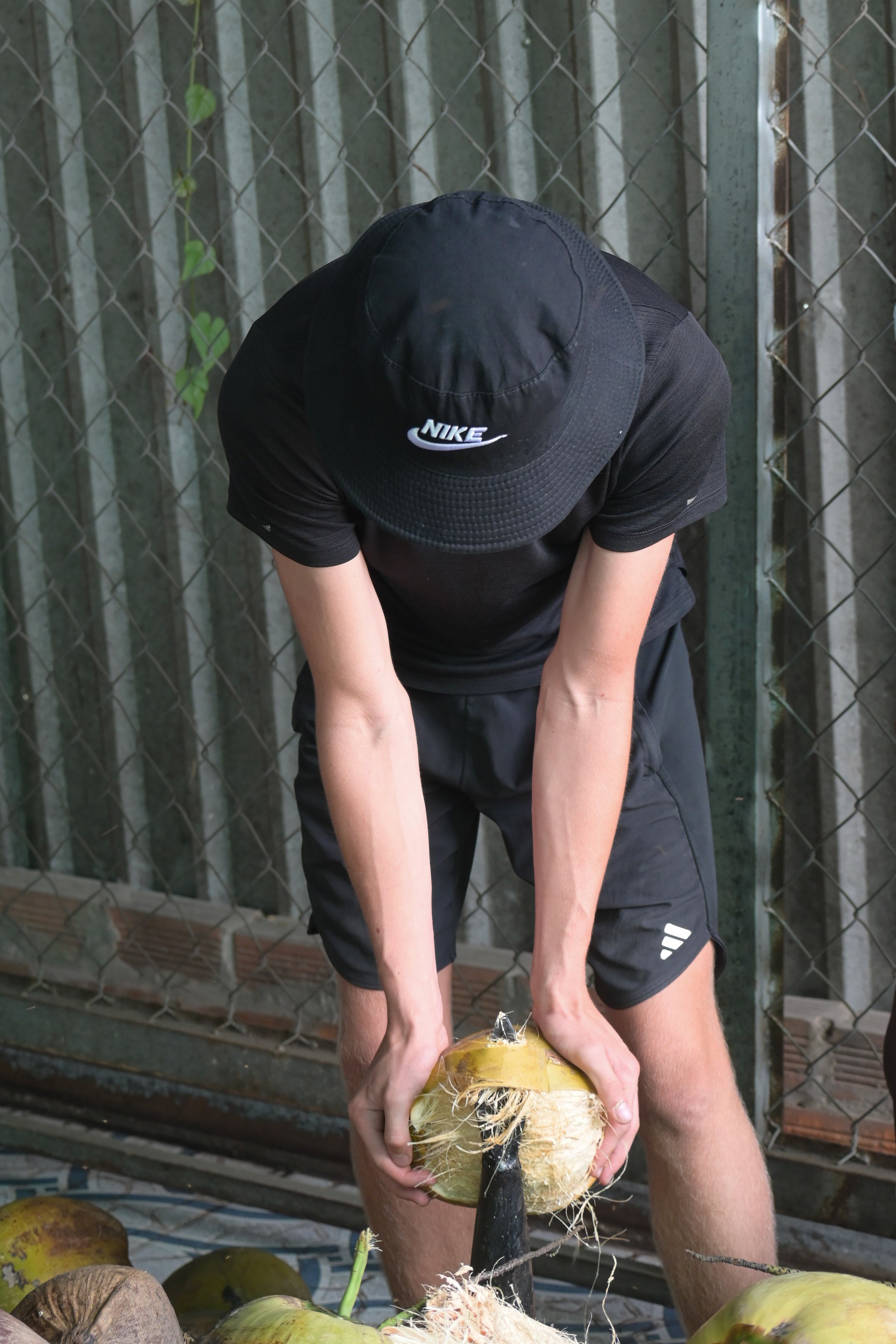
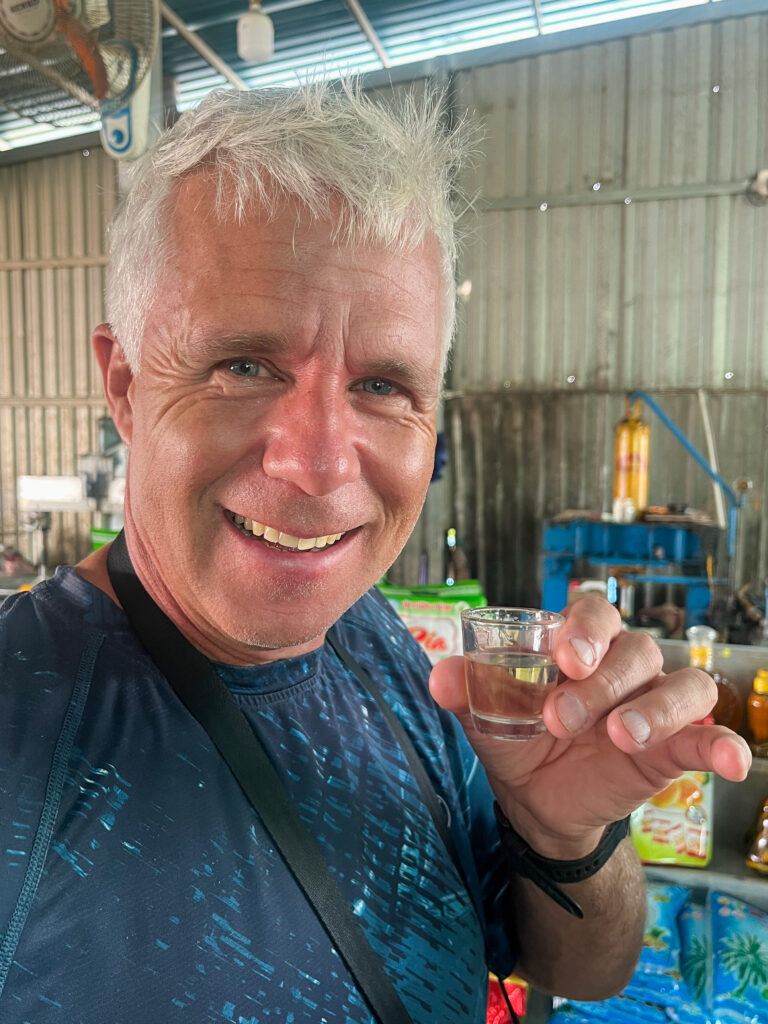

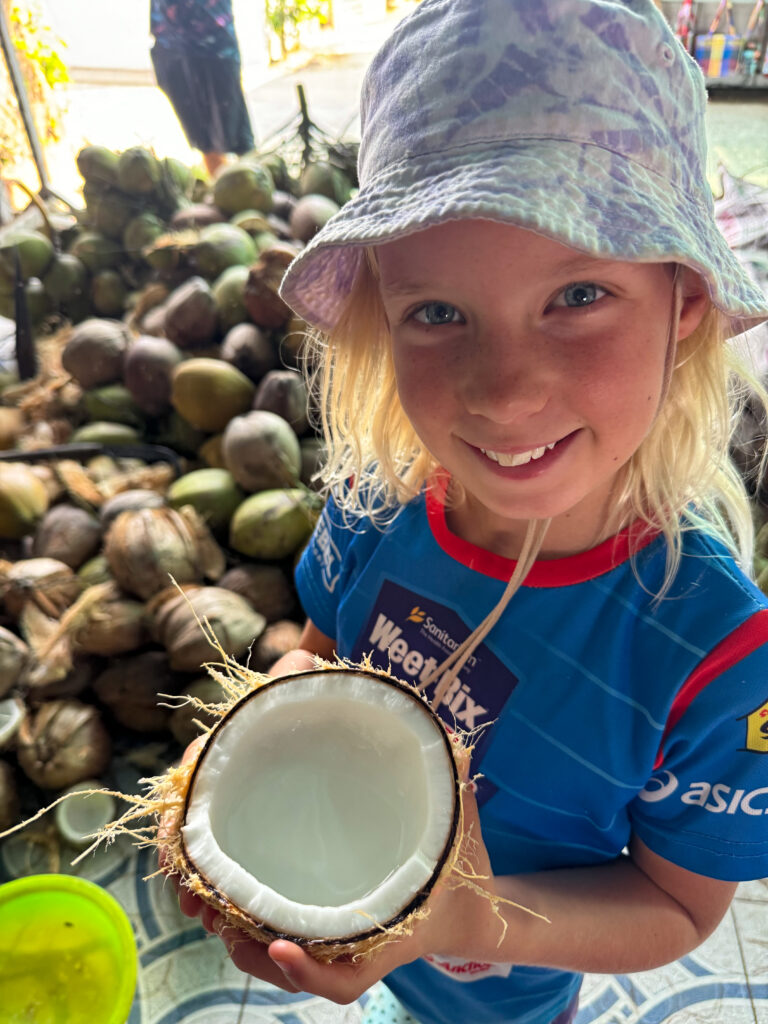
Floating down a tributary of the Mekong Delta:
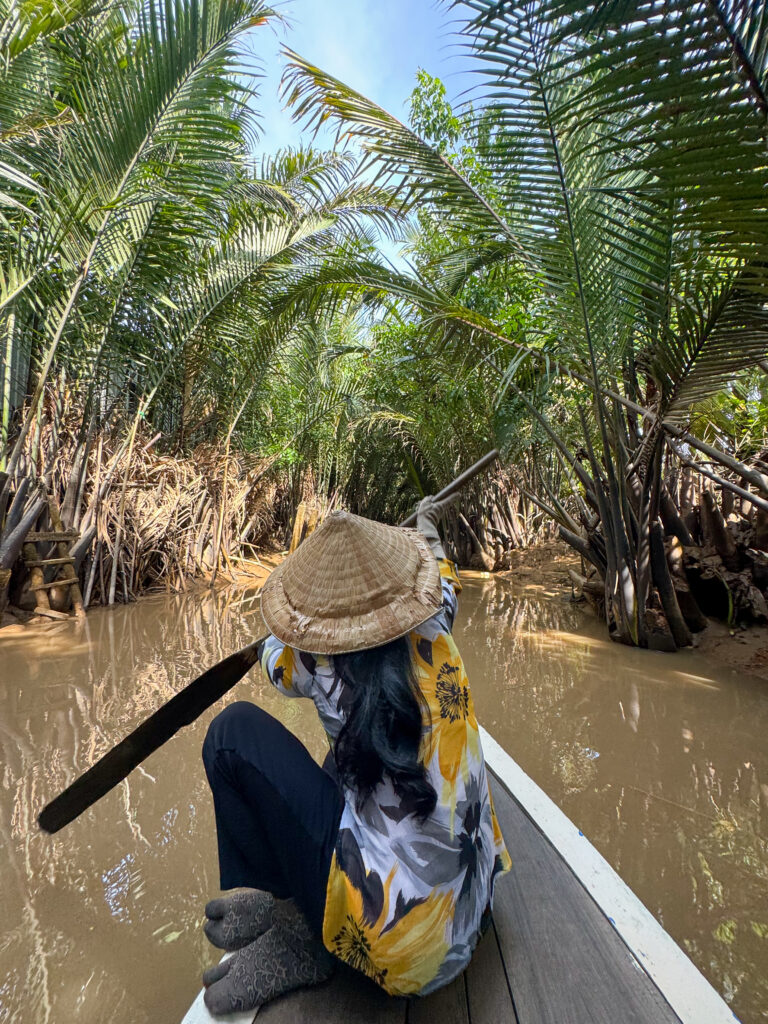
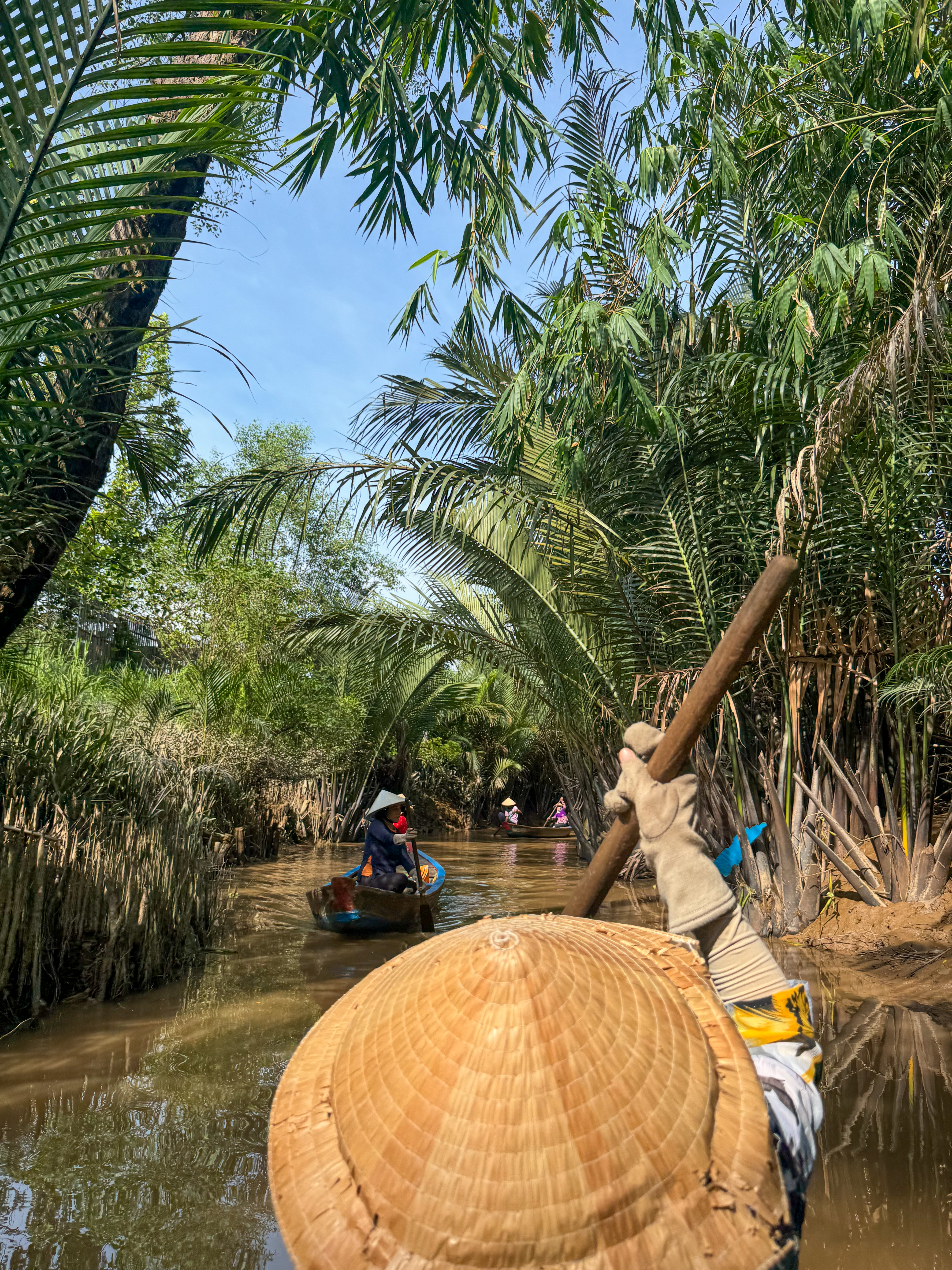
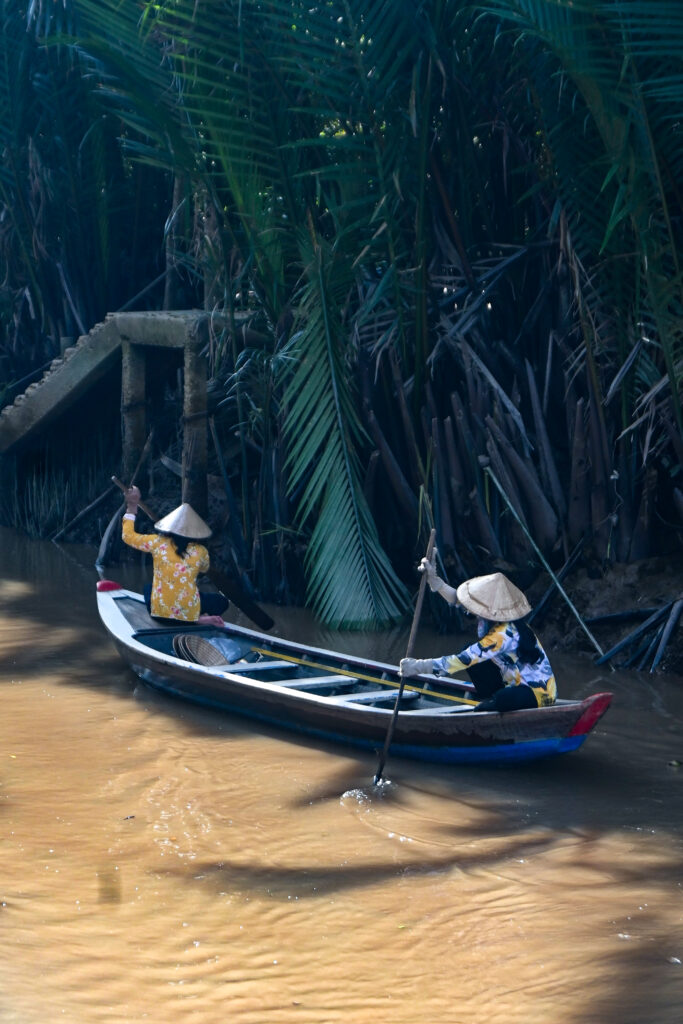
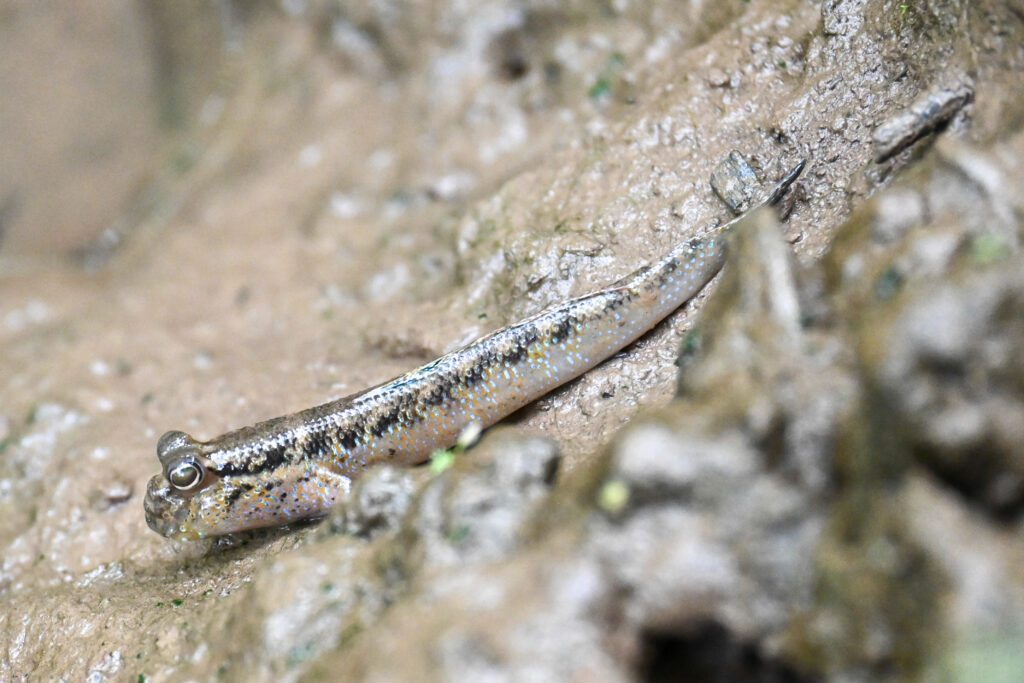
Crossing a wider part of the delta:
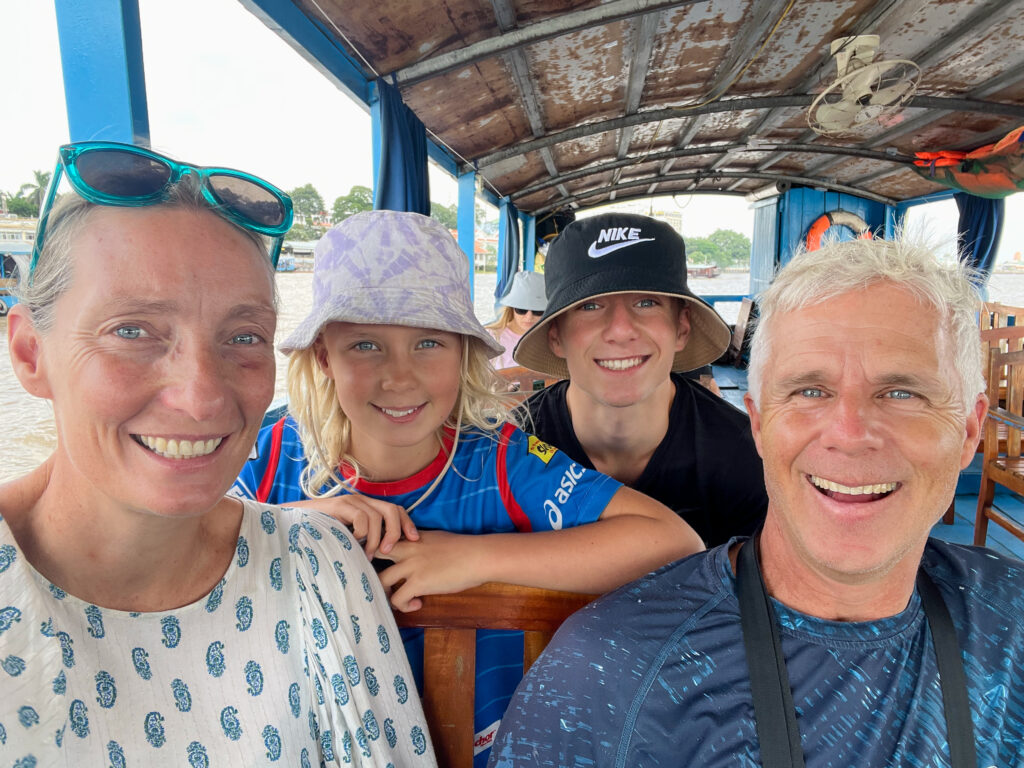

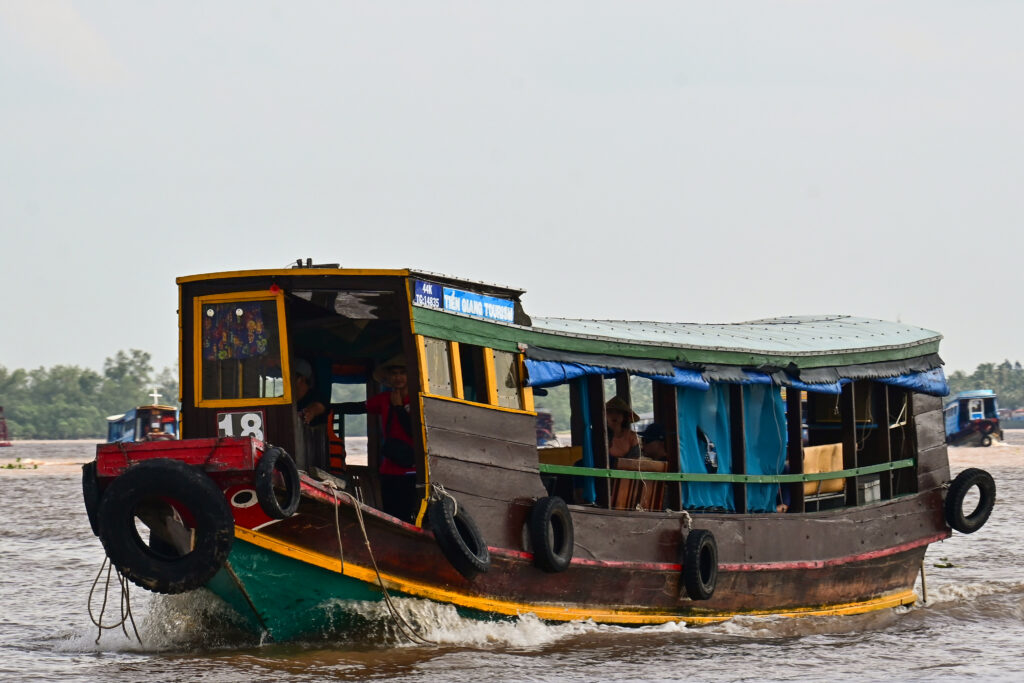

Making our own chả giò (fried spring rolls) and bánh xèo (savoury pancakes) for lunch:
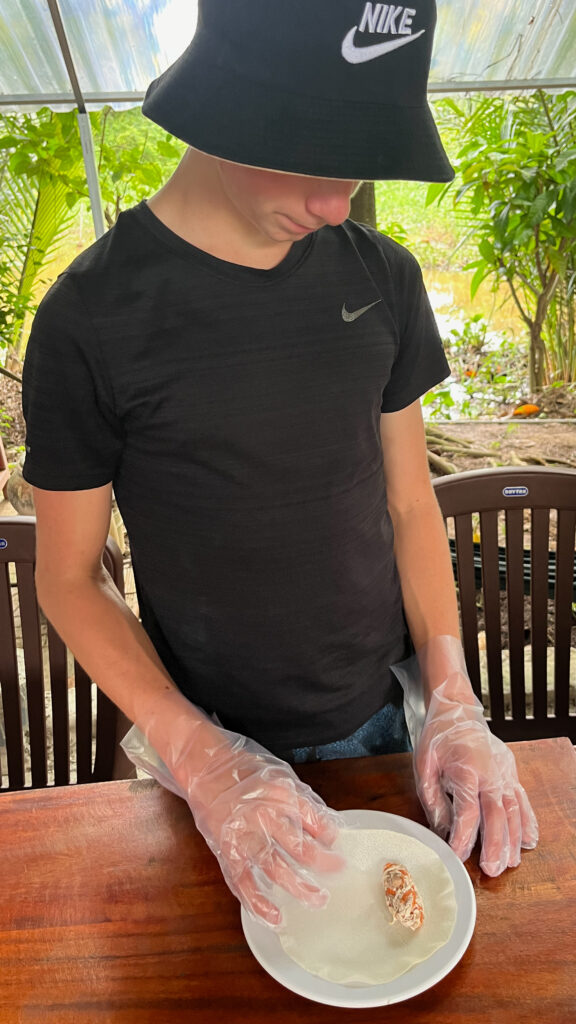
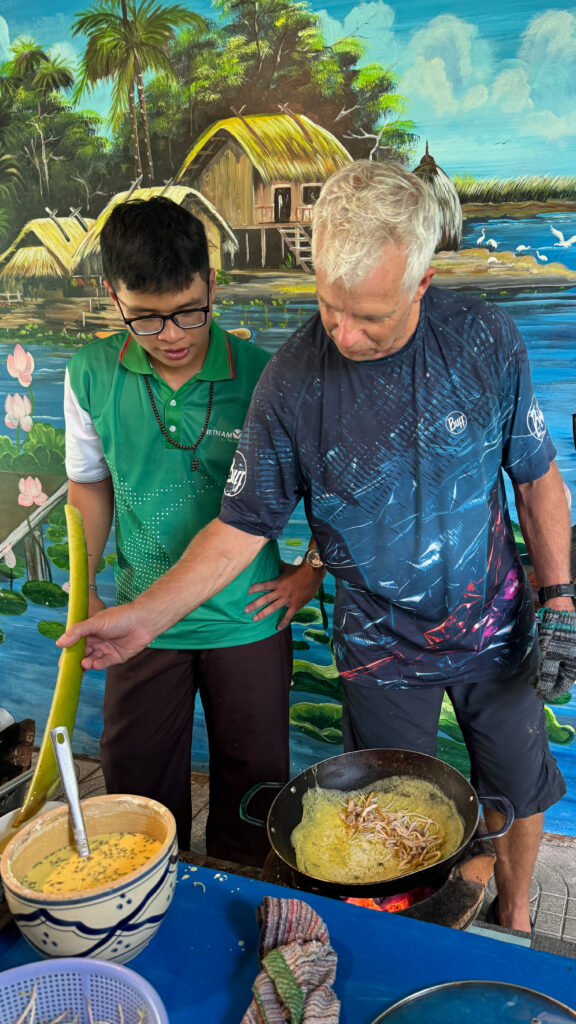
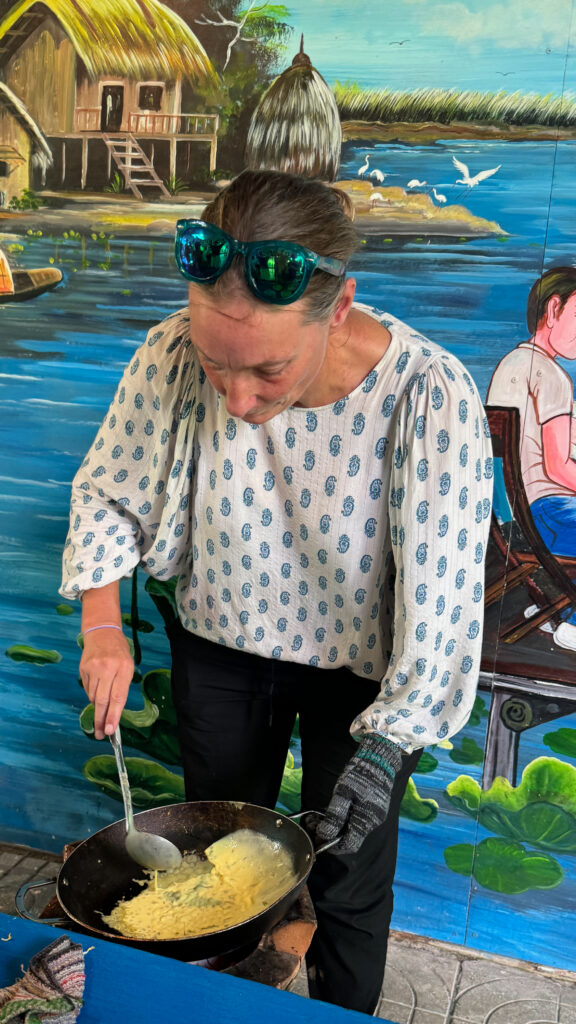
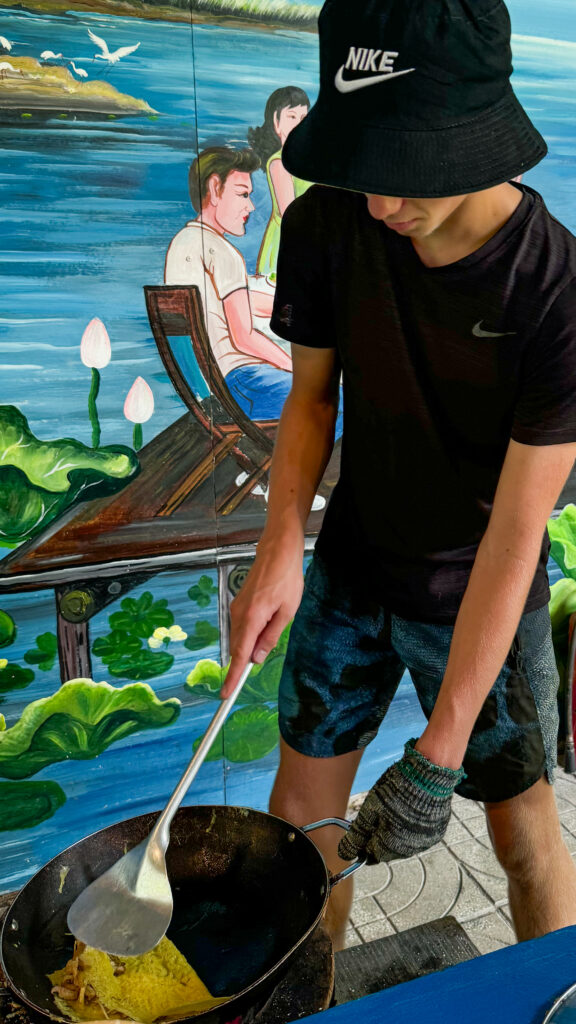
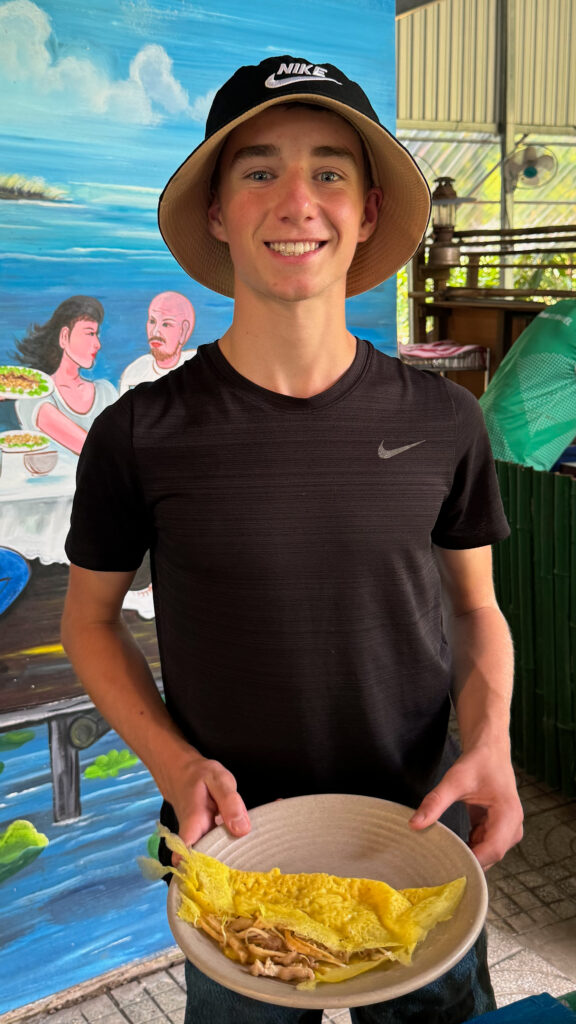
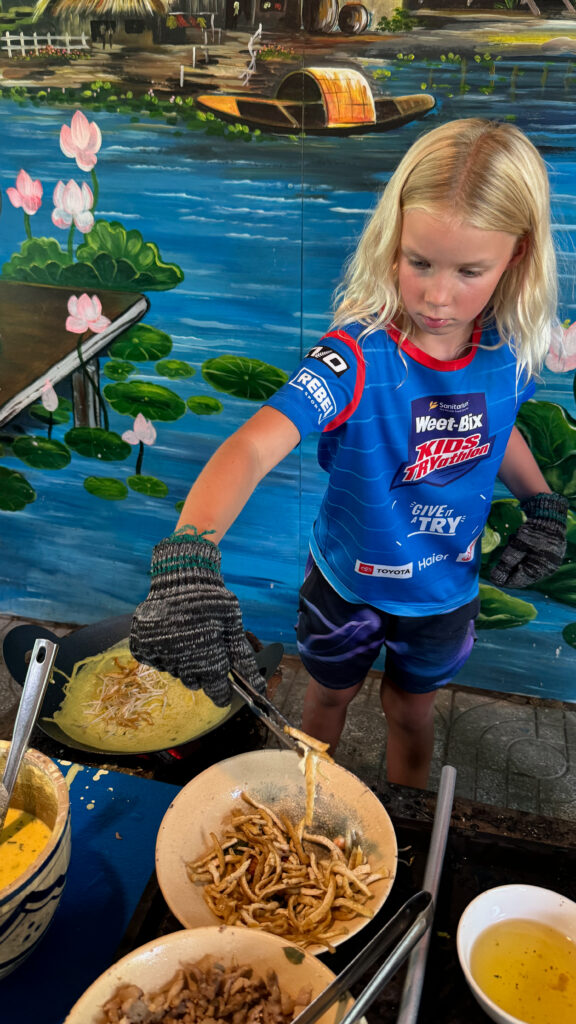
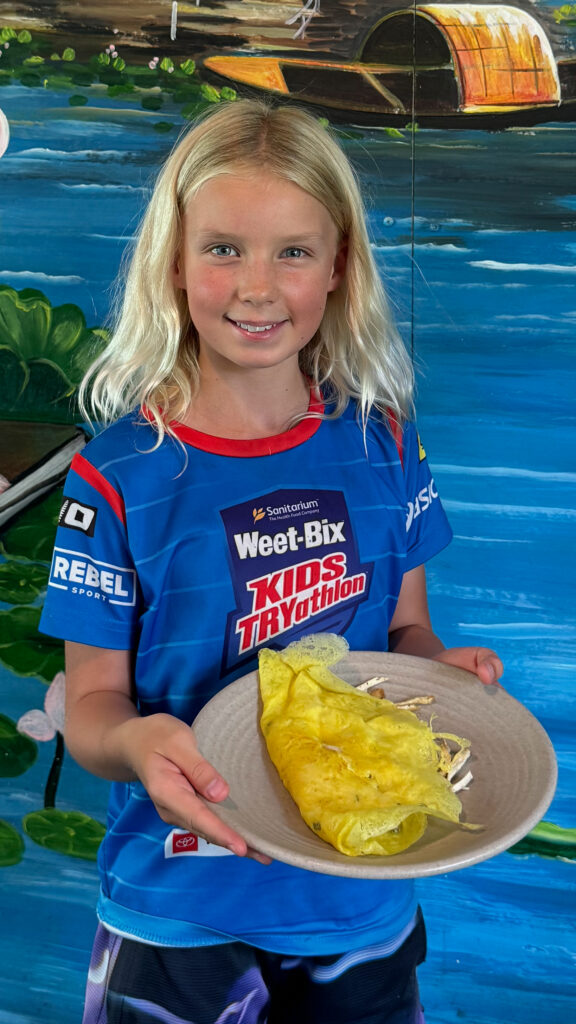
Fishing off the deck at our gorgeous, calm, happy accomodation called ‘Family Tiny Garden’ (Zara caught her very first fish!).

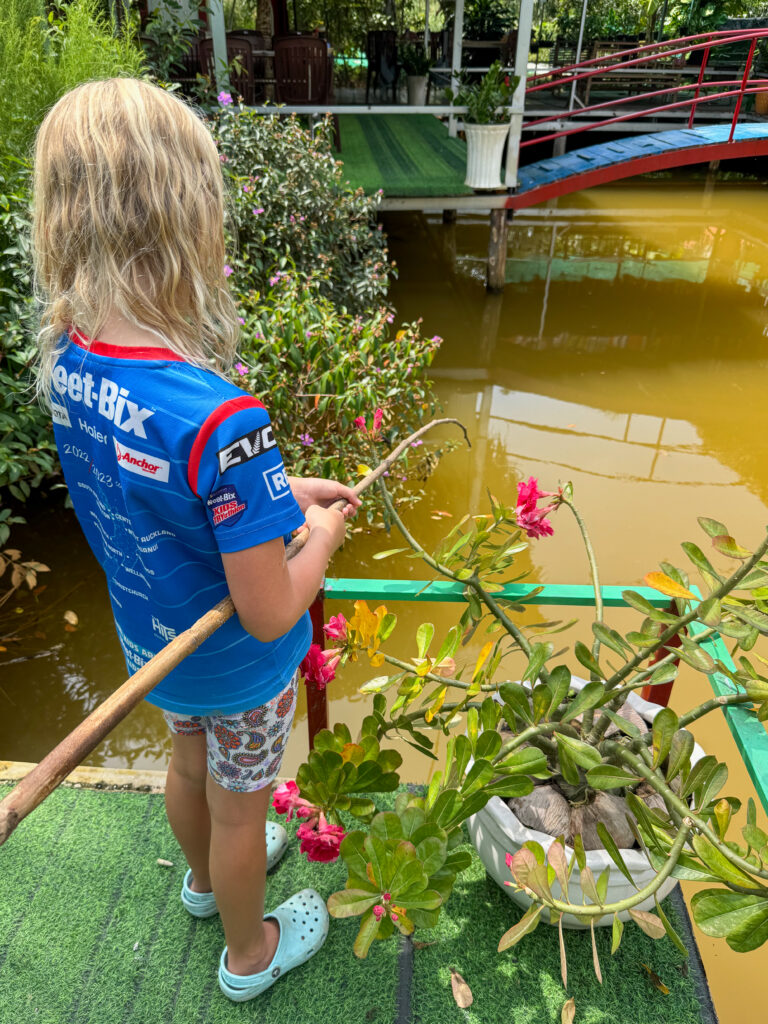

A bee farm, specialising in honey and royal jelly…and their pet snakes!

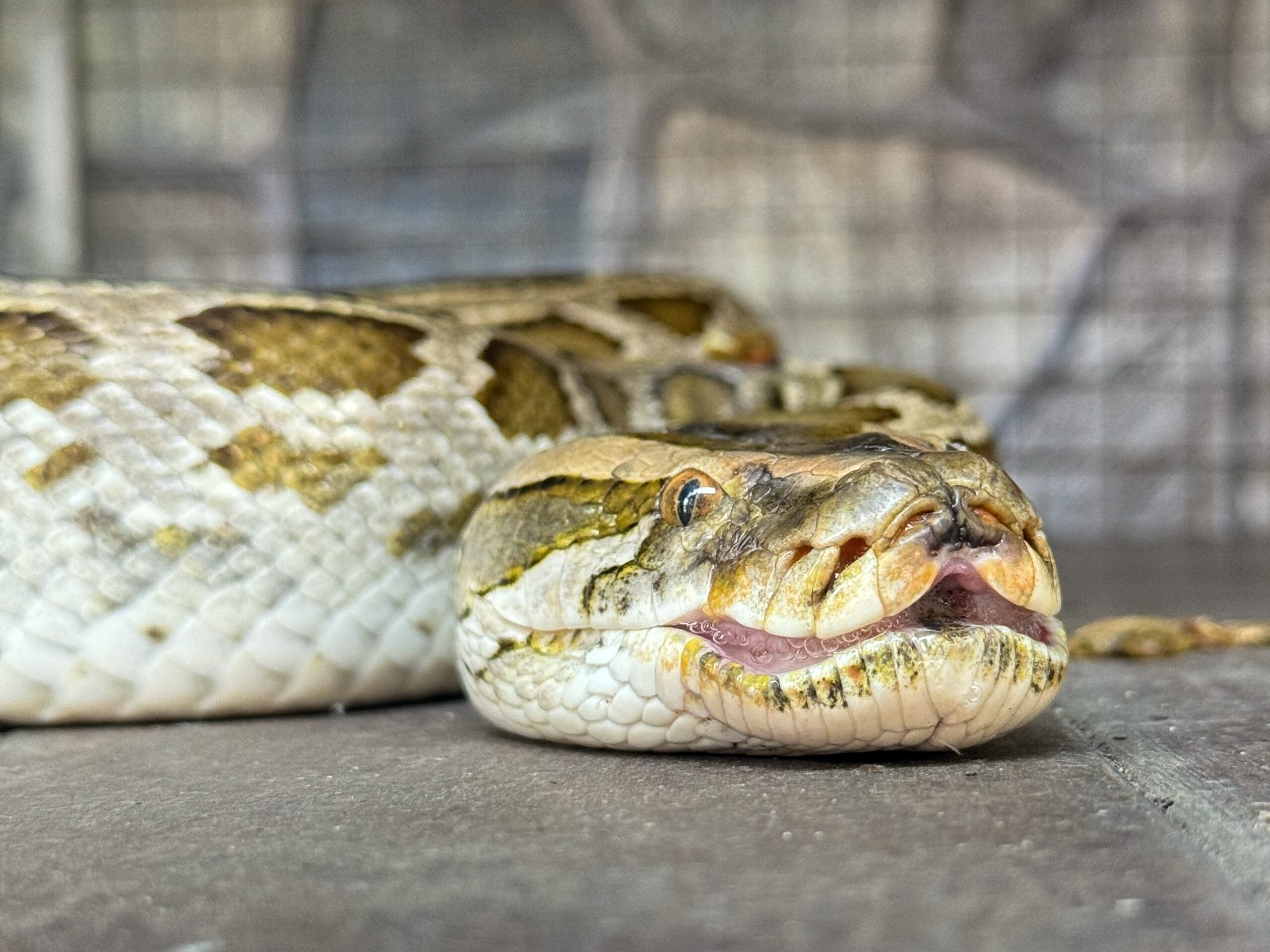
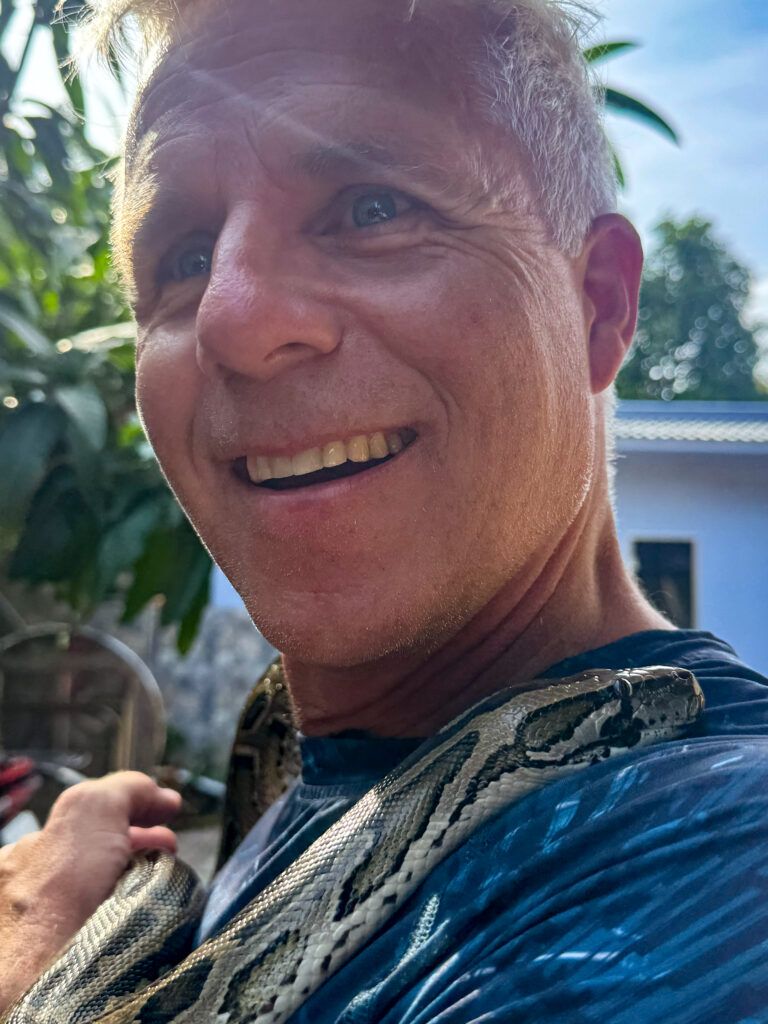


Vĩnh Tràng Temple with its large statue of Maitreya, also known as the Happy or Laughing Buddha. In Buddhist culture, Maitreya is the Buddha of the future and, according to legend, this Bodhisattva’s greatest joy is transforming human sadness, anger and stress into joy and happiness:
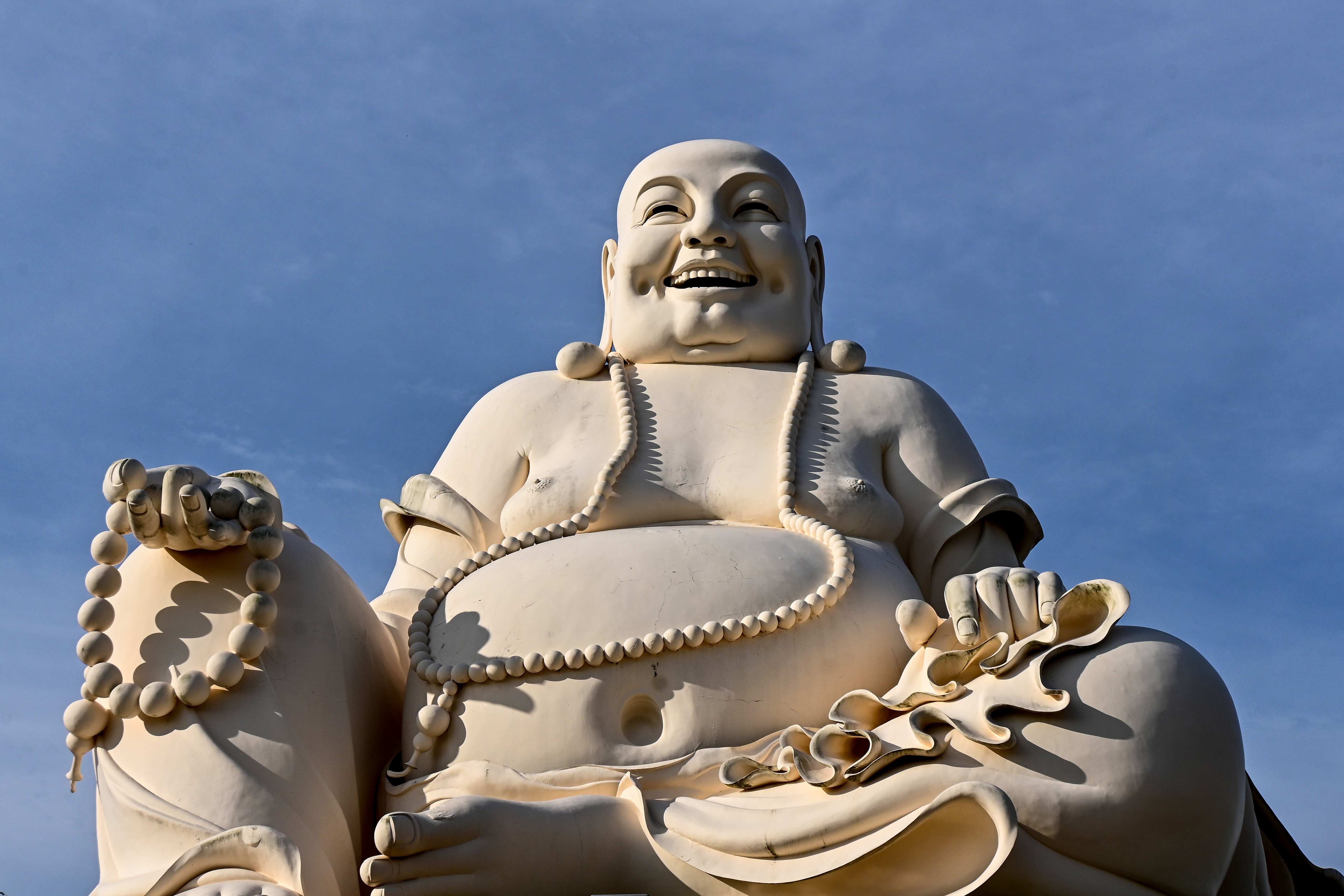
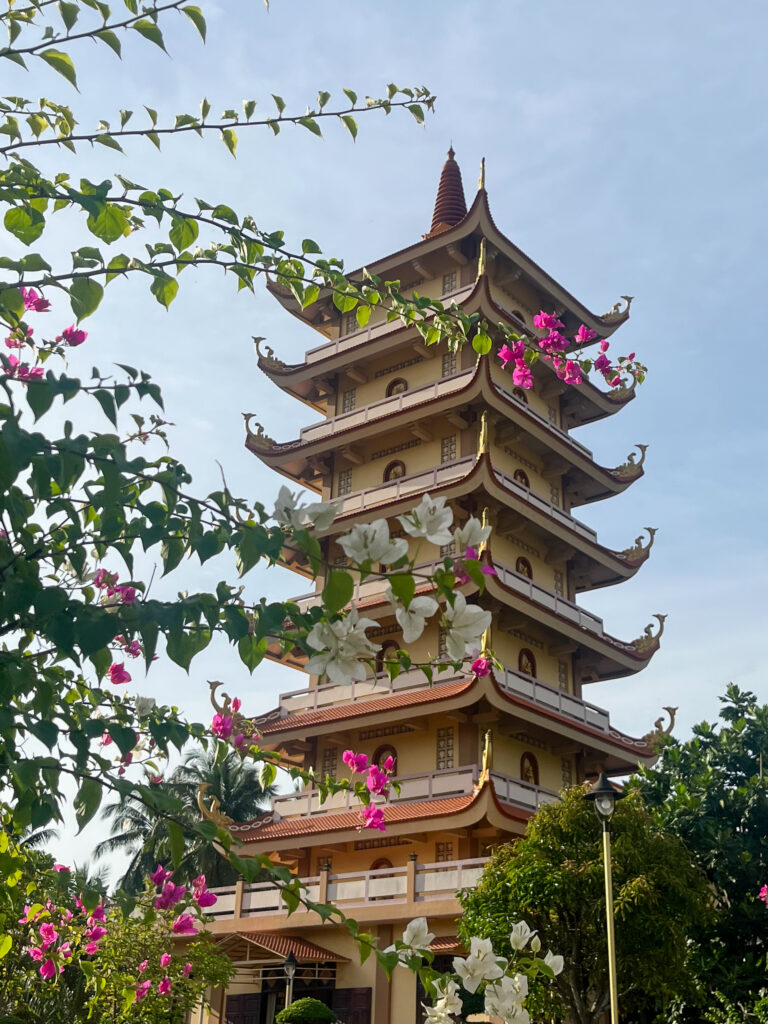
Kayaking down a very peaceful tributary:
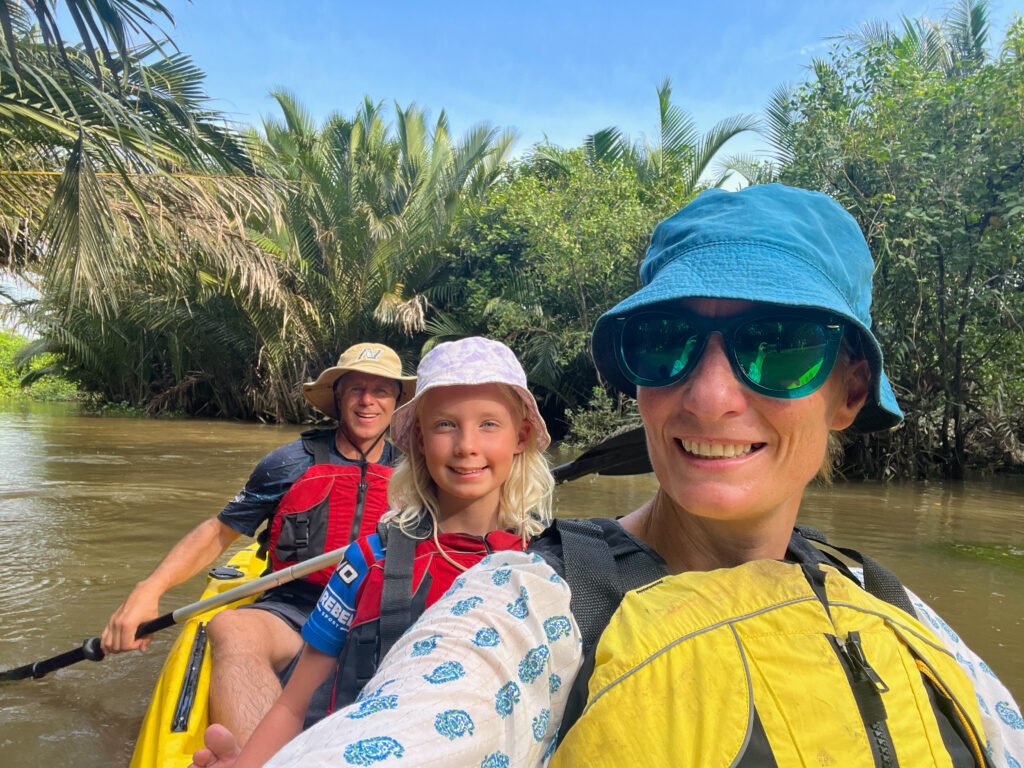
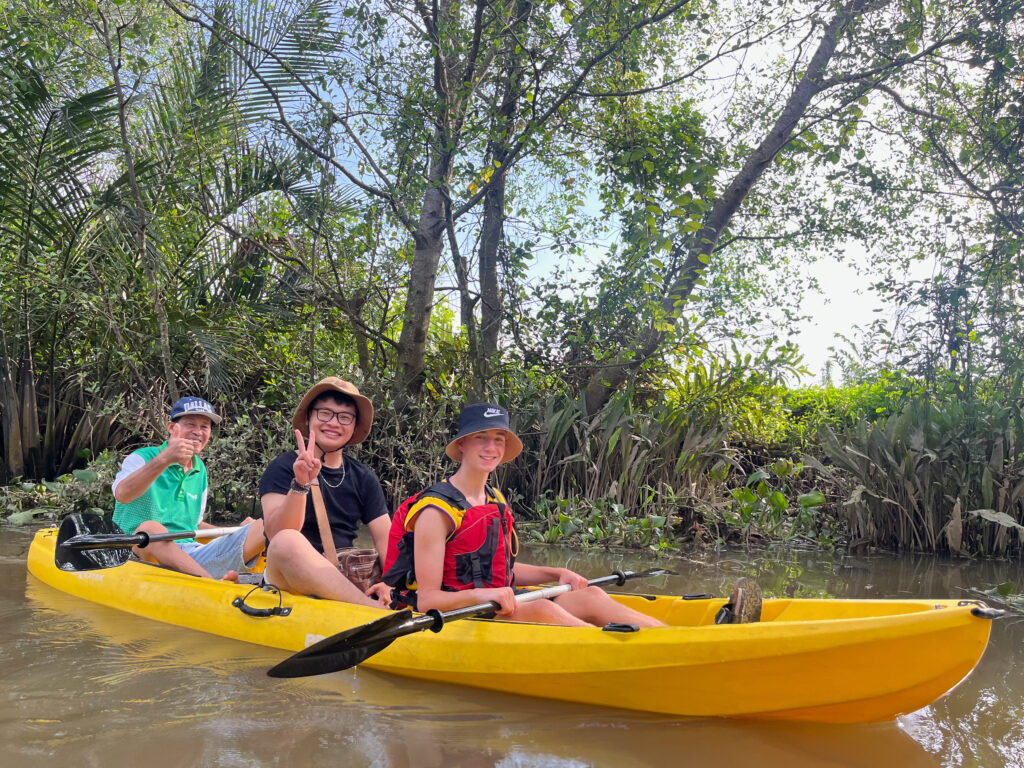
Learning how to plant rice and catch catfish:
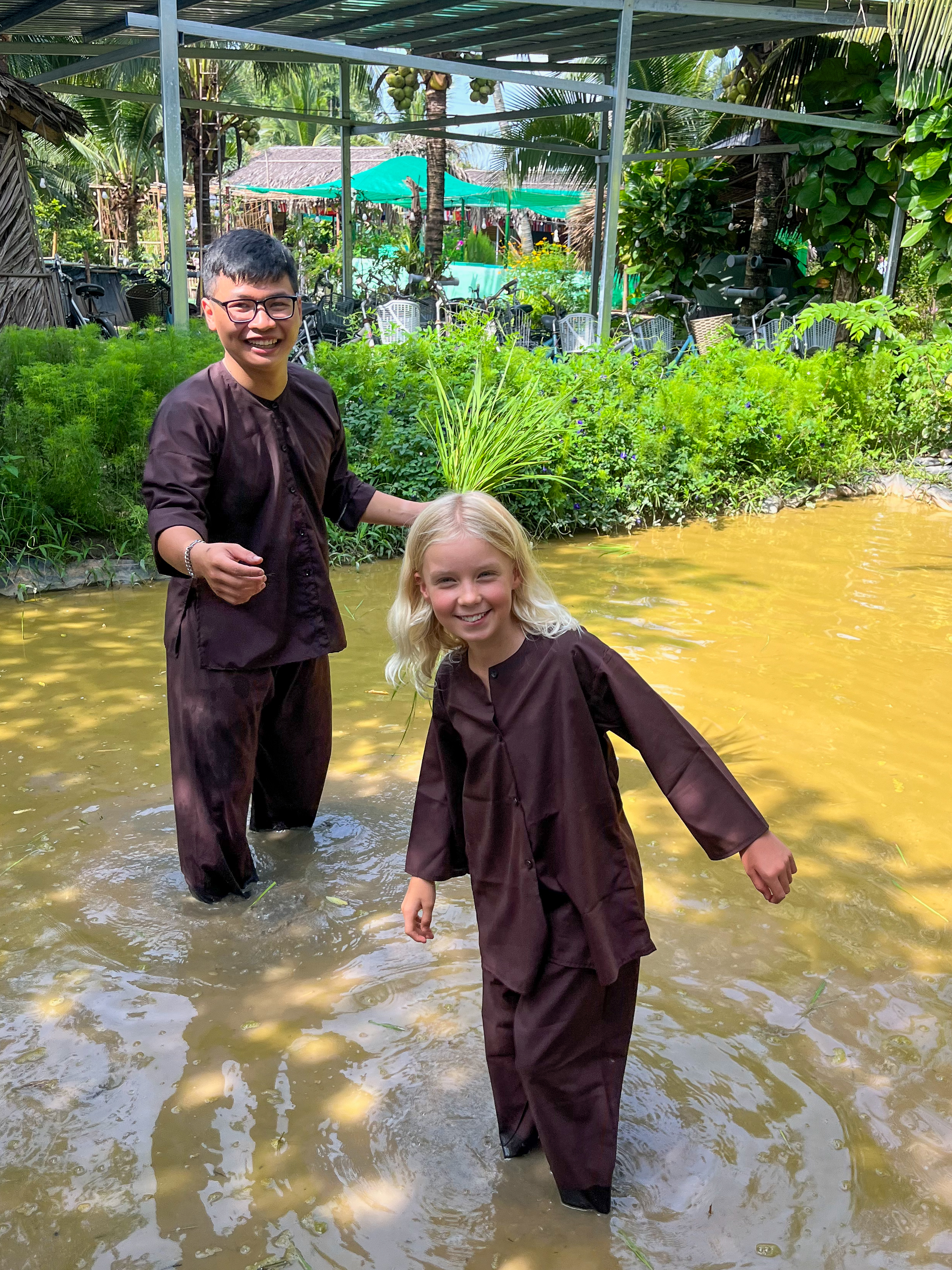
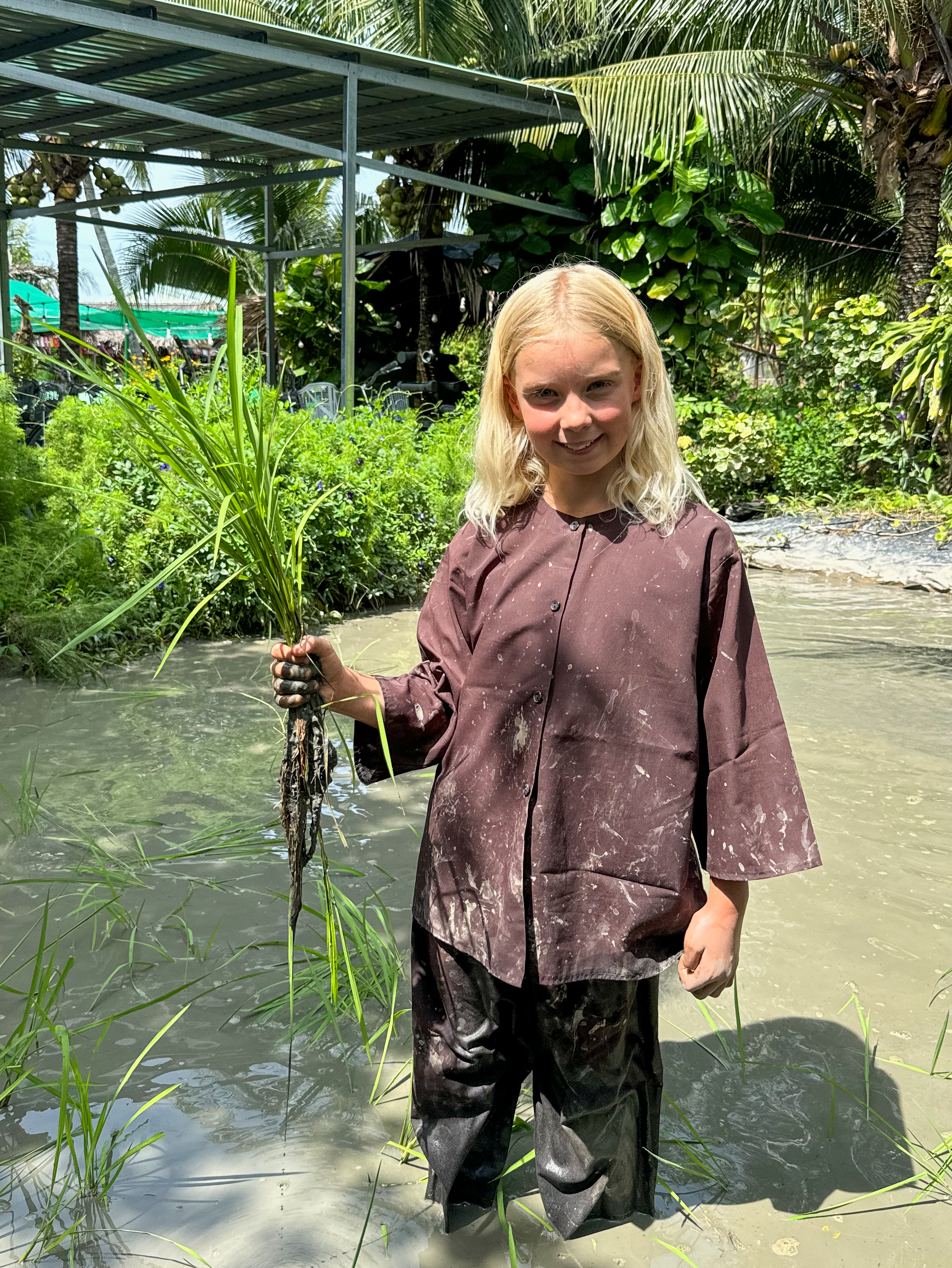
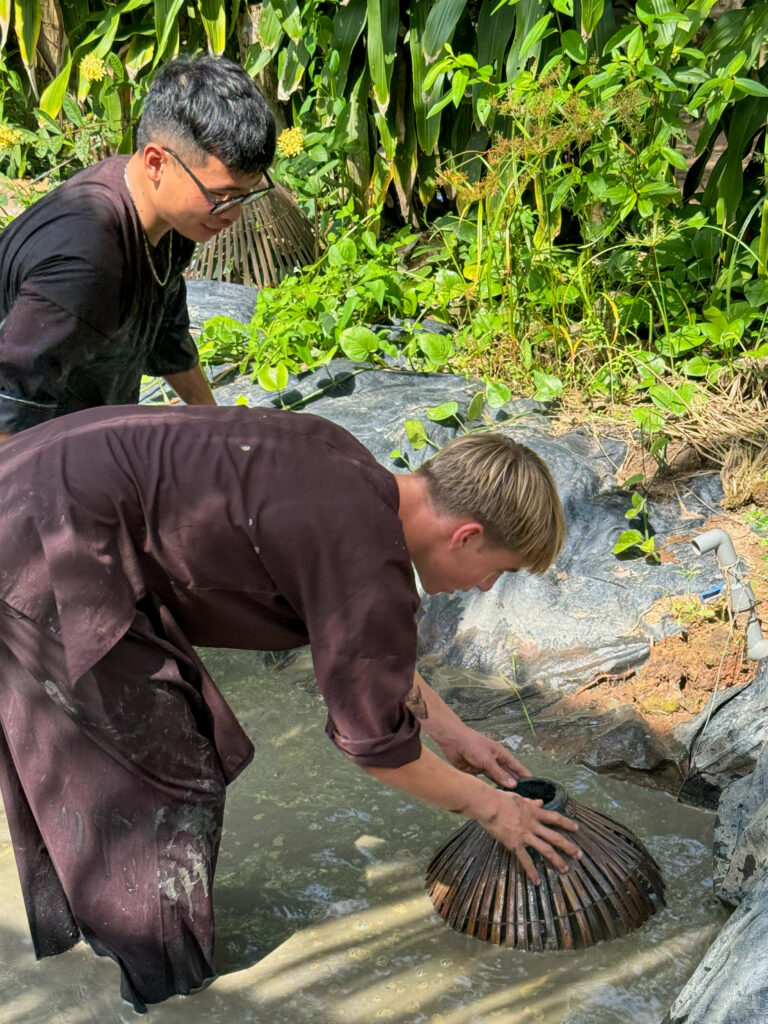
Zara’s favourite thing about the ‘Family Tiny Garden’ was the puppies – this is her favourite one that she named Muffin:
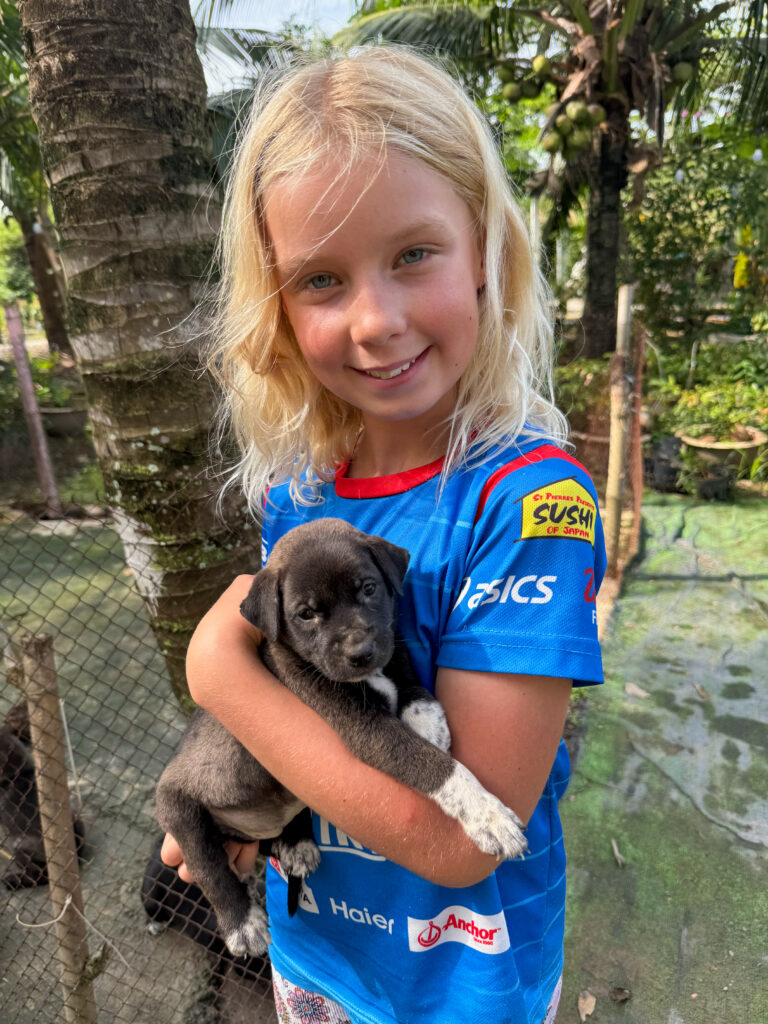

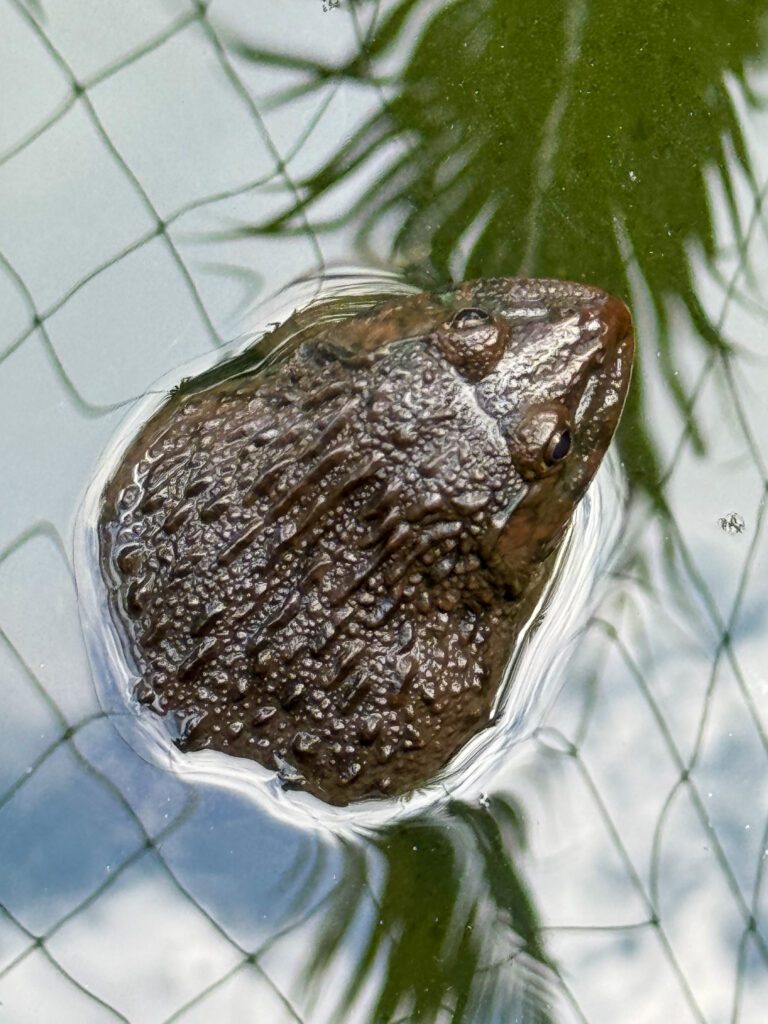

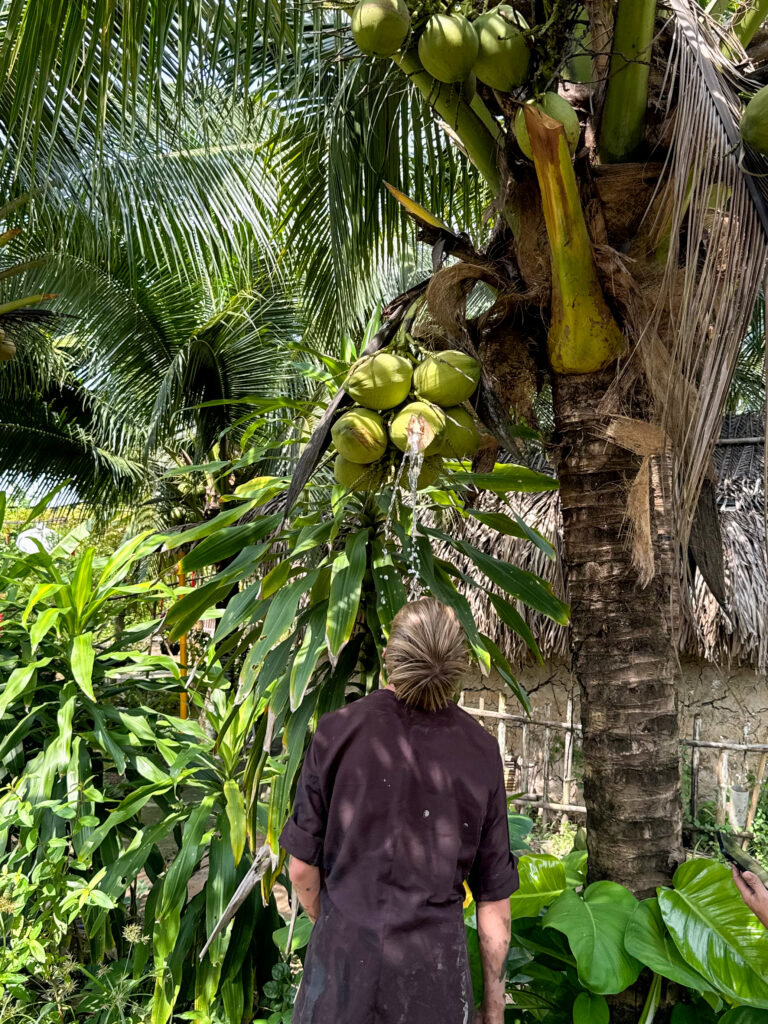
We’d had such a great experience on the Mekong Delta and all too soon it was time to move on. Due to Typhoon Trami forecast to hit the central coast of Vietnam in the next day or so, we had a quick change of plans and flew to Hanoi in the north. Hanoi immediately felt different to HCMC – the honking was more aggressive, there were so many tourists, and it just felt generally less relaxed. In saying that, we enjoyed the sights and it was a great jumping off point for other places.
Phung Hung Mural Street:
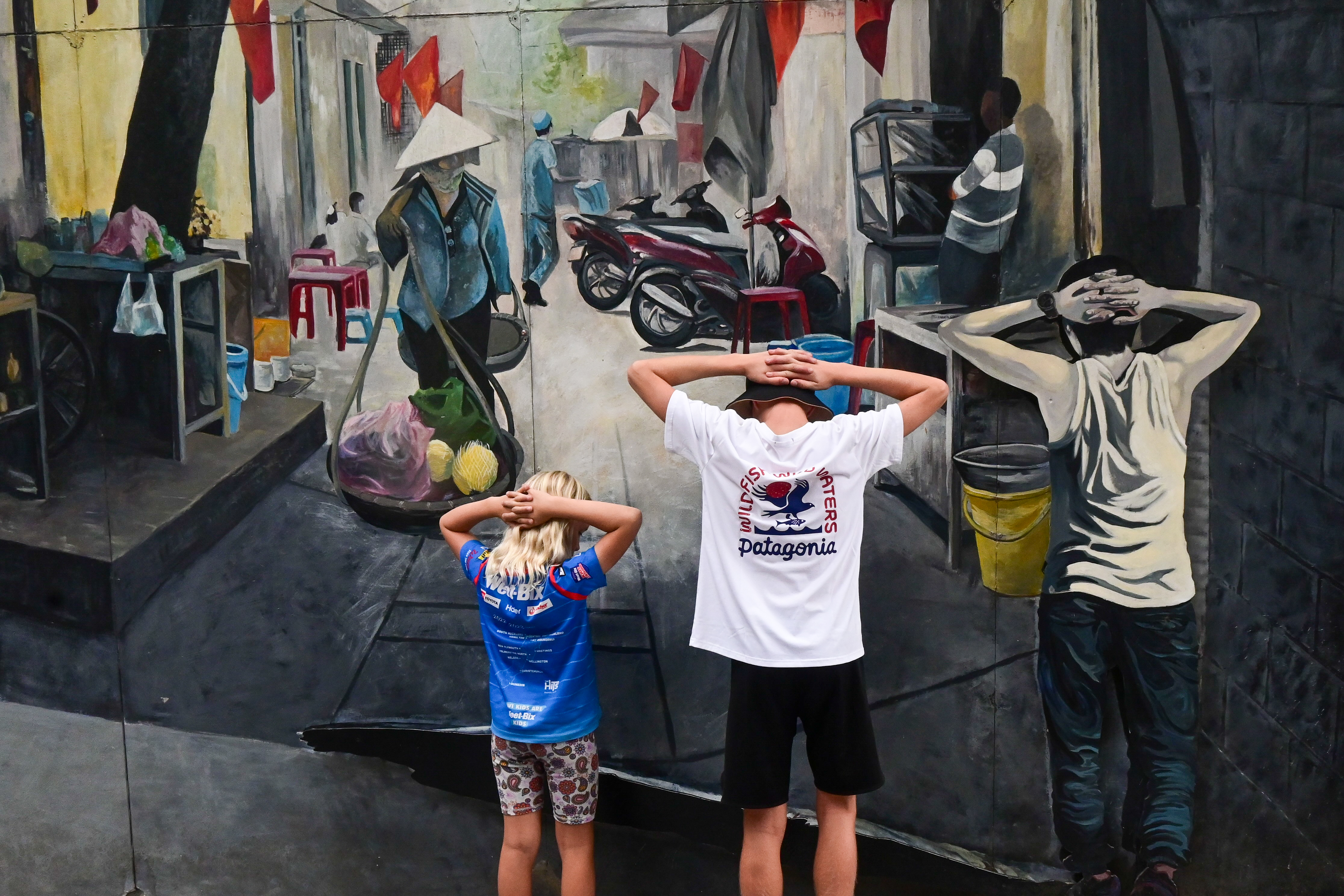
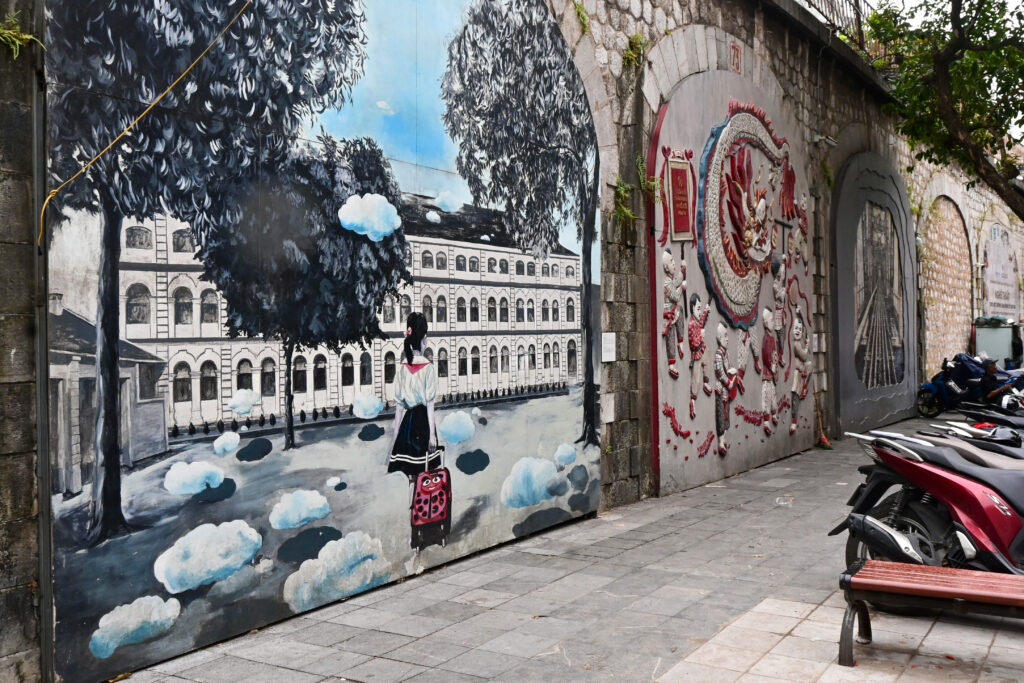
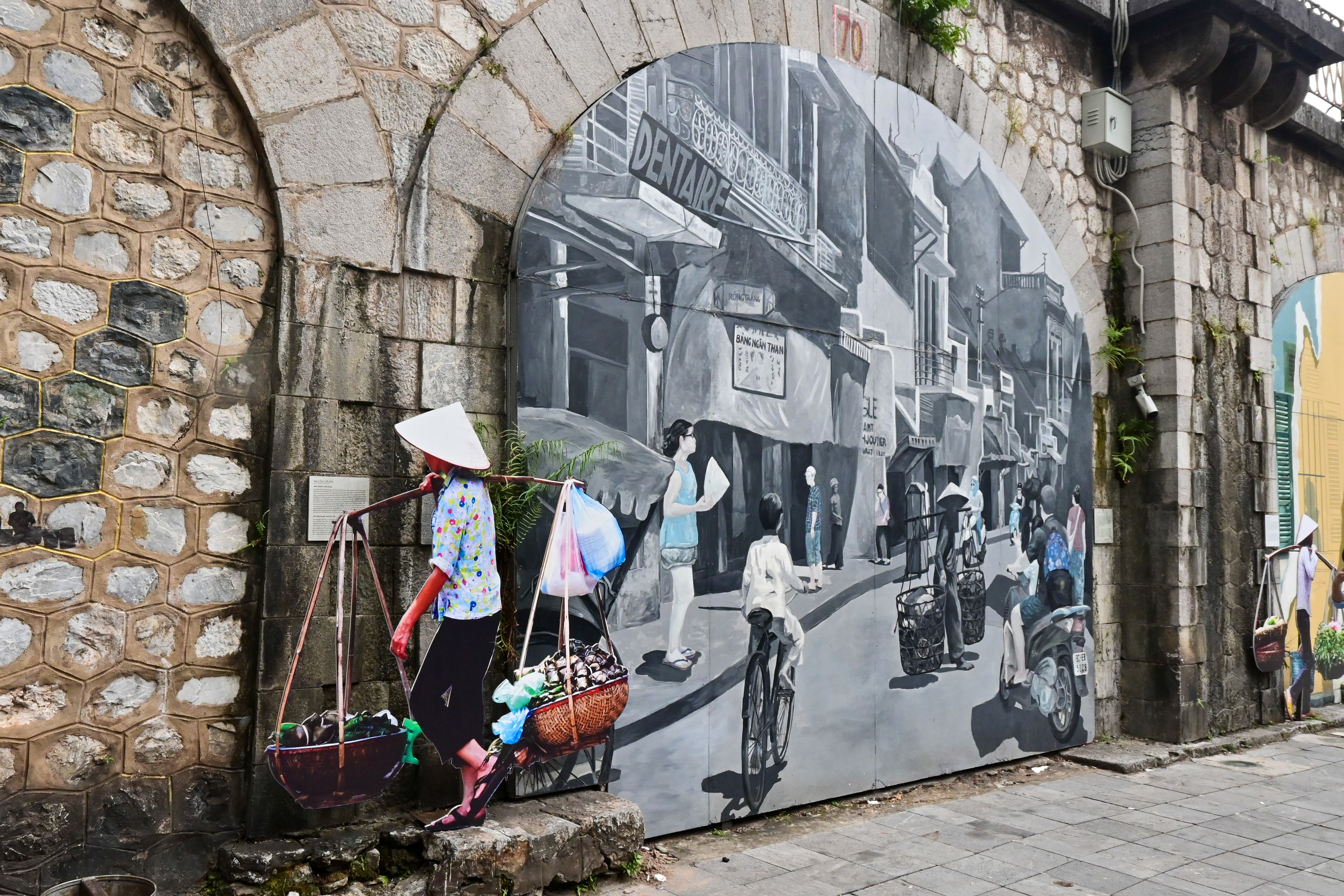

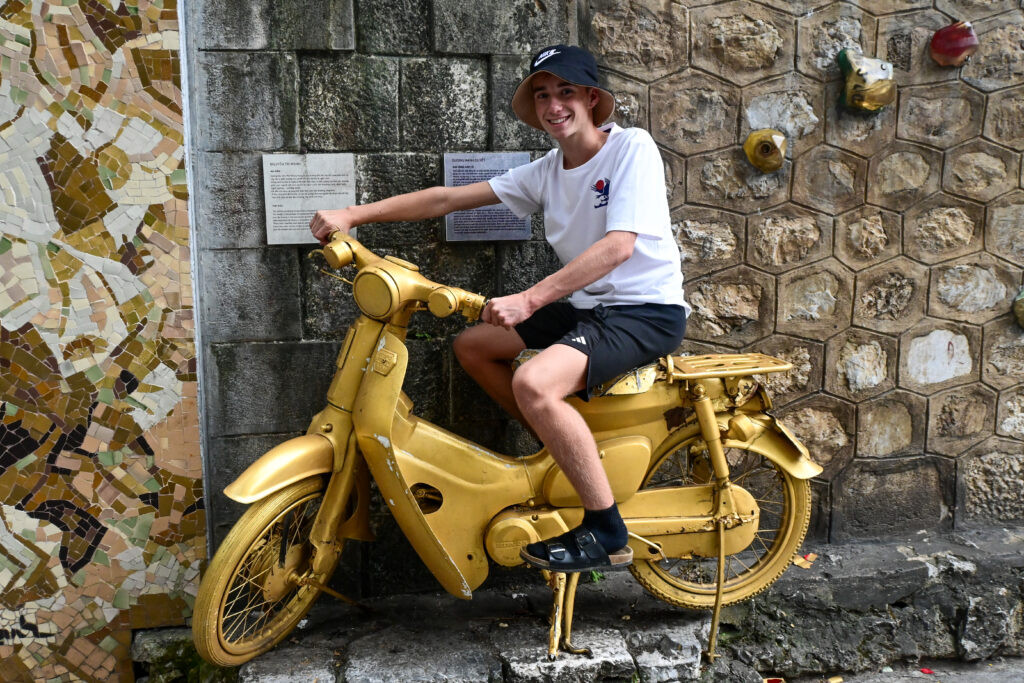

Train Street – a street with a very checkered 120 year history. Originally the street housed the poorer families who worked on the railway, then it became a quiet place for poor or displaced people, those with substance use disorders, and truant students…all the while, multiple trains a day zoomed past within inches of the buildings. Then along came Instagram and Train Street is now one of Hanoi’s most sought out tourist attractions! Due to a quirk in timetabling, we managed to see four of these trains rumbling past from a variety of viewpoints, and the almost-comical frenzy and whistle-blowing and shouting that happens in the minutes prior to ensure everyone and everything is clear of the train’s path.
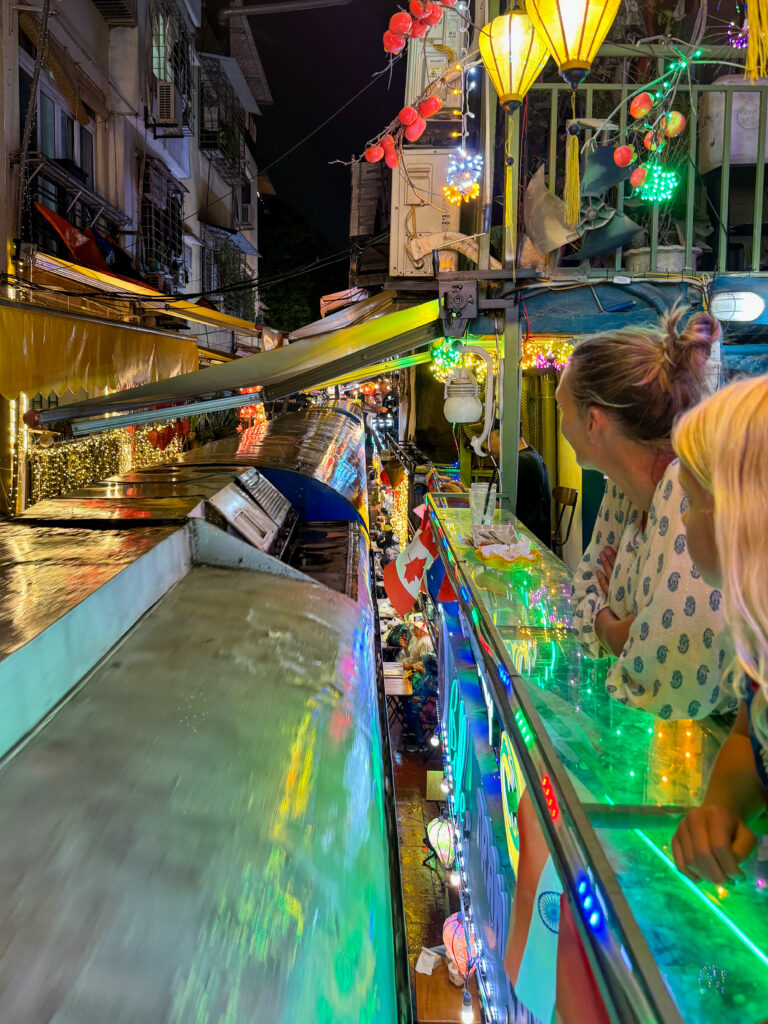
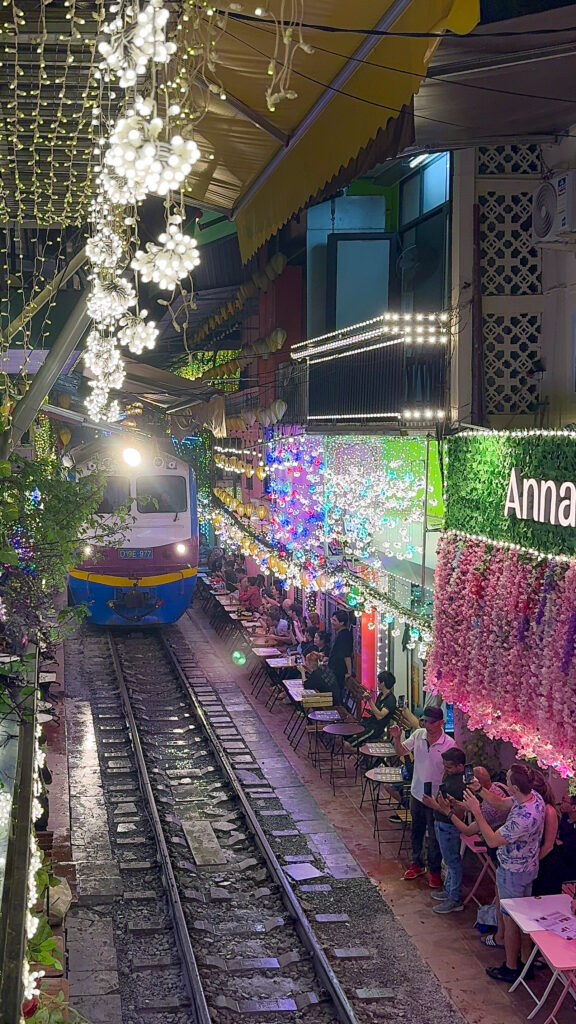
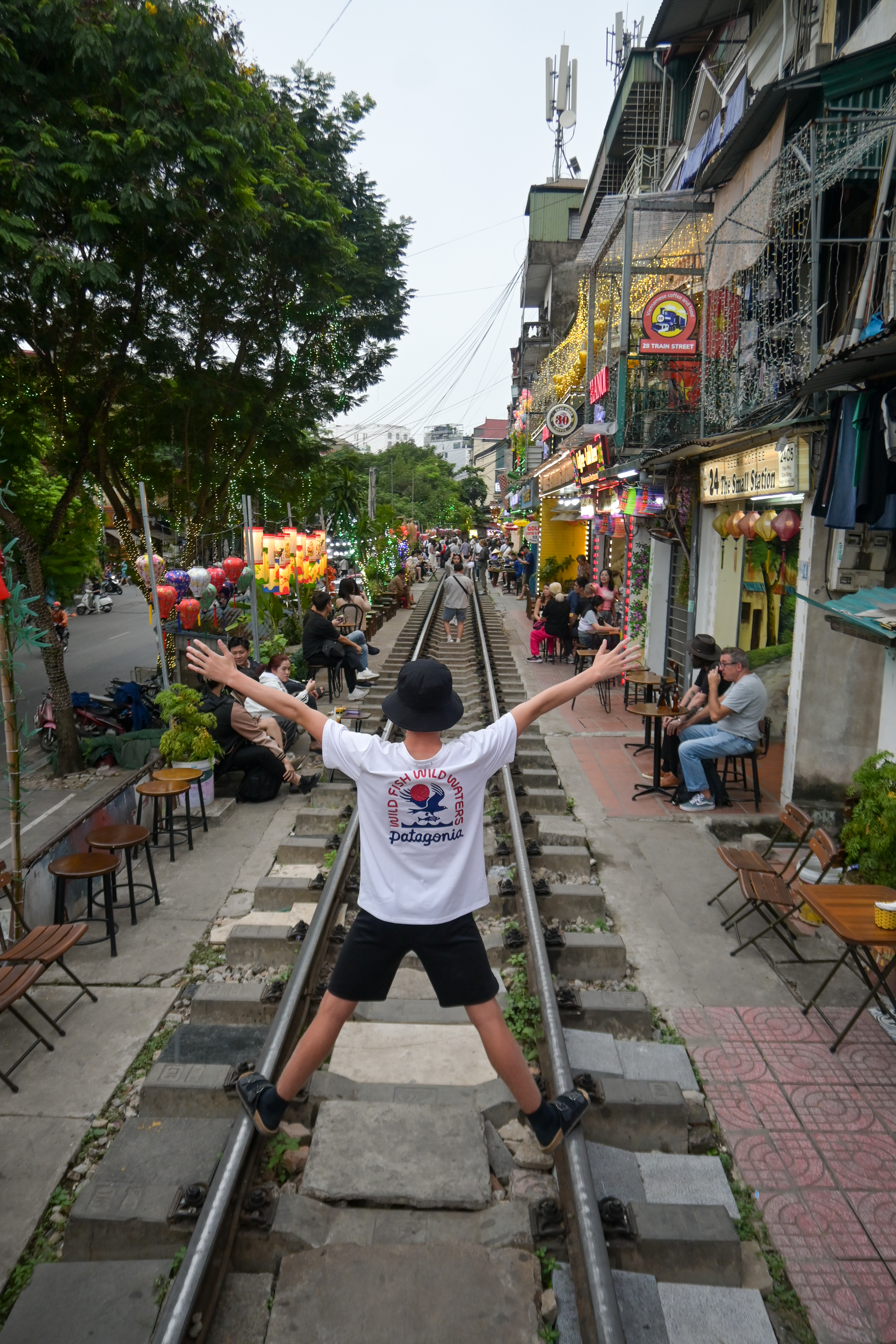
Hoan Kiem Lake and the fascinating Thang Long Water Puppet Theatre:

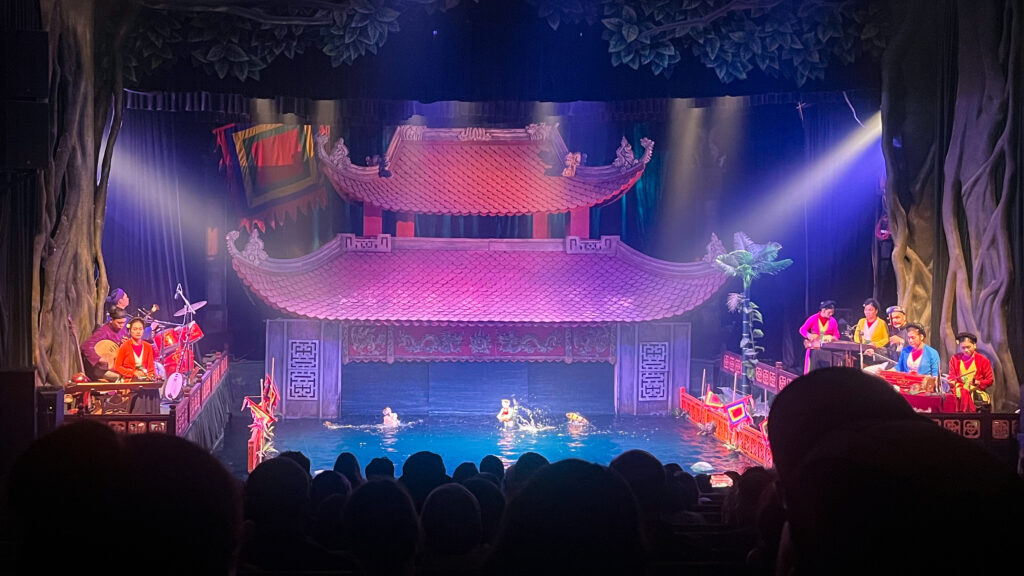
Our next destination was Sa Pa, a mountainous region in the north-west of Vietnam.
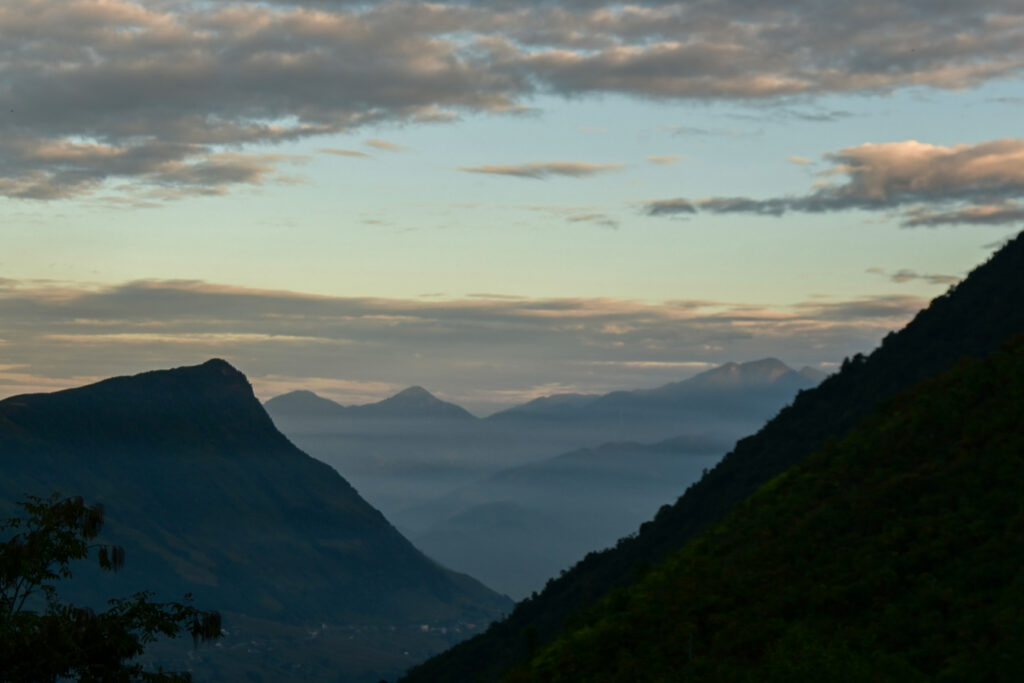
To get to and from Sa Pa from Hanoi, we took a the kids’ first sleeper bus. It was a pretty flash arrangement and we all slept very soundly in our four independent pods.

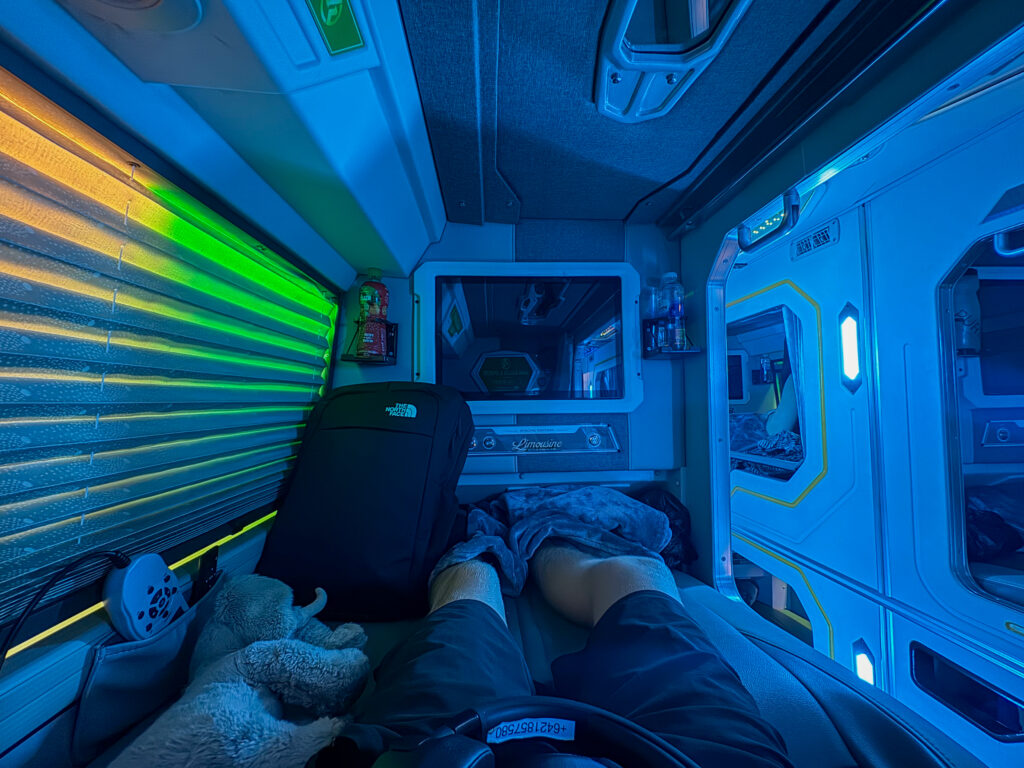
The Sa Pa region is famous for its terraced rice fields but although we missed the harvest by three weeks, the scenery was still stunning.


We stayed at a homestay away from the town with a young husband and wife who had only recently opened their homestay. It was so peaceful and beautiful, and Phu and Sa were such incredible hosts and made such delicious meals. We spent our days either relaxing at the homestay or wandering the hills.

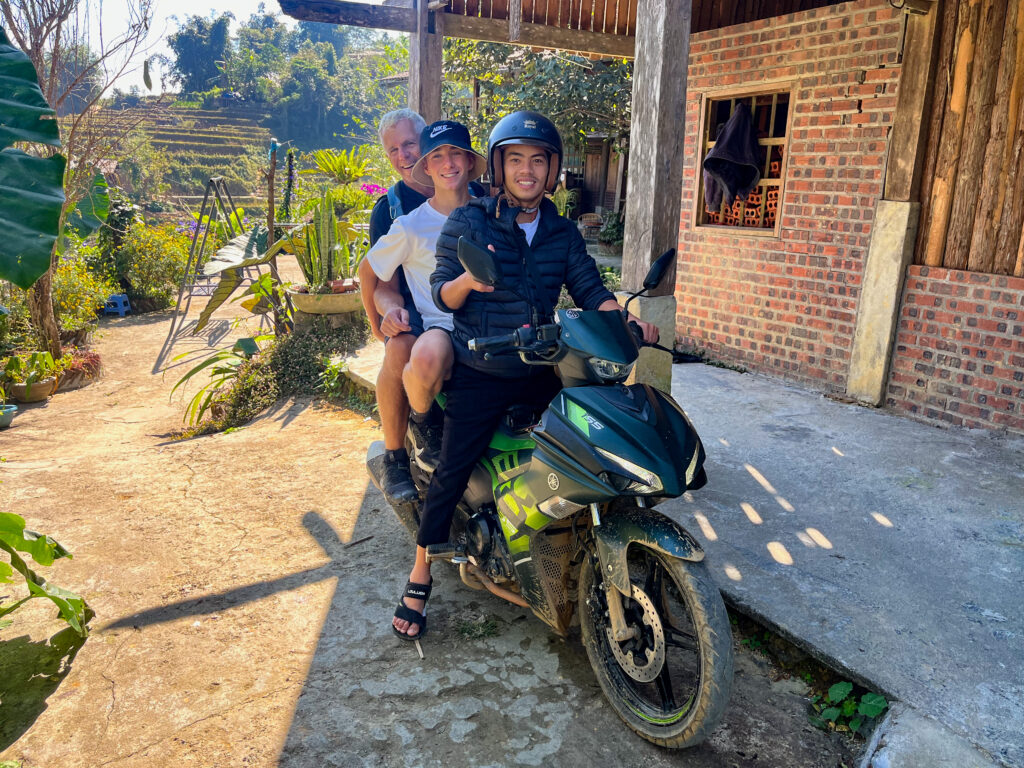

There are so many puppies and so many dogs in Vietnam, and they all seem to be friendly and well-looked after. The kids have enjoyed lots of puppy-cuddles and doggo-pats!
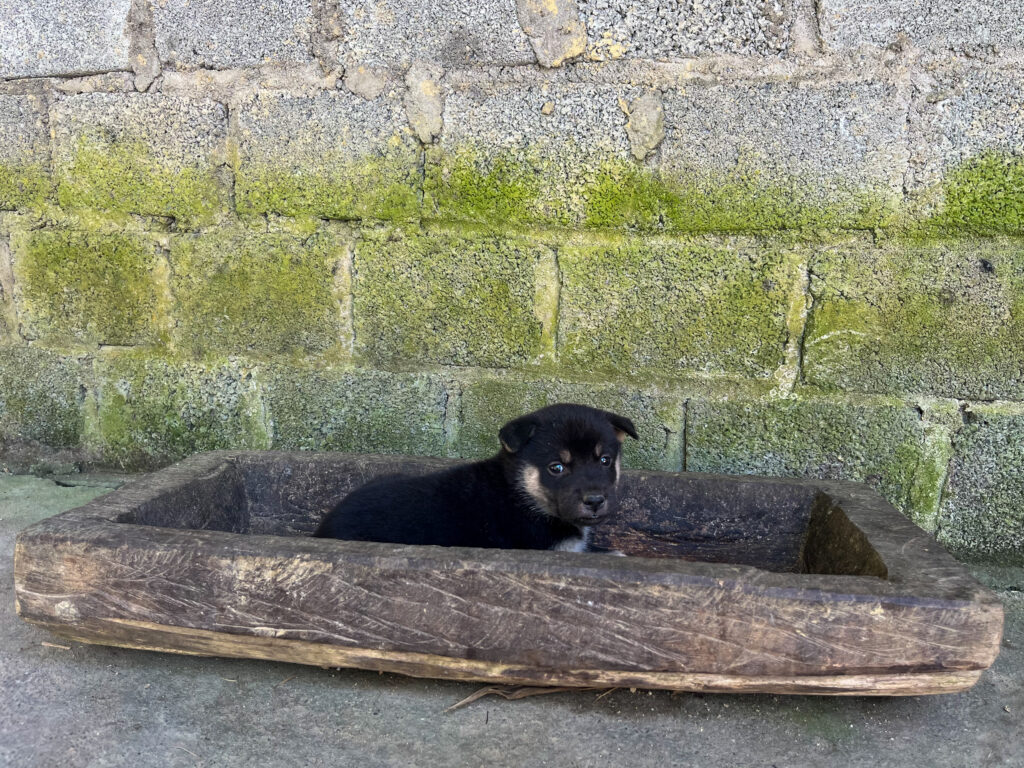

There are also so many fluffy ducklings and chicks, colourful butterflies, gigantic insects, pretty flowers, and grunting buffalo!

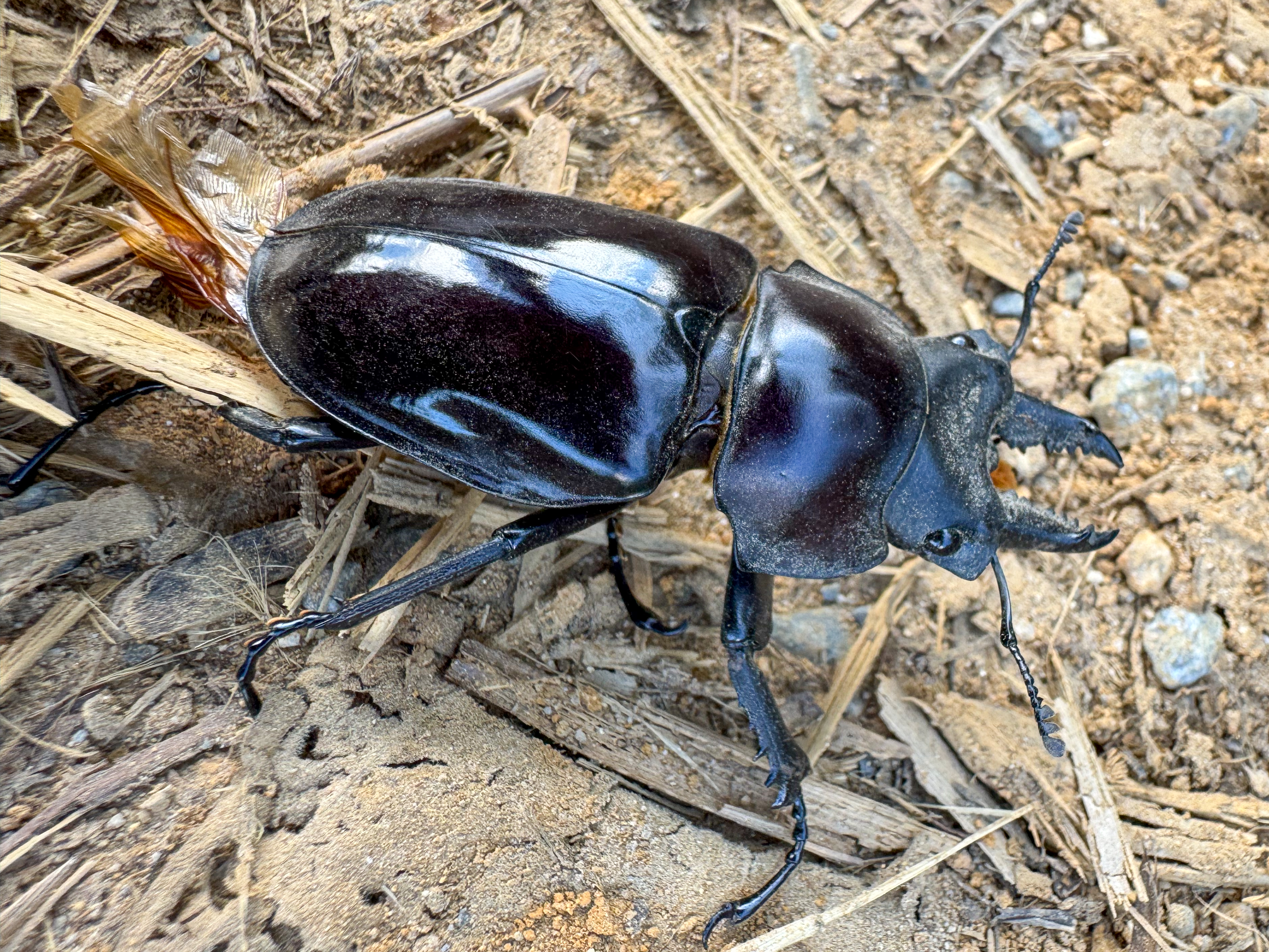
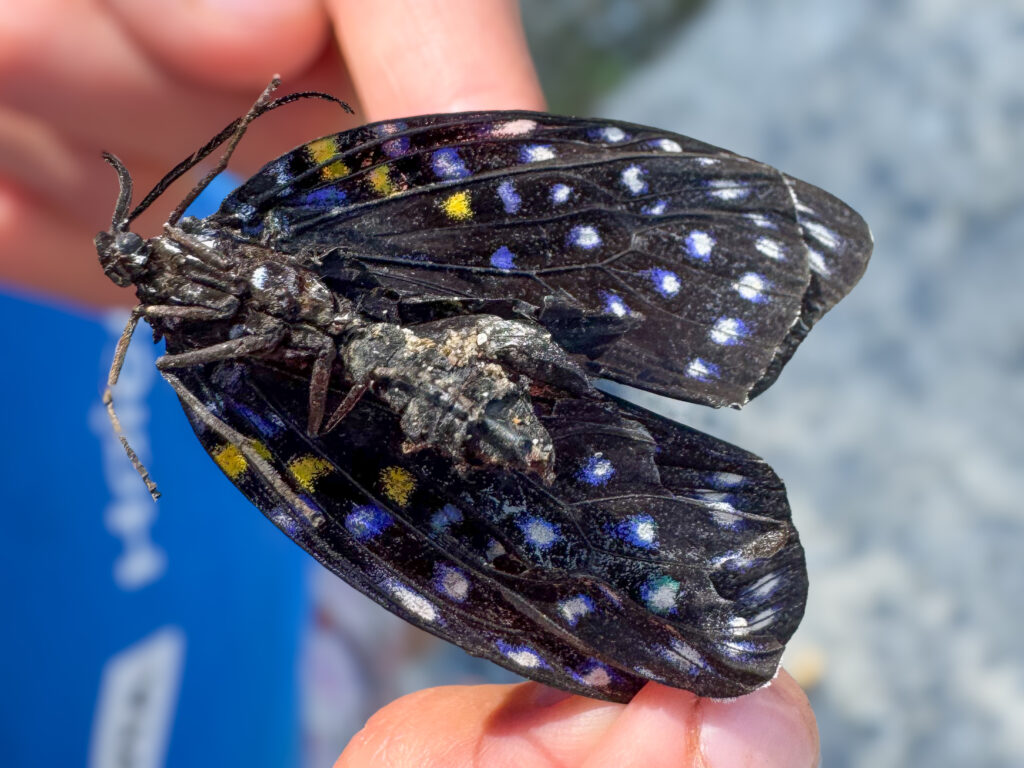

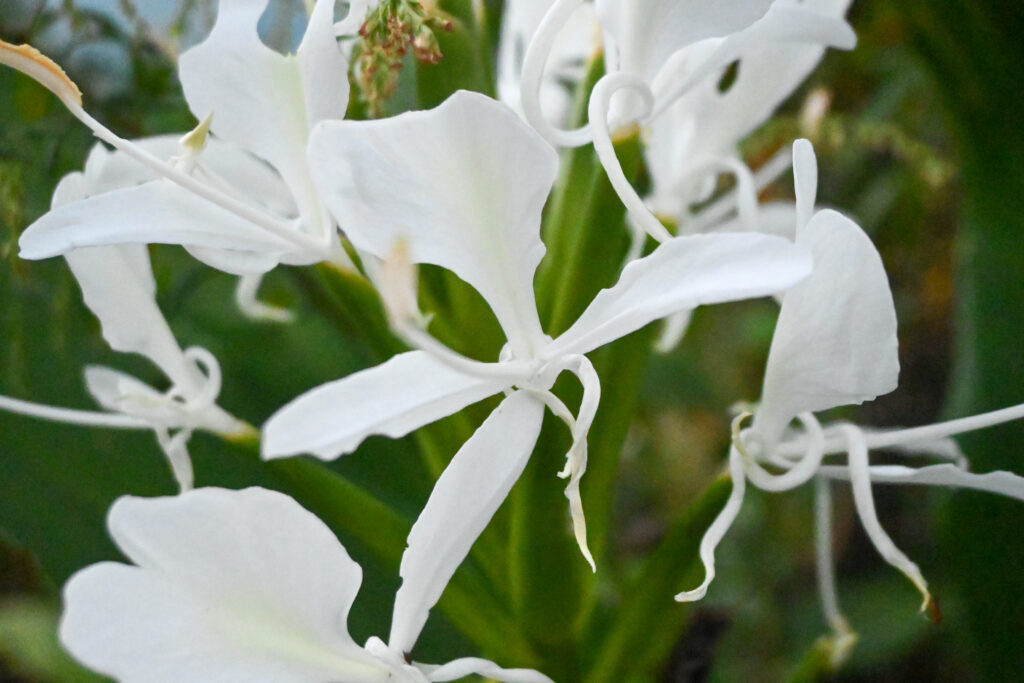

Wandering through the Bamboo Forest:
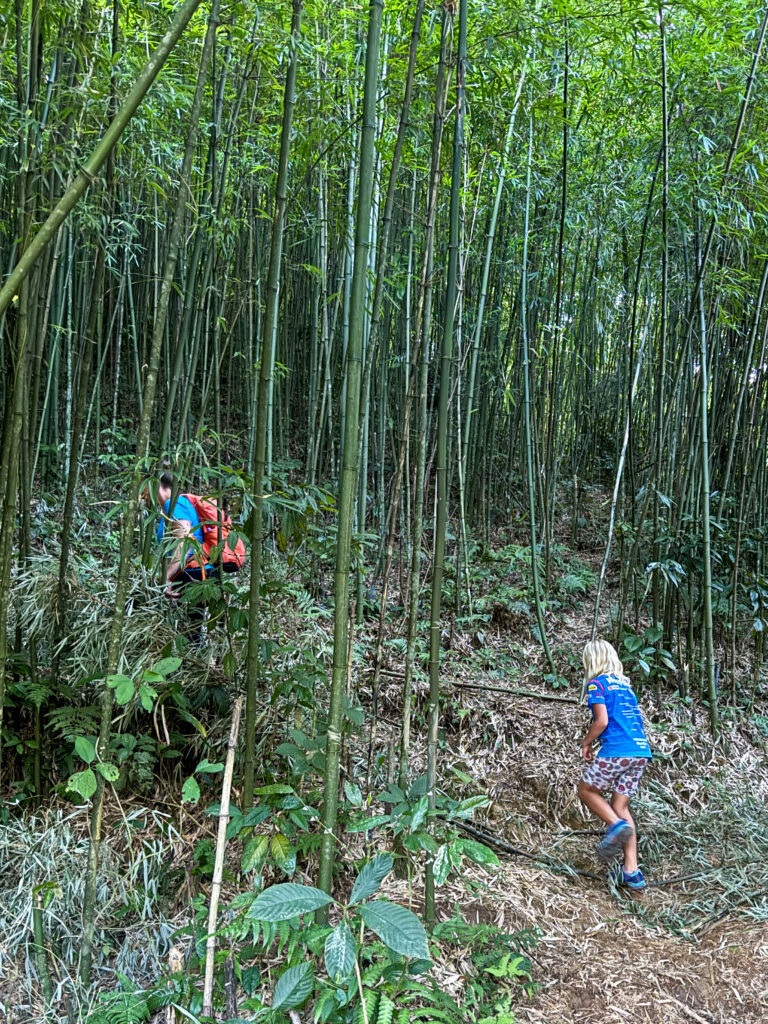

We had some nice encounters with the local Hmong hill tribes, using Google Translate and the ever-useful nodding and smiling to communicate.
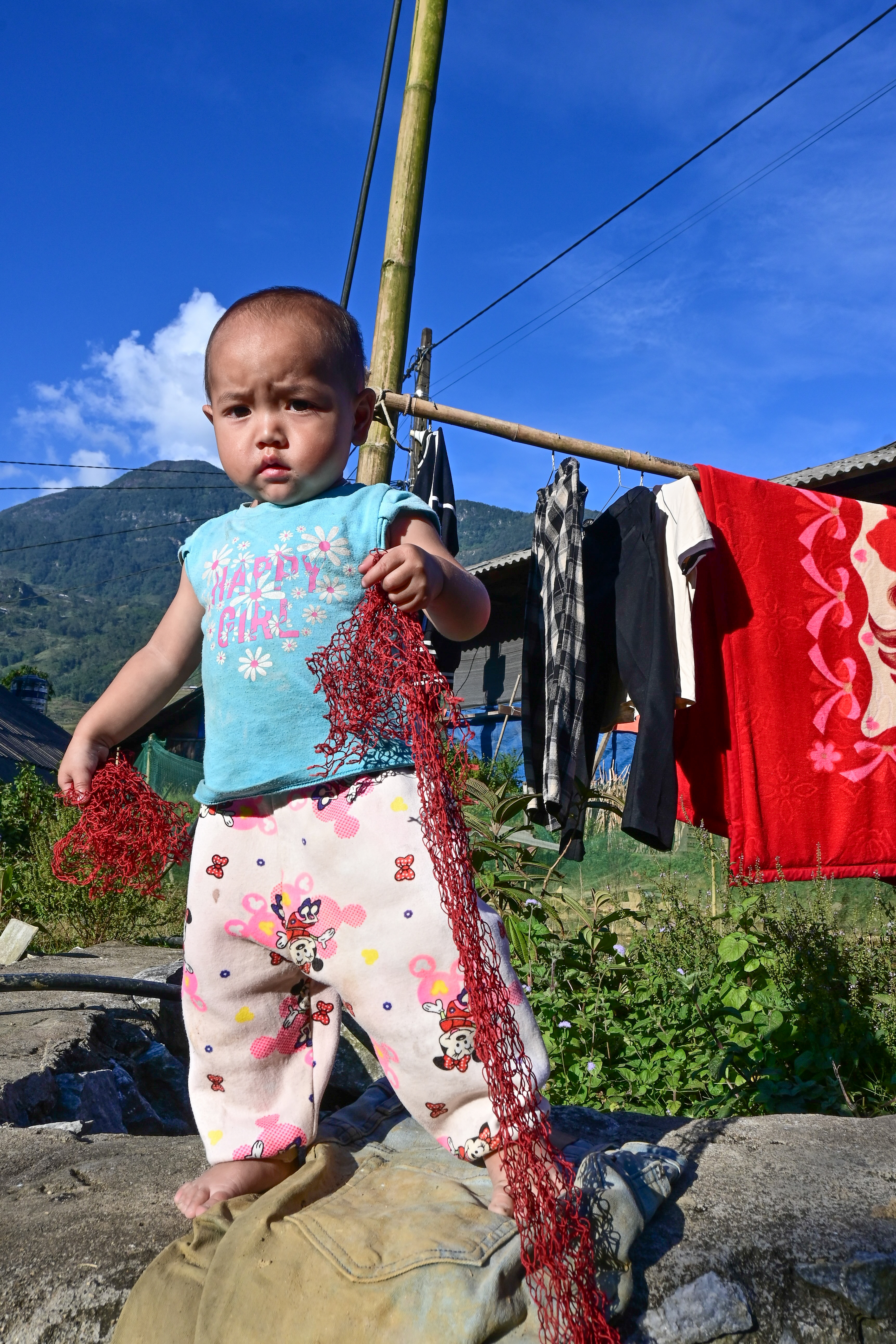
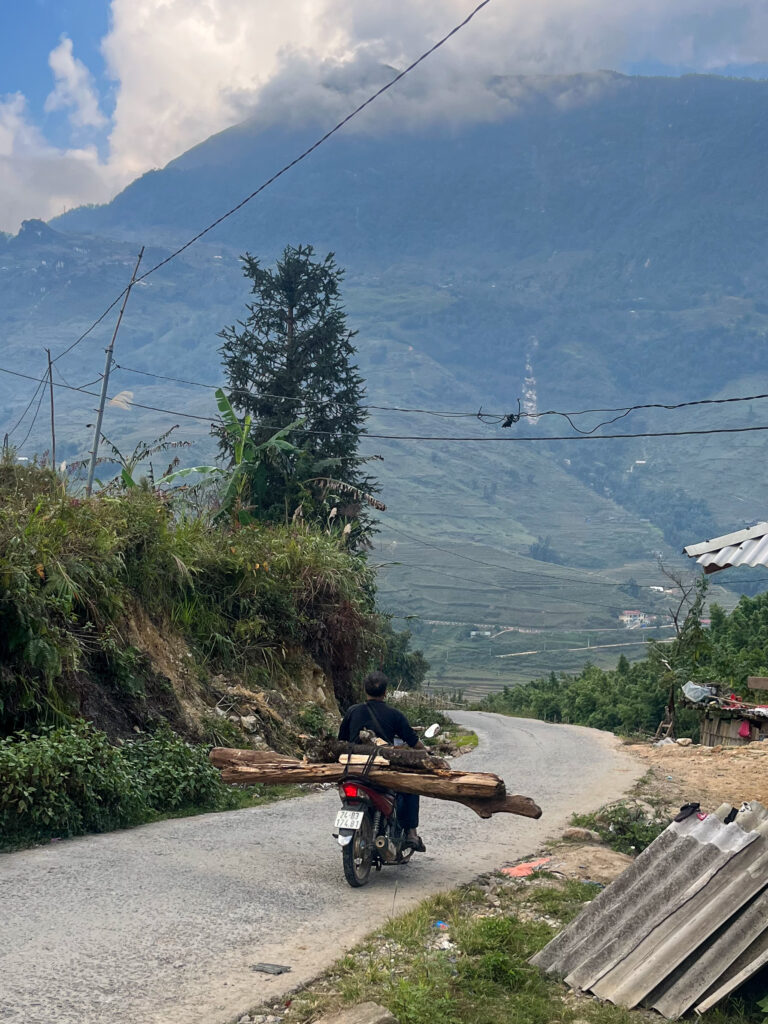
One day we were out wandering when the school kids were heading home after school – our kids were very impressed with how far the kids were walking home from school up some very steep pathways!
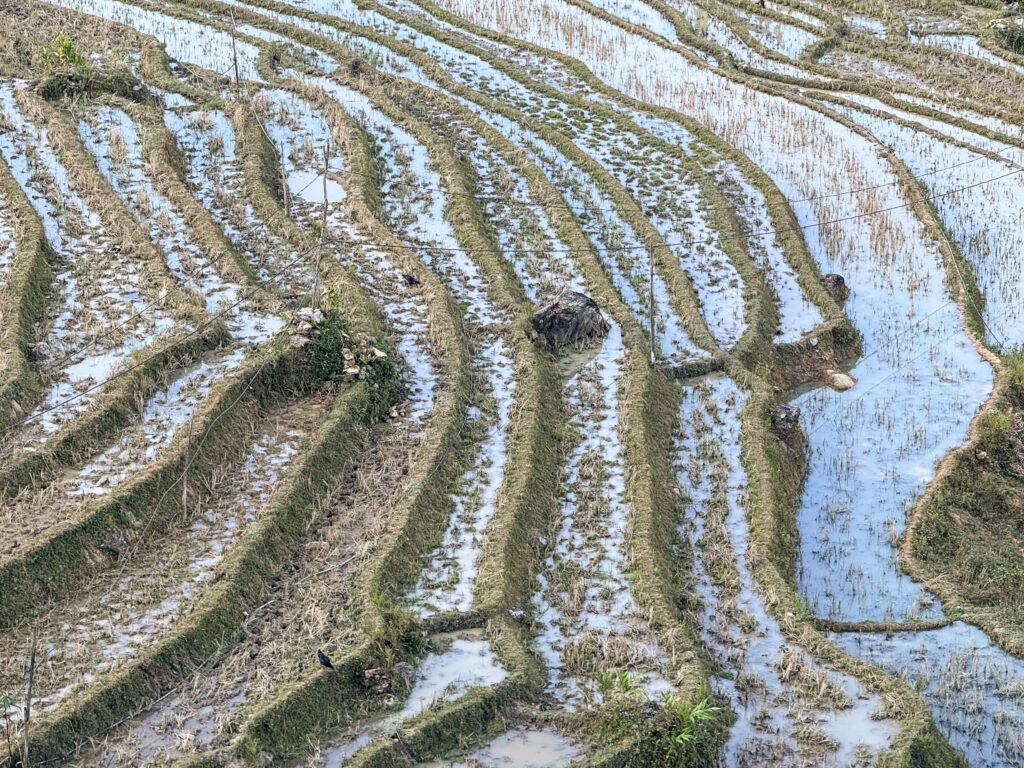
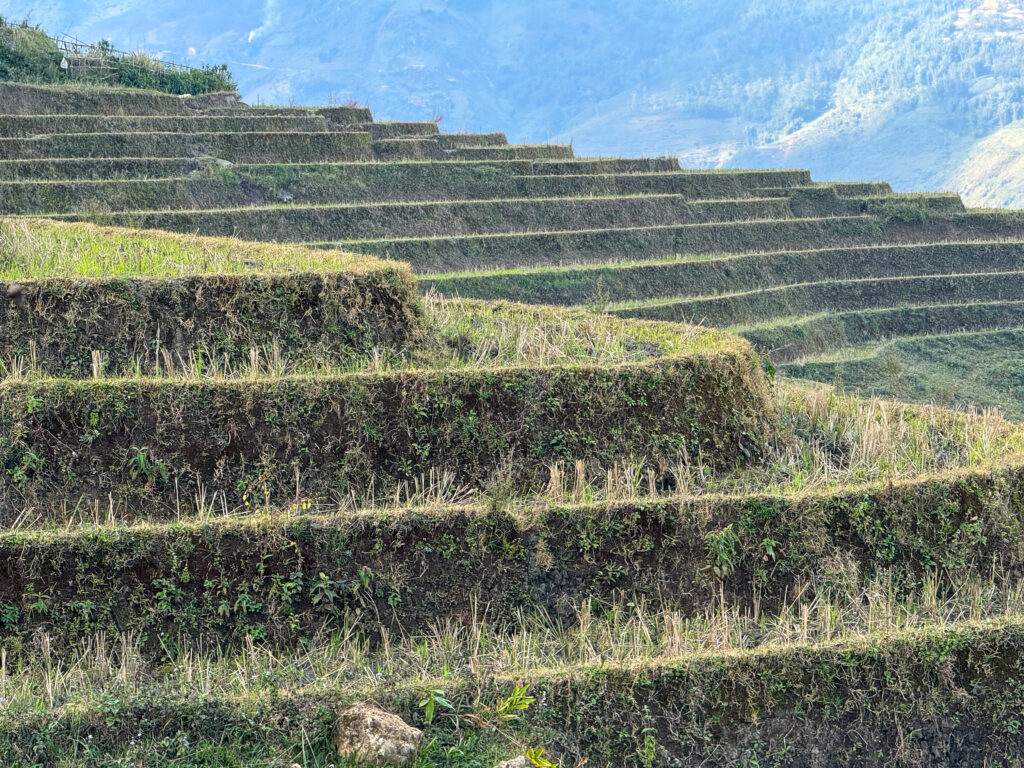
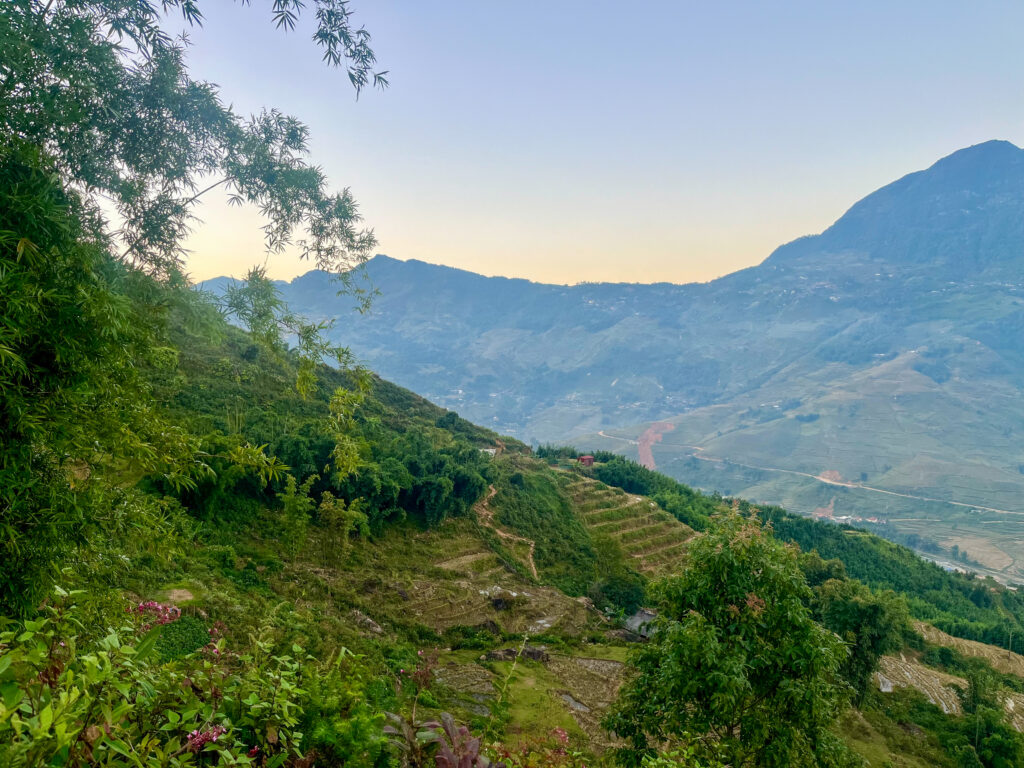
Logan had his birthday in Sa Pa and wonderful Phu surprised him with a cake. We already knew that cakes in Vietnam are delicious so this made a very yummy morning tea!
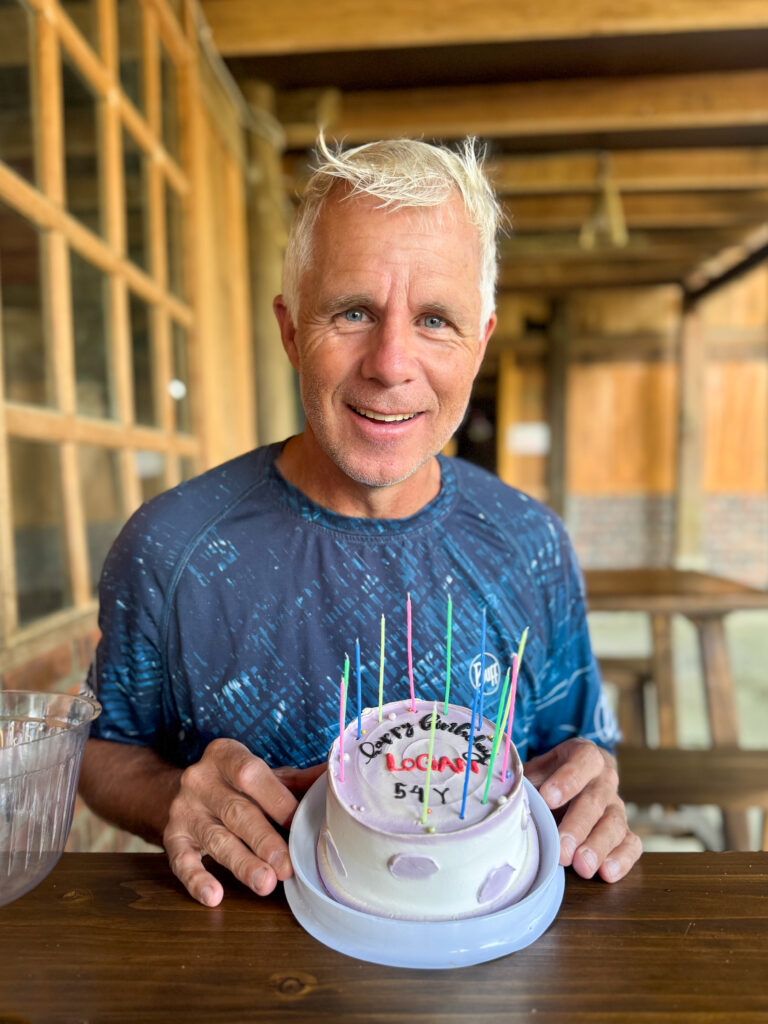
Before leaving Sa Pa, we stopped into the town as we’d only driven through it in the early morning when we’d first arrived from Hanoi. It was a good spot for lunch and a birthday-massage for Logan.
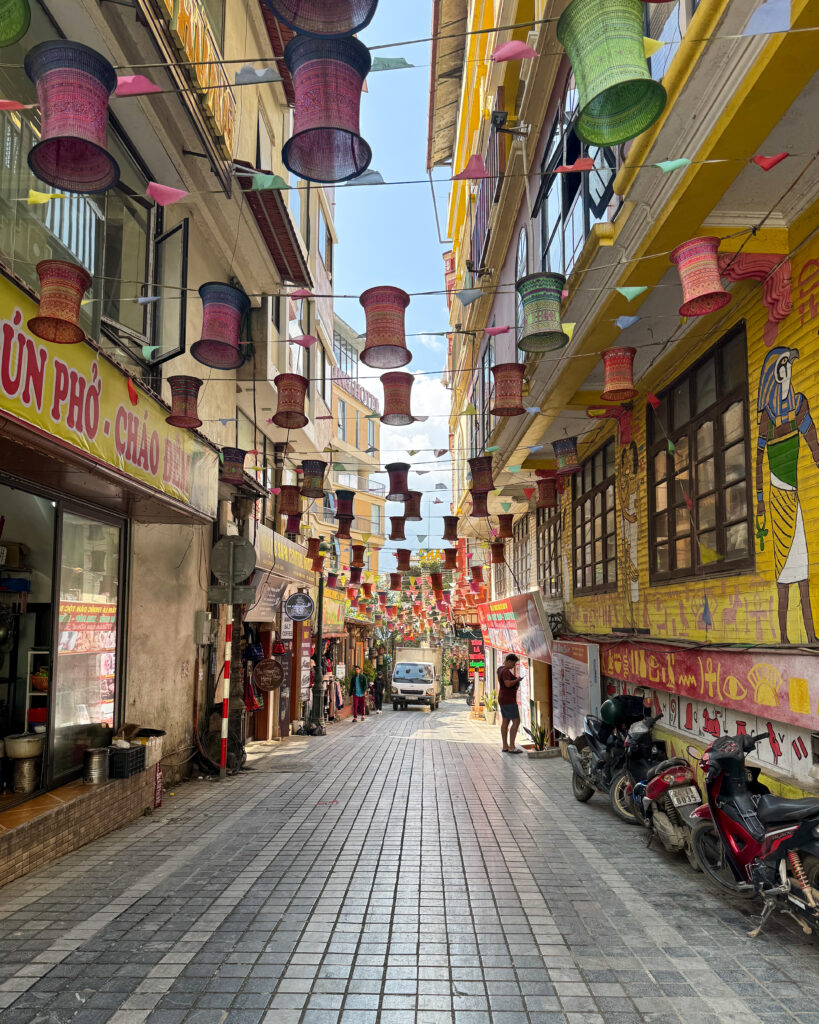
From Sa Pa, we headed briefly back to Hanoi before making our way to Cat Ba, the largest island offshore from Halong Bay, and both a UNESCO Biosphere Reserve and a World Heritage Site.

Due to the phase of the moon (you’ll find out why in a bit), our first evening on Cat Ba was spent on a magical boat trip cruising through the Cat Ba Archipelago. First we meandered past the Cai Beo floating village – the last floating village in northern Vietnam.
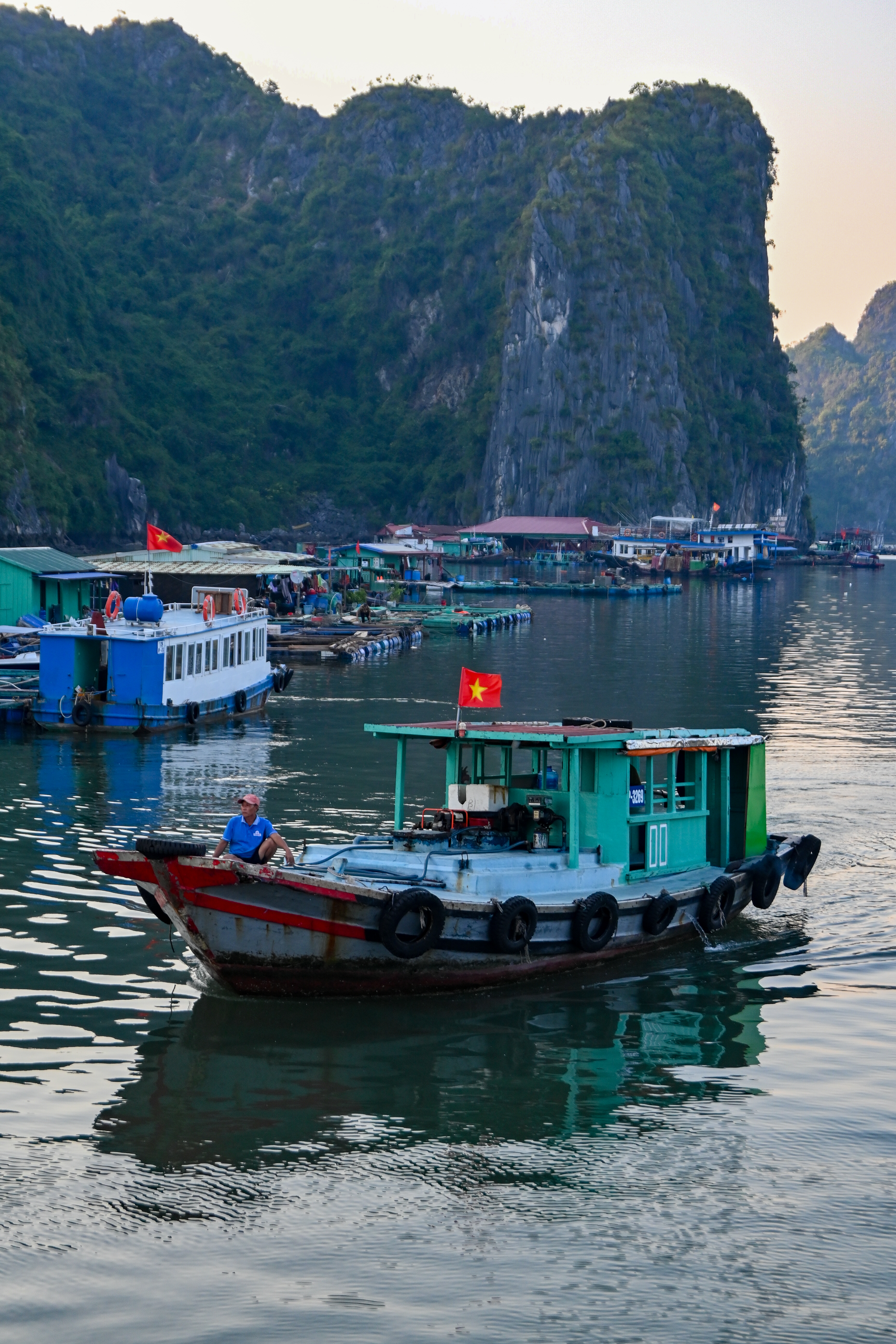

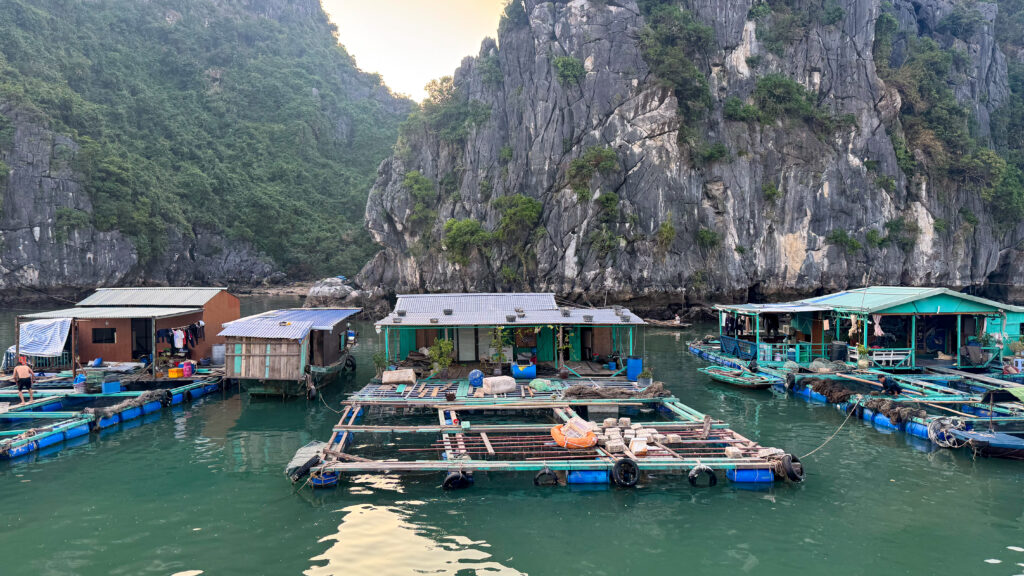


Then we cruised into Lan Ha Bay for swimming (or leaping off the boat if you preferred) as the sun set behind the limestone peaks.

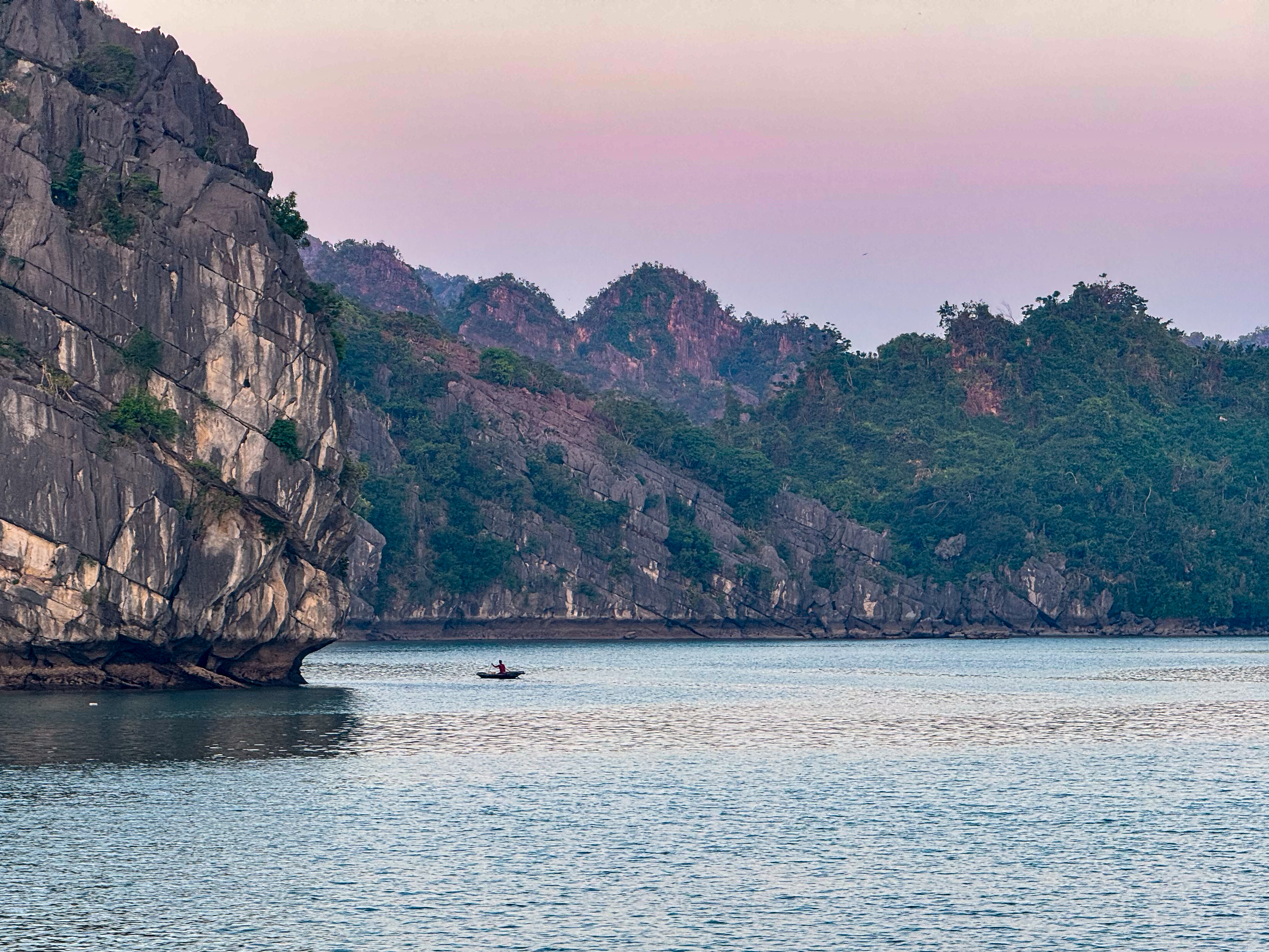
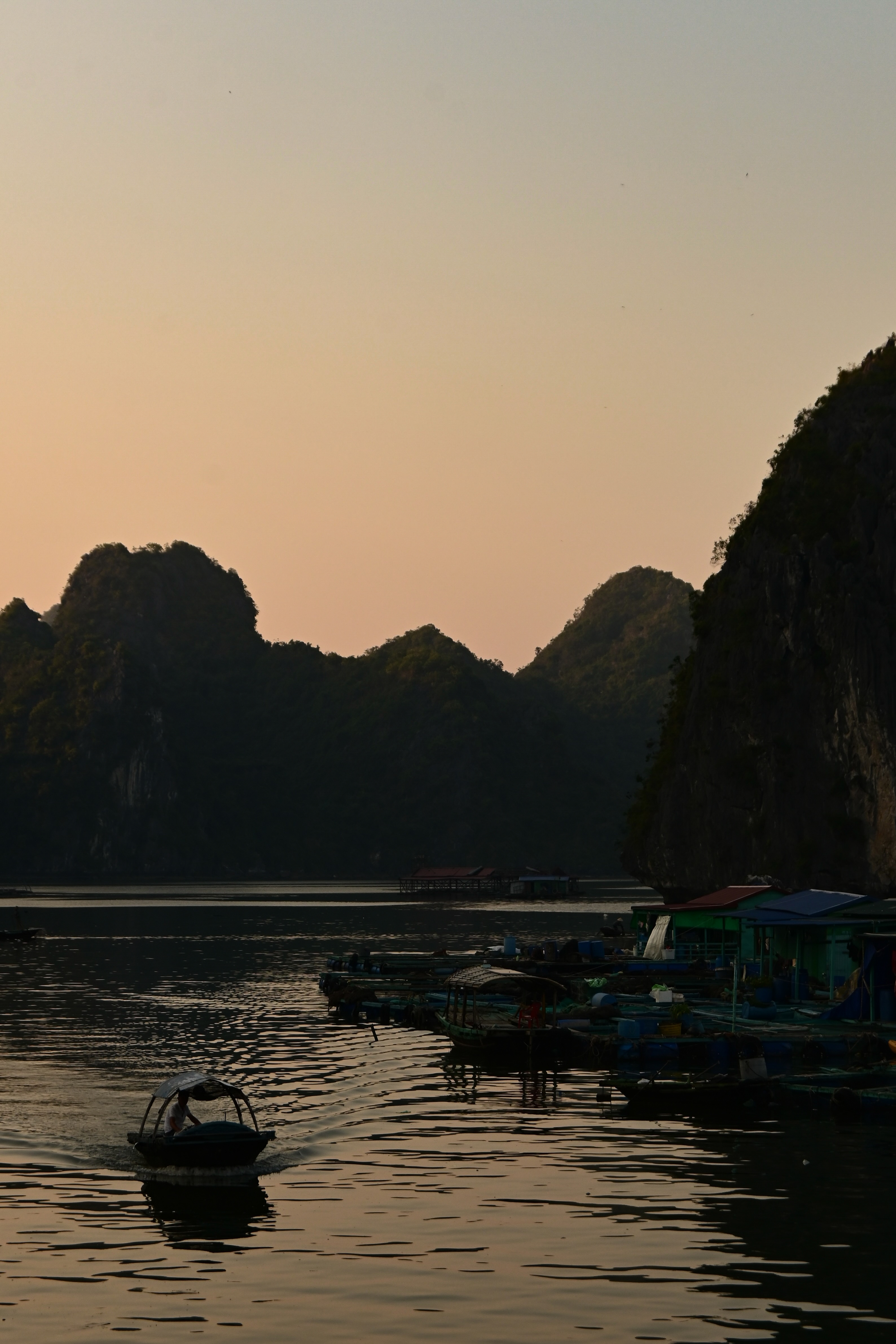

The sunset was so pretty and, as the stars came out, Venus was shining brightly and Matariki was twinkling above us.

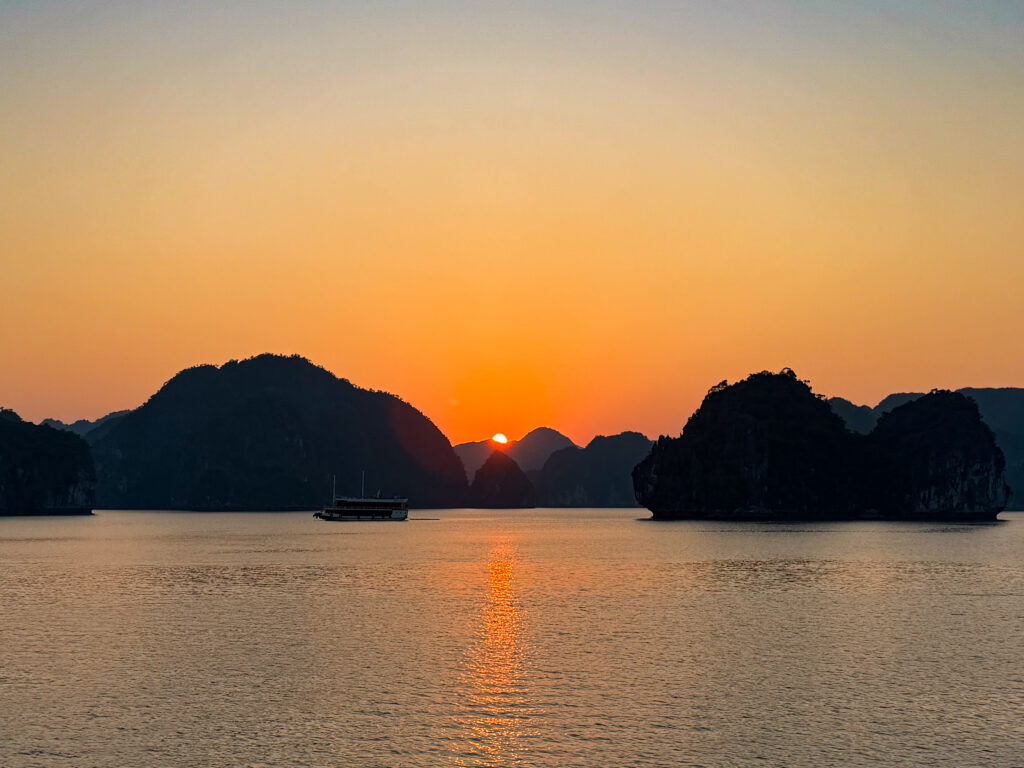
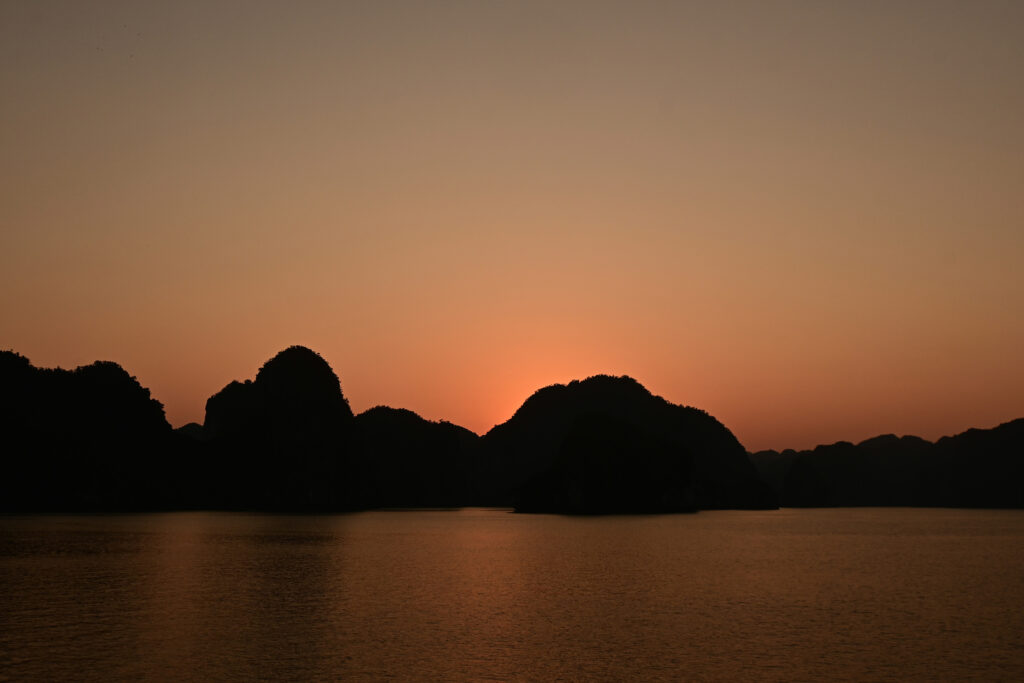
But the absolute highlight of the boat trip was kayaking at night in the uninhabited bays to see the plankton bioluminescence. We had timed our trip for the New Moon and there was no light pollution, which meant it was pitch black…so when we put our hands or paddles in the water, the water lit up with a mass of tiny sparkles! We were then able to climb out of our kayaks in the dark and swim in the sparkling water. It was an incredible experience – we felt like fairies sprinkling magical fairy dust as we ran our hands and bodies through the water. We also saw both glowing fireflies and jellyfish. Unfortunately it was impossible to photograph but it was simply magnificent and a very special experience for us all.
Cat Ba National Park was another highlight with lush bush and incredible panoramic views from the top of Ngu Lam over the endless limestone peaks.
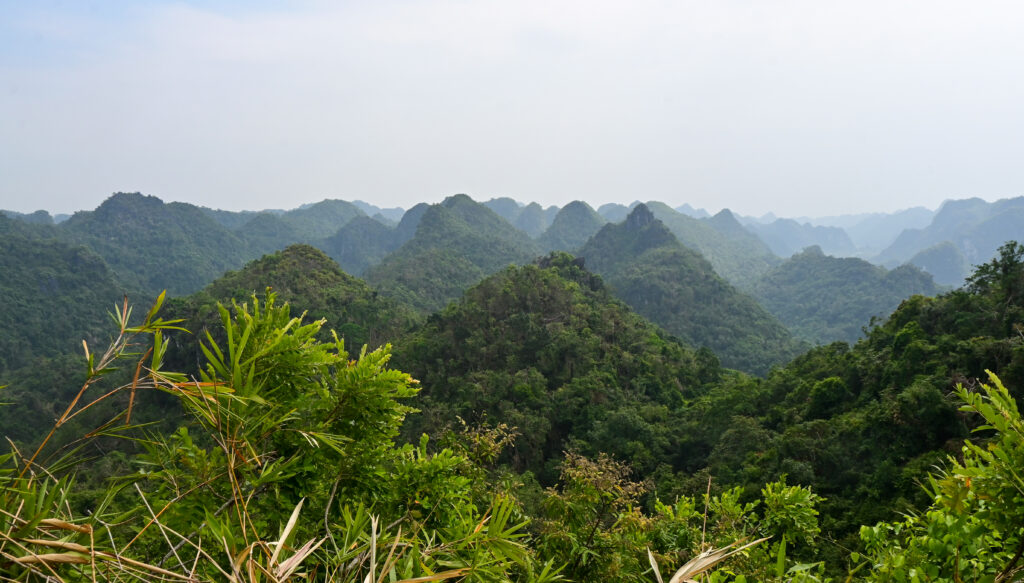


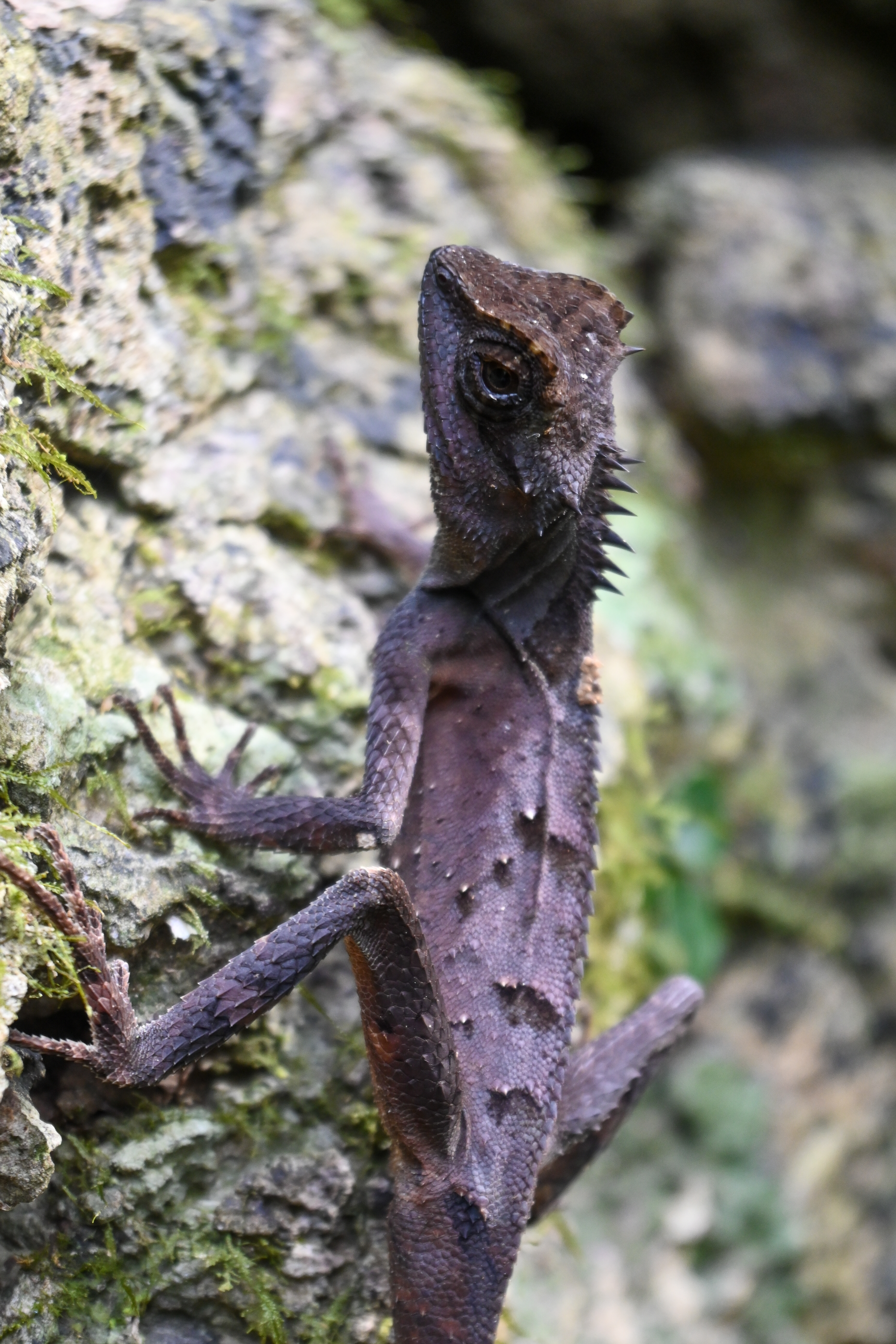
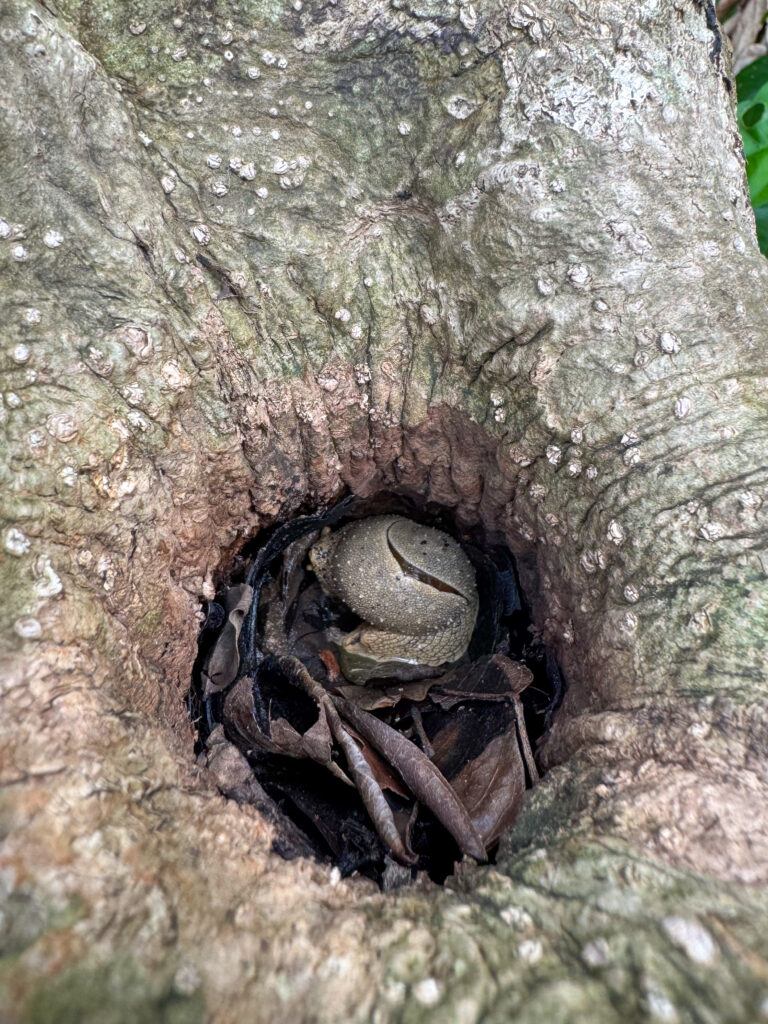
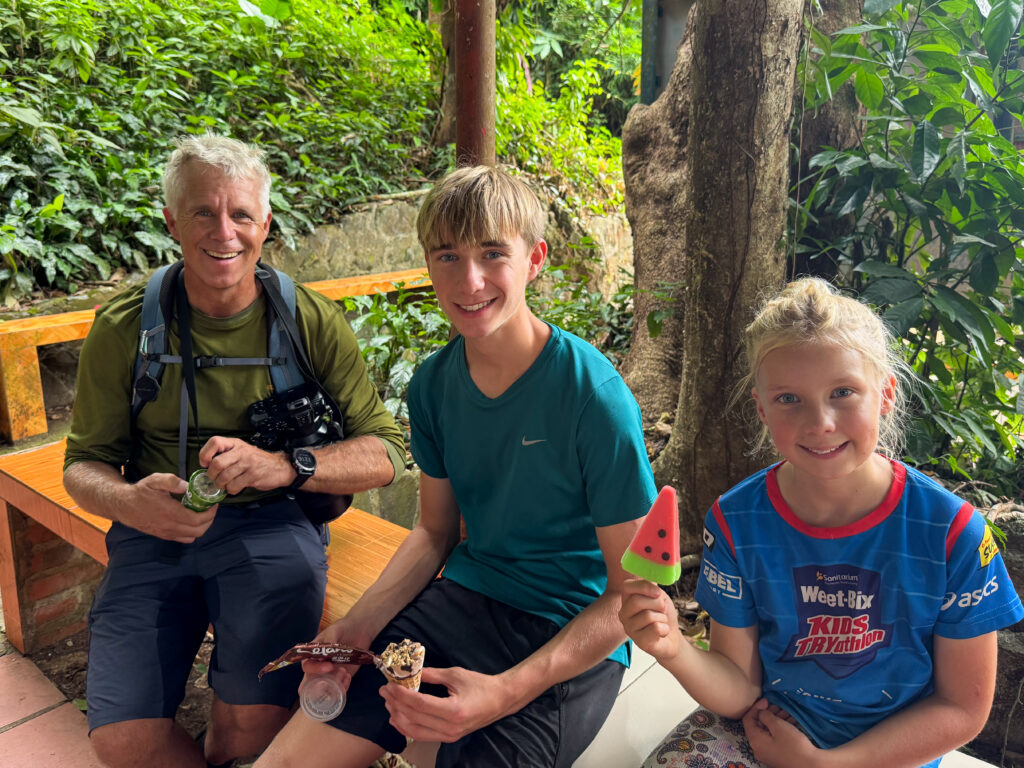
Due to it’s limestone karst landscape (something we’ve become quite familiar with since visiting Gibraltar, Slovenia and Italy) there are some large cave systems on Cat Ba. Although not as huge as some others we have seen, Trung Trang Cave in the Cat Ba National Park was still a remarkable sight.




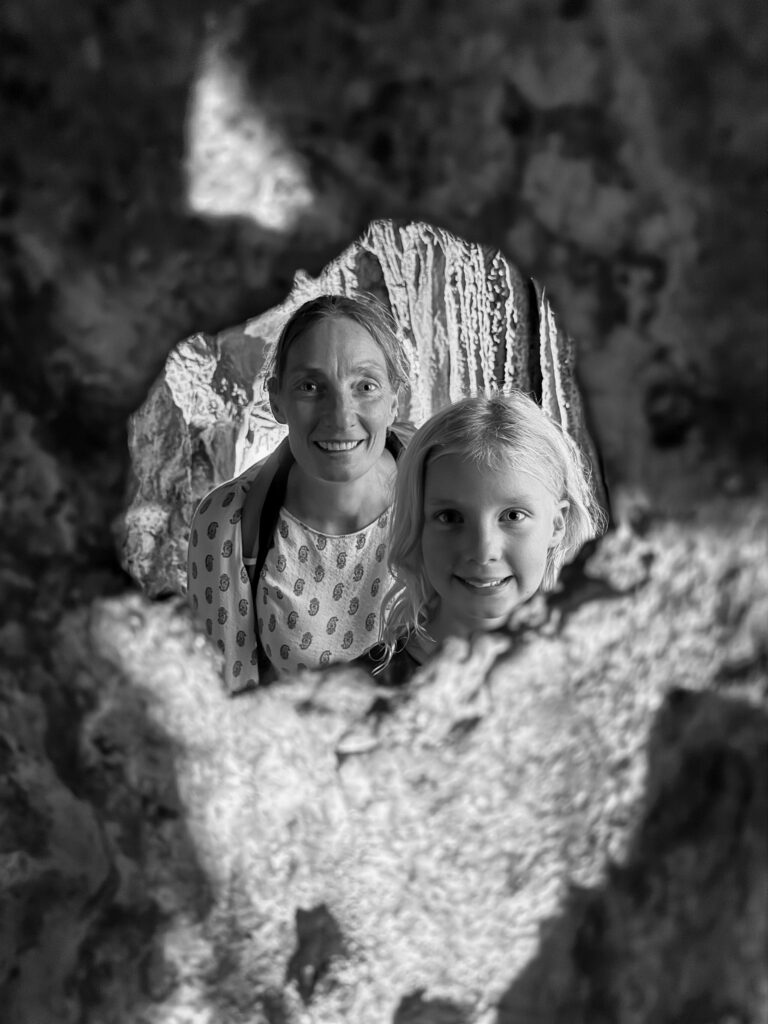

Zara spotted this beautiful dragonfly just outside the cave.

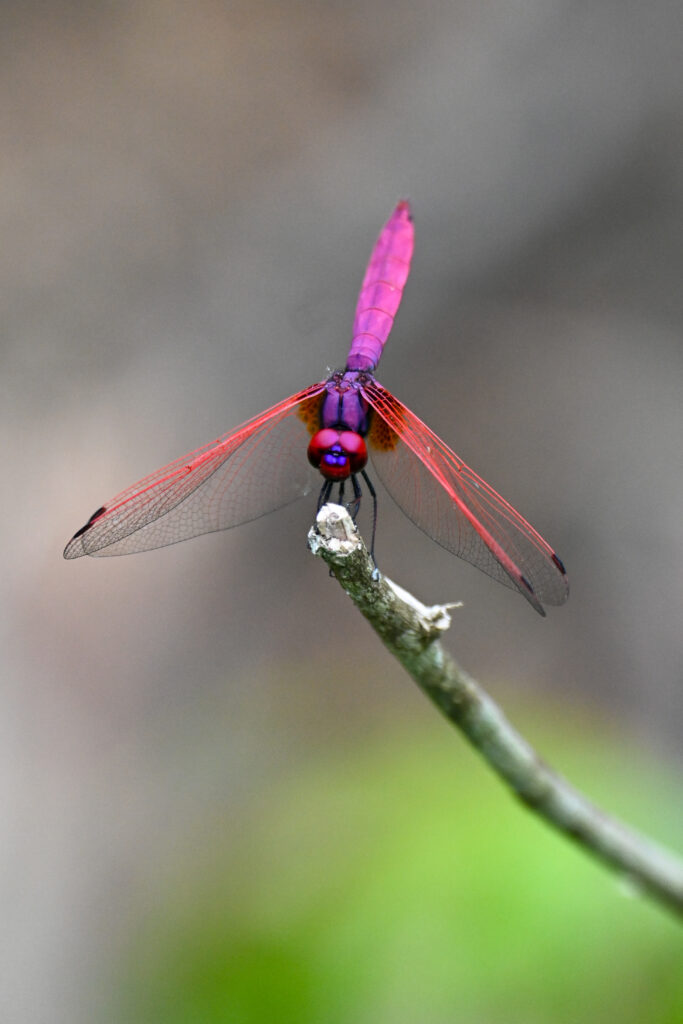
Cat Ba was severely damaged during the extremely destructive Typhoon Yagi in early September. Whilst the impact of Yagi was still so obvious two months later with still so much to rebuild and repair in Cat Ba town and in the small villages across the island, and seeing whole areas of forest that were destroyed, seeing this communications tower bent and broken like a cheap plastic toy really brought home the strength and devastation of such an event.

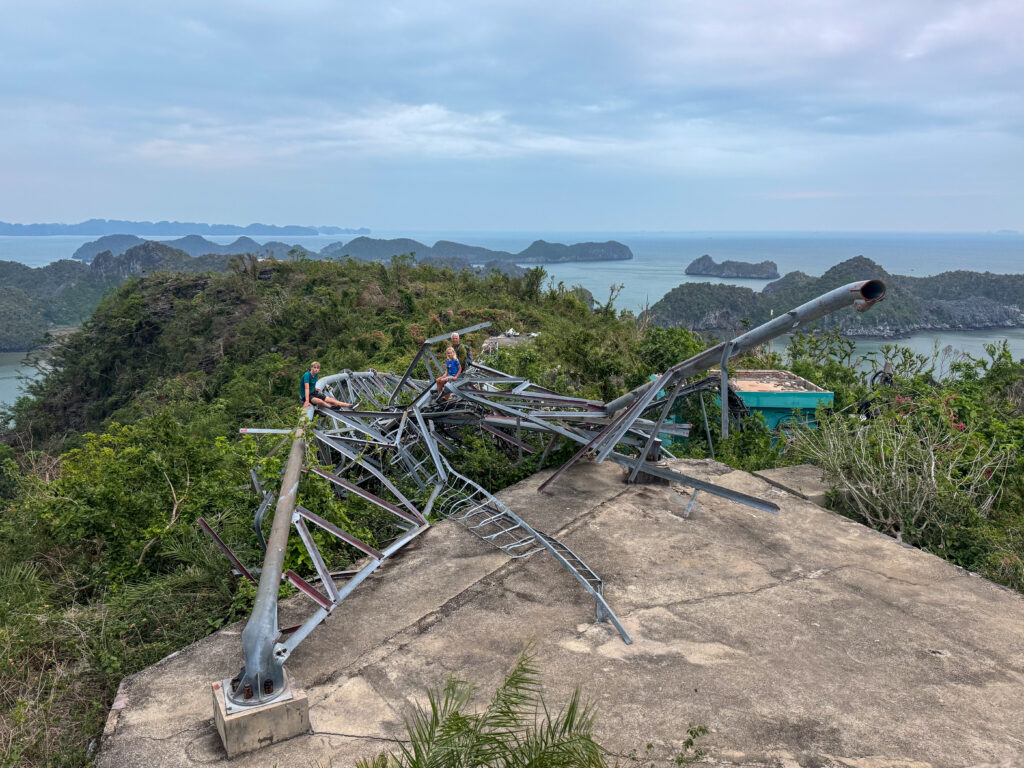

Public transport and taxis are pretty rare beyond the main township of Cat Ba, so we thoroughly enjoyed the freedom to explore Cat Ba that came with hiring scooters. I was a little nervous about dodging people, cars, other scooters, dogs and potholes but the roads were pretty quiet and, like crossing the road in HCMC, it all just seems to flow. And yes, we let Lucas have a turn driving!

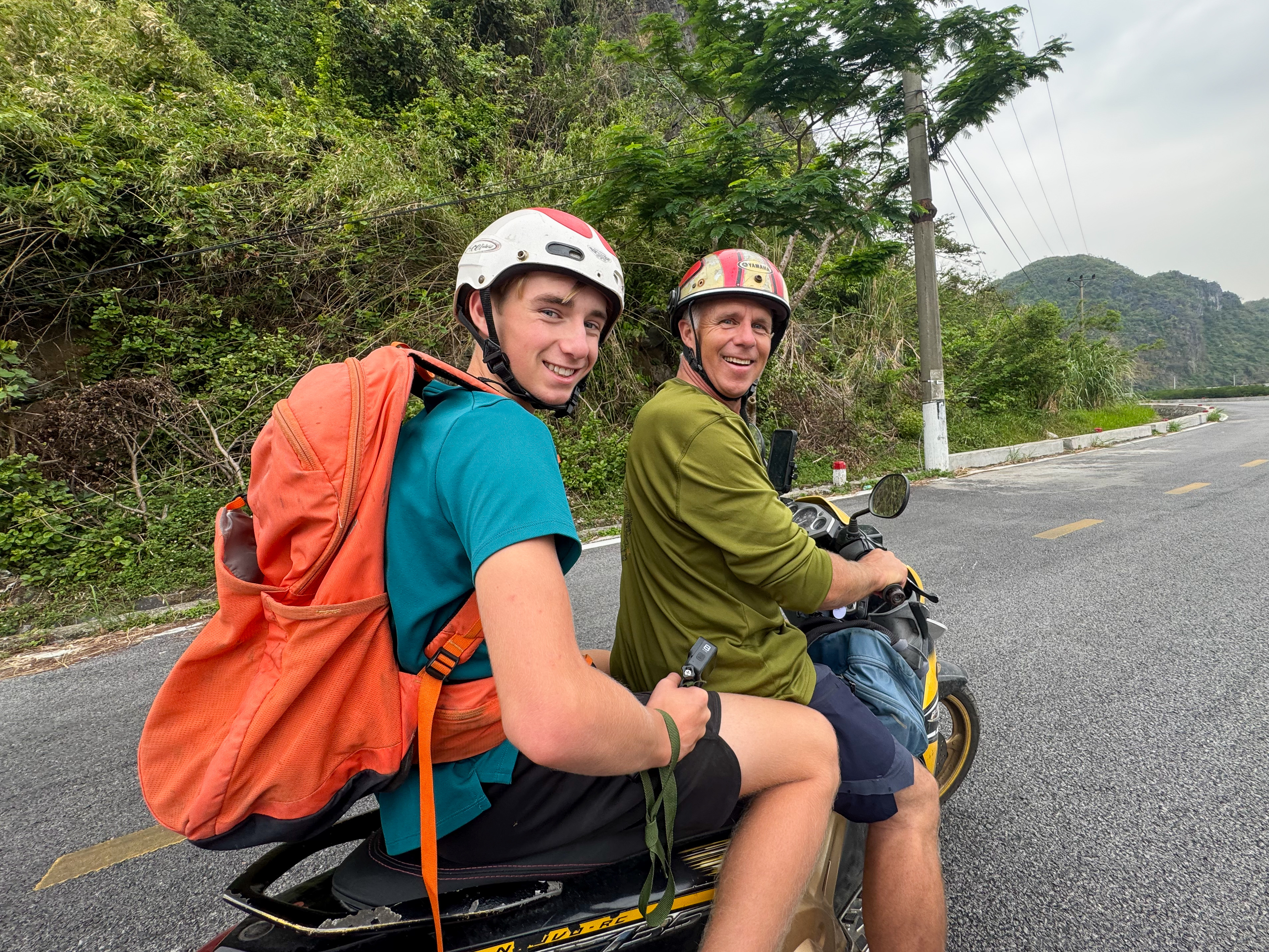
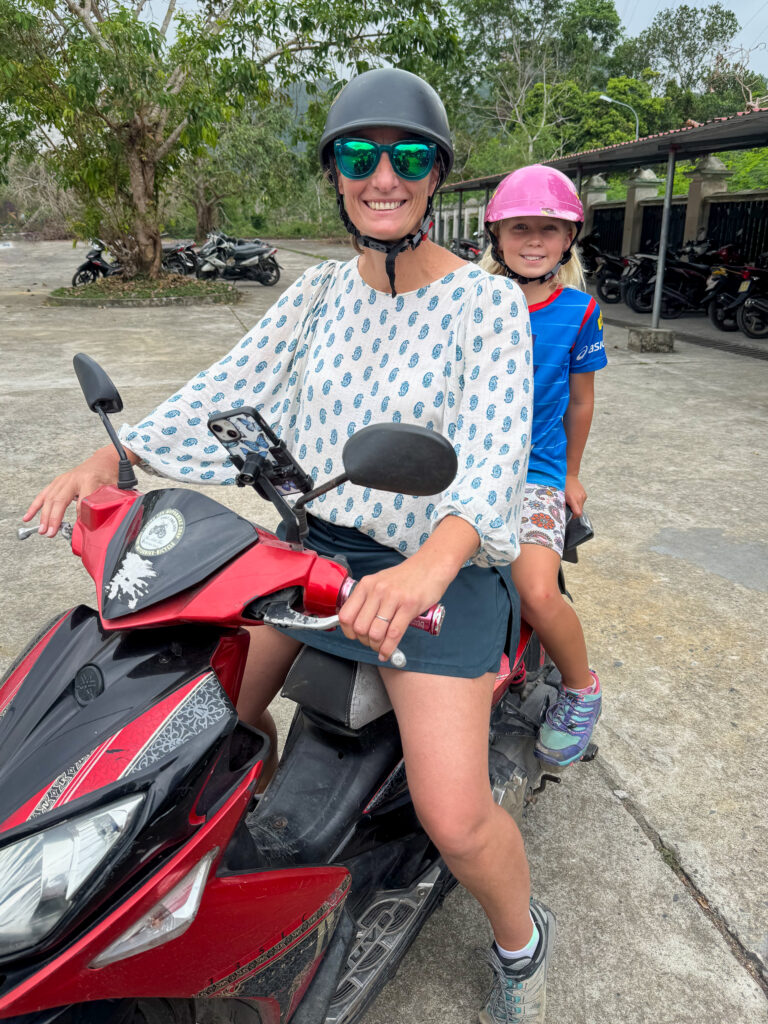
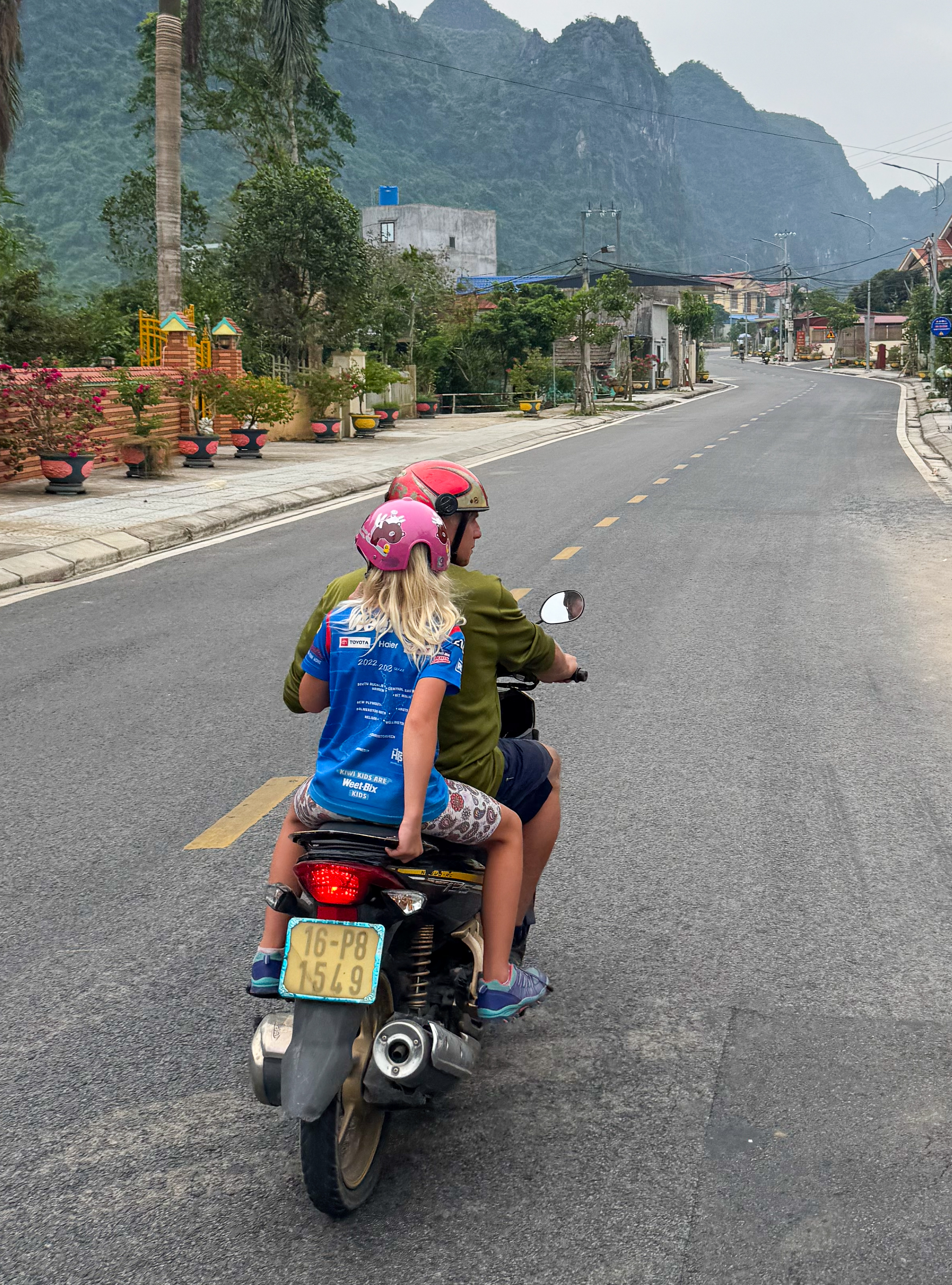
The remainder of our days on Cat Ba were spent exploring, chilling and enjoying the charm of the island. Cat Ba, as well as recovering from the typhoon, is currently under major development (we’re talking 45.7 hectares of reclamation and development and more than US$500 million total investment), with the goal of turning Cat Ba into the first carbon-free tourism island in Vietnam. Whilst it has the potential to be brilliant, we were glad to be there in low season with plenty of space to enjoy its beauty.
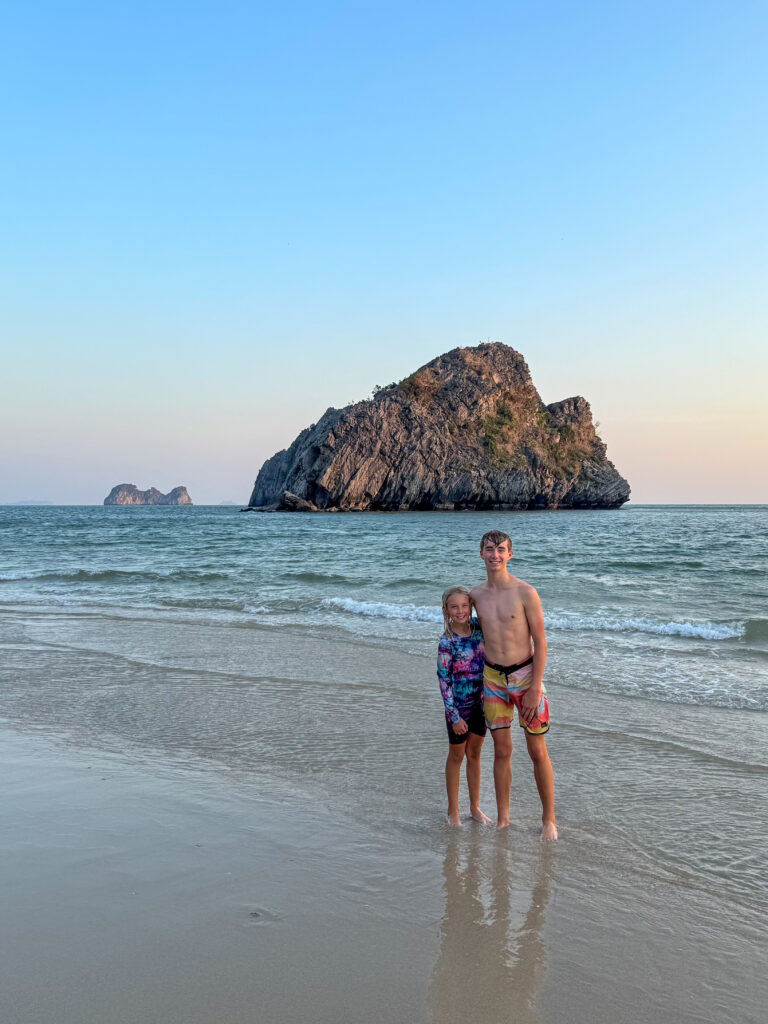

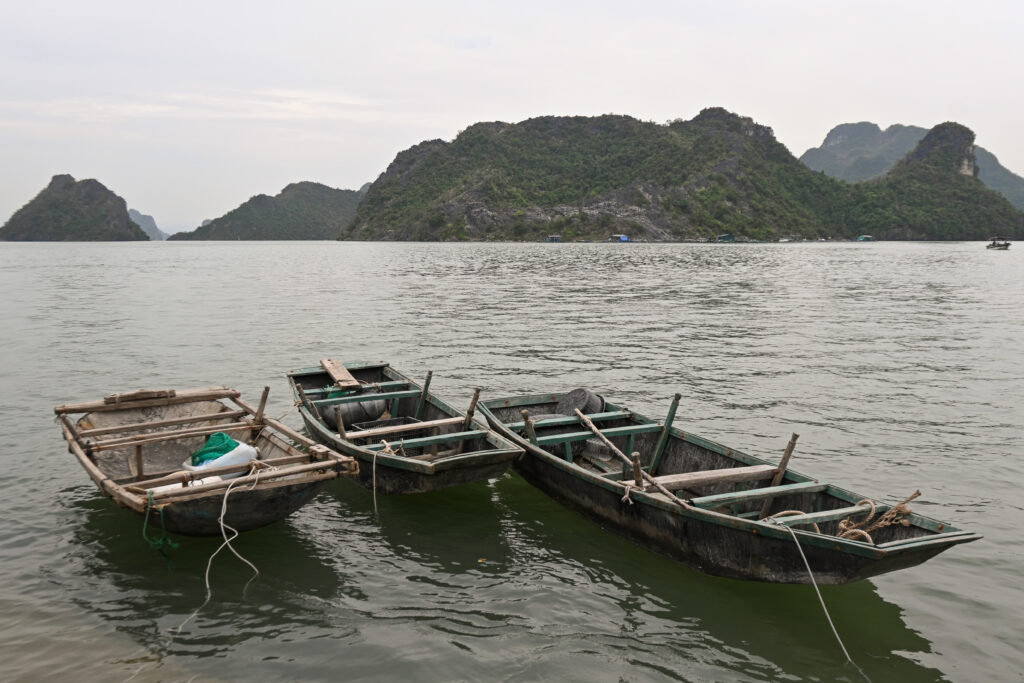
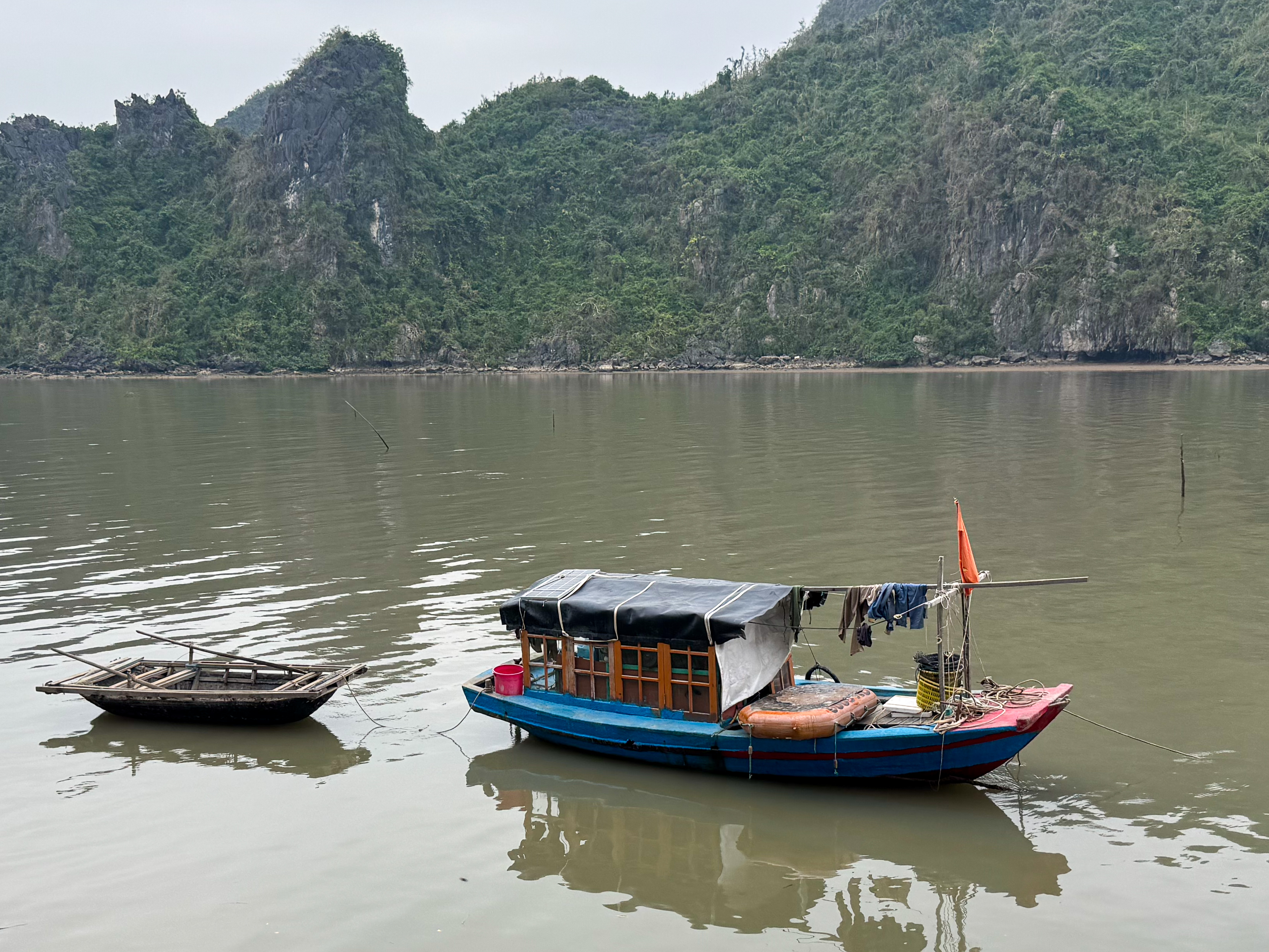
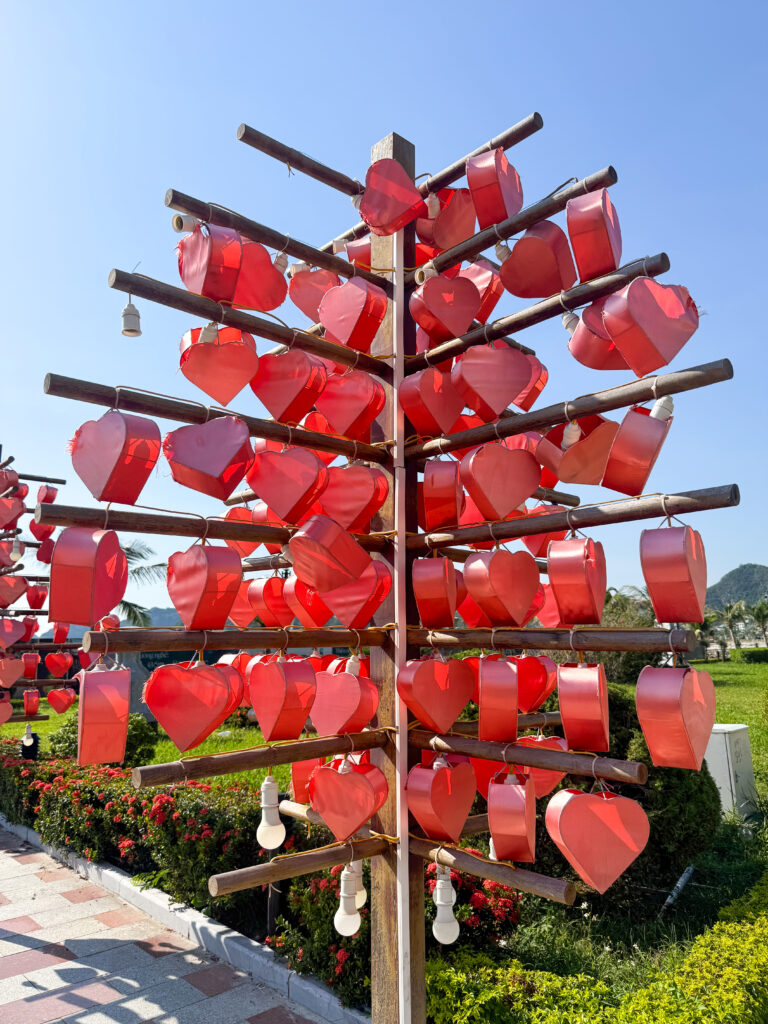

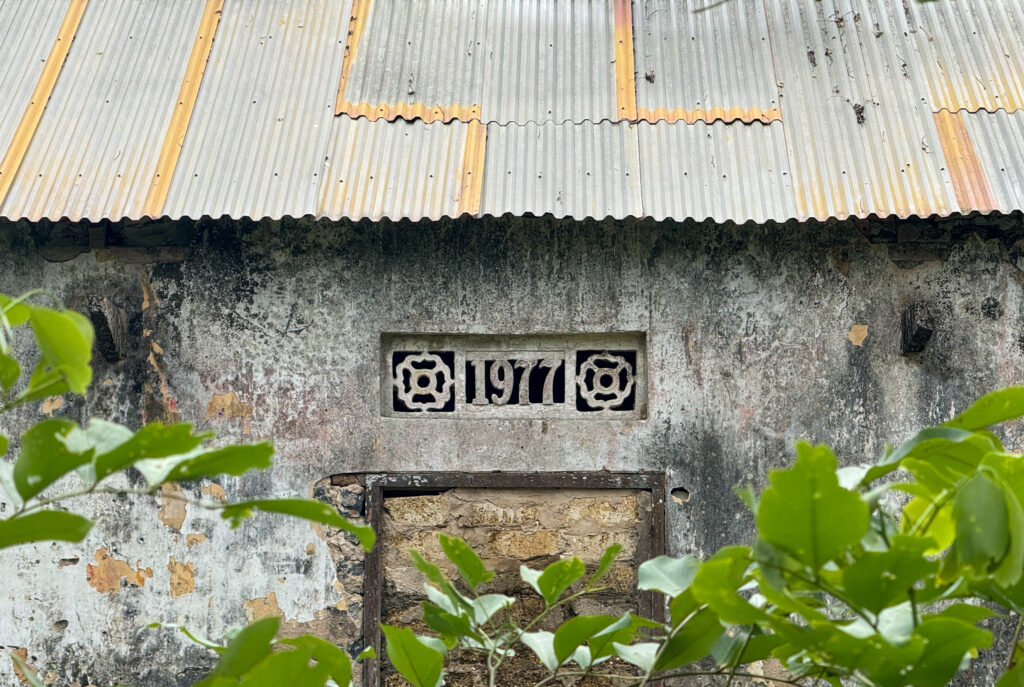

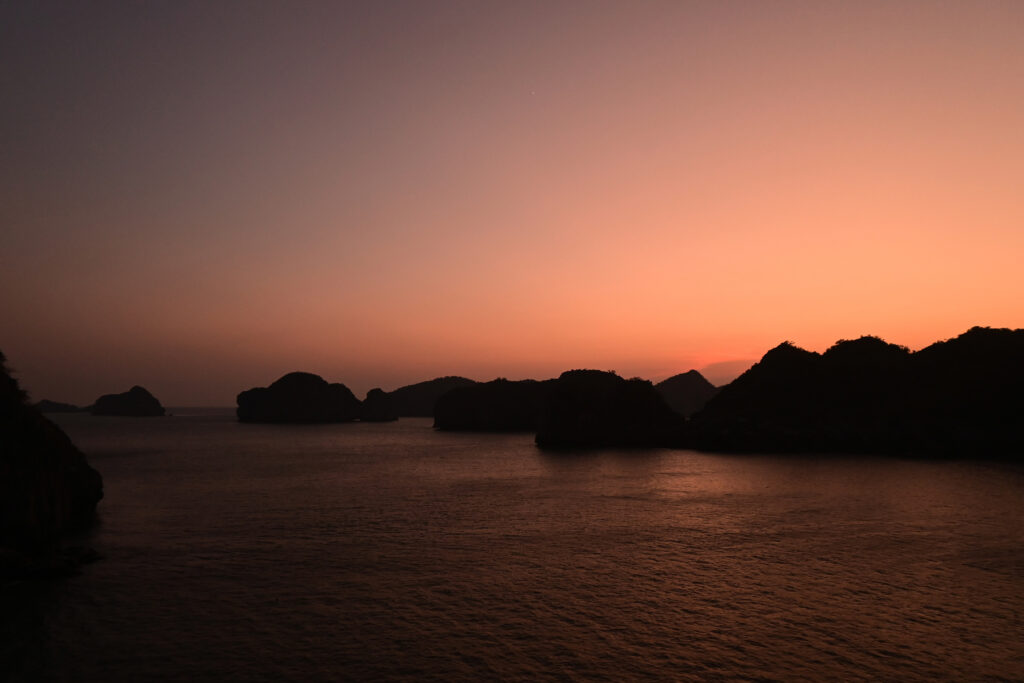
And just like that, we were halfway through our time in Vietnam. From Cat Ba we headed back to the mainland via the local ferry and started our journey south feeling very excited to see more of this beautiful country!
